Dante alighieri purgatory soul Stock Photos and Images
(190)See dante alighieri purgatory soul stock video clipsQuick filters:
Dante alighieri purgatory soul Stock Photos and Images
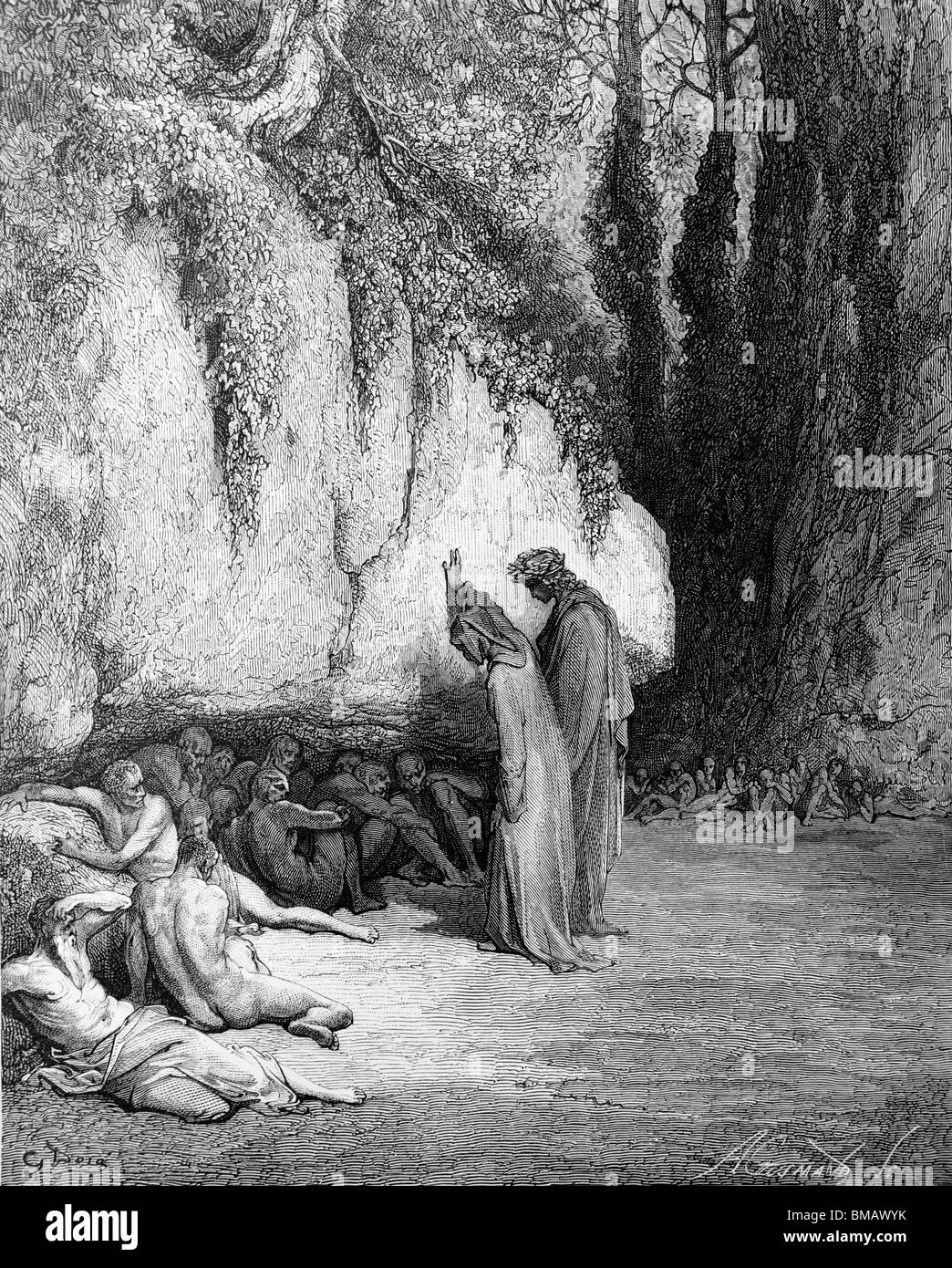 Engraving by Gustave Doré from Dante Alighieri's Divine Comedy 'Purgatory and Paradise'; Dante and Virgil meet the Souls of the Stock Photohttps://www.alamy.com/image-license-details/?v=1https://www.alamy.com/stock-photo-engraving-by-gustave-dor-from-dante-alighieris-divine-comedy-purgatory-29743383.html
Engraving by Gustave Doré from Dante Alighieri's Divine Comedy 'Purgatory and Paradise'; Dante and Virgil meet the Souls of the Stock Photohttps://www.alamy.com/image-license-details/?v=1https://www.alamy.com/stock-photo-engraving-by-gustave-dor-from-dante-alighieris-divine-comedy-purgatory-29743383.htmlRMBMAWYK–Engraving by Gustave Doré from Dante Alighieri's Divine Comedy 'Purgatory and Paradise'; Dante and Virgil meet the Souls of the
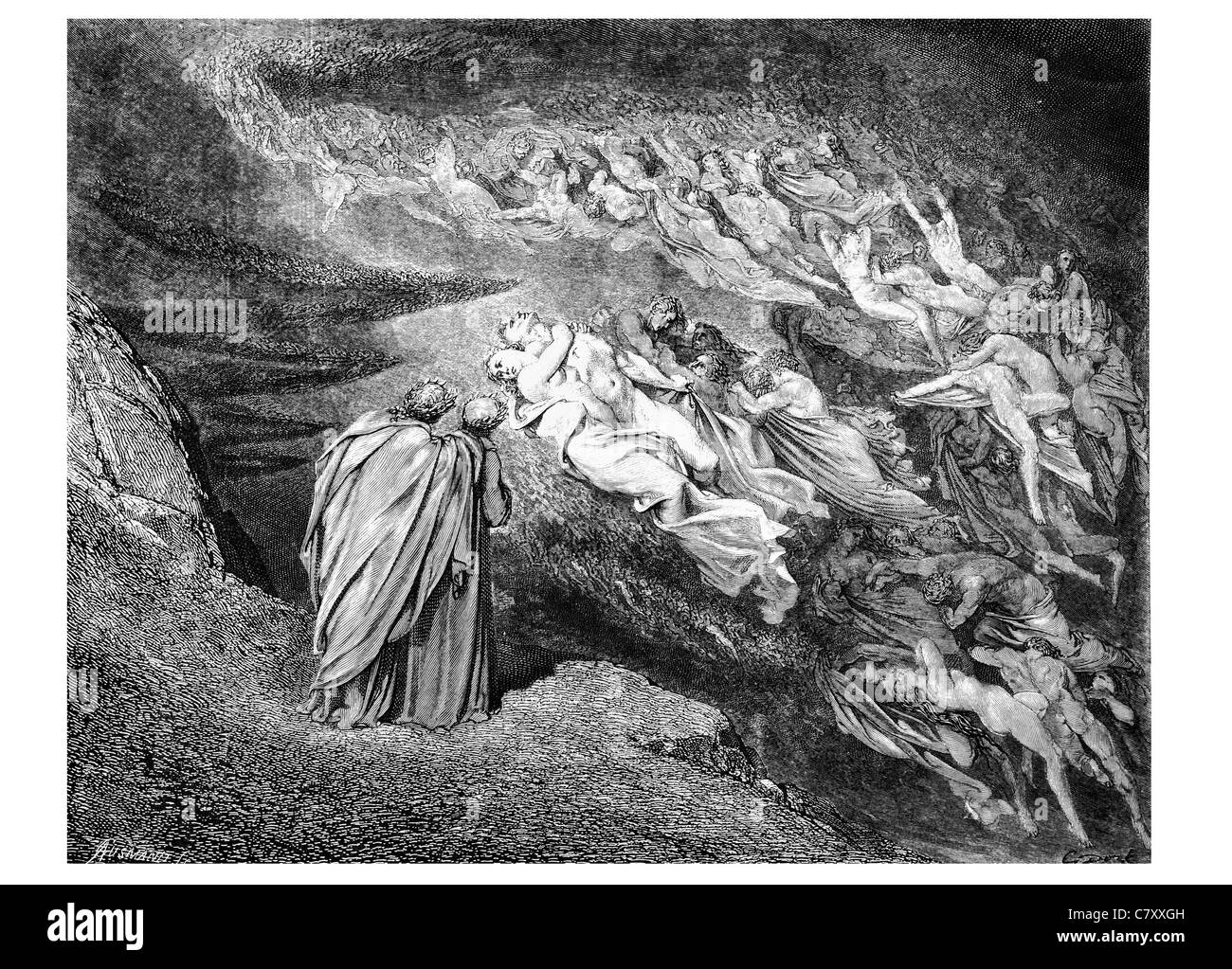 Love brought us to on death Caina waits the soul who split our life The Vision Hell Dante Alighieri Gustave Doré divine comedy Stock Photohttps://www.alamy.com/image-license-details/?v=1https://www.alamy.com/stock-photo-love-brought-us-to-on-death-caina-waits-the-soul-who-split-our-life-39314929.html
Love brought us to on death Caina waits the soul who split our life The Vision Hell Dante Alighieri Gustave Doré divine comedy Stock Photohttps://www.alamy.com/image-license-details/?v=1https://www.alamy.com/stock-photo-love-brought-us-to-on-death-caina-waits-the-soul-who-split-our-life-39314929.htmlRMC7XXGH–Love brought us to on death Caina waits the soul who split our life The Vision Hell Dante Alighieri Gustave Doré divine comedy
 Illustration by Gustave Dore from The Vision of Purgatory and Paradise by Dante Alighieri Stock Photohttps://www.alamy.com/image-license-details/?v=1https://www.alamy.com/stock-photo-illustration-by-gustave-dore-from-the-vision-of-purgatory-and-paradise-50148896.html
Illustration by Gustave Dore from The Vision of Purgatory and Paradise by Dante Alighieri Stock Photohttps://www.alamy.com/image-license-details/?v=1https://www.alamy.com/stock-photo-illustration-by-gustave-dore-from-the-vision-of-purgatory-and-paradise-50148896.htmlRMCWGDC0–Illustration by Gustave Dore from The Vision of Purgatory and Paradise by Dante Alighieri
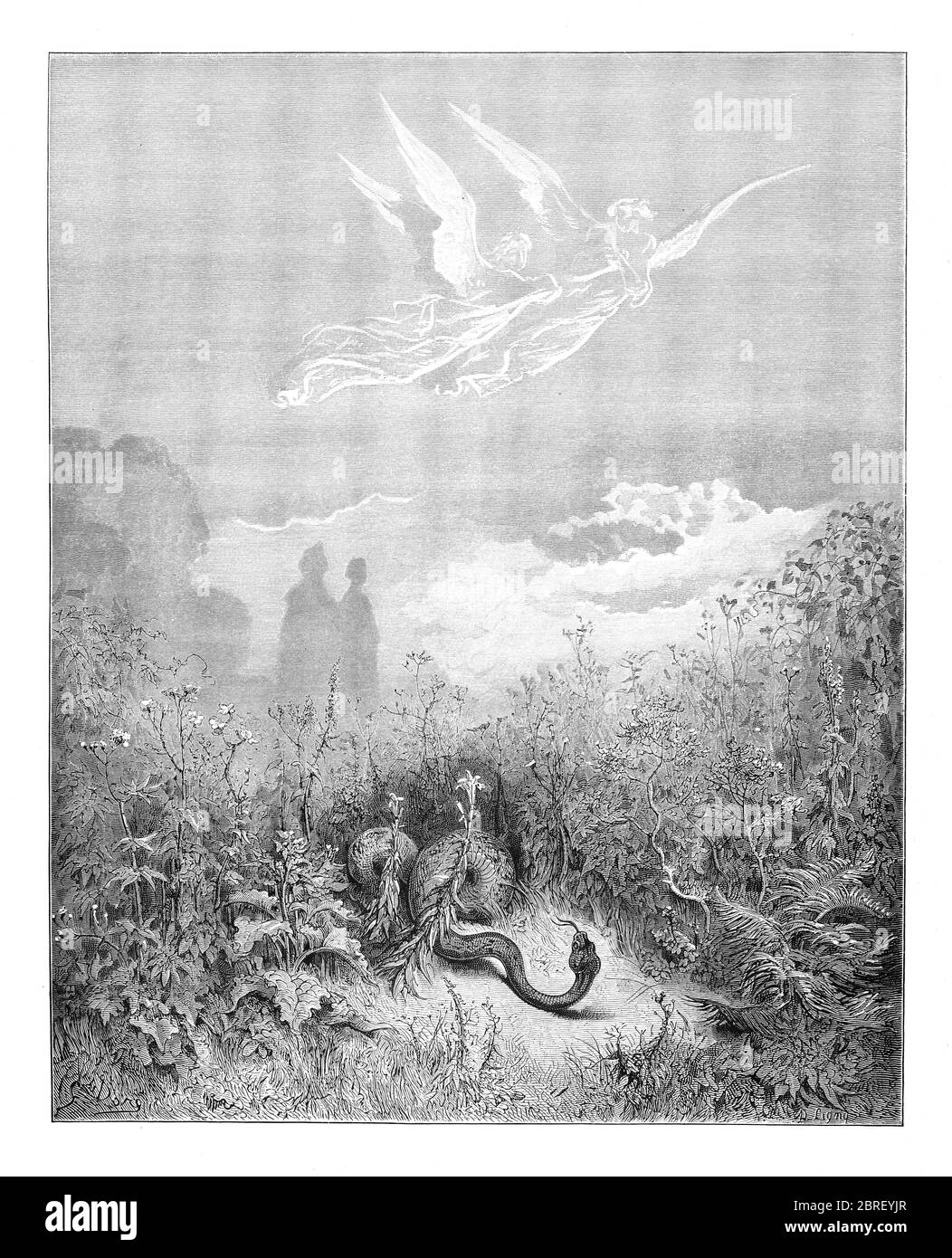 Purgatorio ('Purgatory') is the second part of Dante's Divine Comedy, following the Inferno, and preceding the Paradiso. The poem was written in the early 14th century. It is an allegory telling of the climb of Dante up the Mount of Purgatory, guided by the Roman poet Virgil, except for the last four cantos at which point Beatrice takes over as Dante's guide. Purgatory in the poem is depicted as a mountain in the Southern Hemisphere, consisting of a bottom section (Ante-Purgatory), seven levels of suffering and spiritual growth (associated with the seven deadly sins), and finally the Earthly P Stock Photohttps://www.alamy.com/image-license-details/?v=1https://www.alamy.com/purgatorio-purgatory-is-the-second-part-of-dantes-divine-comedy-following-the-inferno-and-preceding-the-paradiso-the-poem-was-written-in-the-early-14th-century-it-is-an-allegory-telling-of-the-climb-of-dante-up-the-mount-of-purgatory-guided-by-the-roman-poet-virgil-except-for-the-last-four-cantos-at-which-point-beatrice-takes-over-as-dantes-guide-purgatory-in-the-poem-is-depicted-as-a-mountain-in-the-southern-hemisphere-consisting-of-a-bottom-section-ante-purgatory-seven-levels-of-suffering-and-spiritual-growth-associated-with-the-seven-deadly-sins-and-finally-the-earthly-p-image358673471.html
Purgatorio ('Purgatory') is the second part of Dante's Divine Comedy, following the Inferno, and preceding the Paradiso. The poem was written in the early 14th century. It is an allegory telling of the climb of Dante up the Mount of Purgatory, guided by the Roman poet Virgil, except for the last four cantos at which point Beatrice takes over as Dante's guide. Purgatory in the poem is depicted as a mountain in the Southern Hemisphere, consisting of a bottom section (Ante-Purgatory), seven levels of suffering and spiritual growth (associated with the seven deadly sins), and finally the Earthly P Stock Photohttps://www.alamy.com/image-license-details/?v=1https://www.alamy.com/purgatorio-purgatory-is-the-second-part-of-dantes-divine-comedy-following-the-inferno-and-preceding-the-paradiso-the-poem-was-written-in-the-early-14th-century-it-is-an-allegory-telling-of-the-climb-of-dante-up-the-mount-of-purgatory-guided-by-the-roman-poet-virgil-except-for-the-last-four-cantos-at-which-point-beatrice-takes-over-as-dantes-guide-purgatory-in-the-poem-is-depicted-as-a-mountain-in-the-southern-hemisphere-consisting-of-a-bottom-section-ante-purgatory-seven-levels-of-suffering-and-spiritual-growth-associated-with-the-seven-deadly-sins-and-finally-the-earthly-p-image358673471.htmlRF2BREYJR–Purgatorio ('Purgatory') is the second part of Dante's Divine Comedy, following the Inferno, and preceding the Paradiso. The poem was written in the early 14th century. It is an allegory telling of the climb of Dante up the Mount of Purgatory, guided by the Roman poet Virgil, except for the last four cantos at which point Beatrice takes over as Dante's guide. Purgatory in the poem is depicted as a mountain in the Southern Hemisphere, consisting of a bottom section (Ante-Purgatory), seven levels of suffering and spiritual growth (associated with the seven deadly sins), and finally the Earthly P
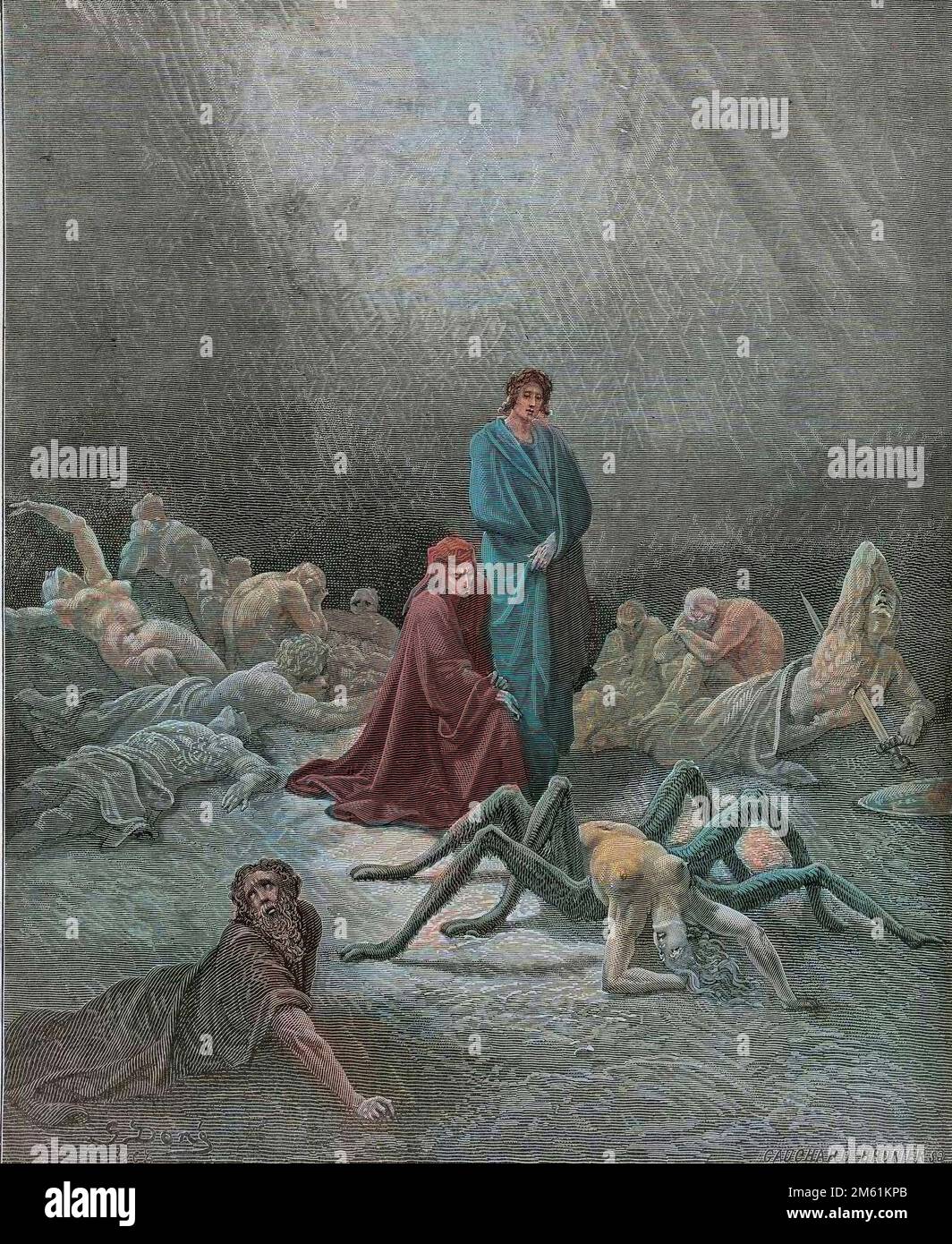 The Divine Comedy by Dante Alighieri , Purgatorio, Canto 12 : Dante views the soul of Arachne - by Dante Alighieri (1265-1321) - Illustration de Gustave Dore (1832-1883), 1885 - Colorisation digitale d'apres l'originale Stock Photohttps://www.alamy.com/image-license-details/?v=1https://www.alamy.com/the-divine-comedy-by-dante-alighieri-purgatorio-canto-12-dante-views-the-soul-of-arachne-by-dante-alighieri-1265-1321-illustration-de-gustave-dore-1832-1883-1885-colorisation-digitale-dapres-loriginale-image502826083.html
The Divine Comedy by Dante Alighieri , Purgatorio, Canto 12 : Dante views the soul of Arachne - by Dante Alighieri (1265-1321) - Illustration de Gustave Dore (1832-1883), 1885 - Colorisation digitale d'apres l'originale Stock Photohttps://www.alamy.com/image-license-details/?v=1https://www.alamy.com/the-divine-comedy-by-dante-alighieri-purgatorio-canto-12-dante-views-the-soul-of-arachne-by-dante-alighieri-1265-1321-illustration-de-gustave-dore-1832-1883-1885-colorisation-digitale-dapres-loriginale-image502826083.htmlRM2M61KPB–The Divine Comedy by Dante Alighieri , Purgatorio, Canto 12 : Dante views the soul of Arachne - by Dante Alighieri (1265-1321) - Illustration de Gustave Dore (1832-1883), 1885 - Colorisation digitale d'apres l'originale
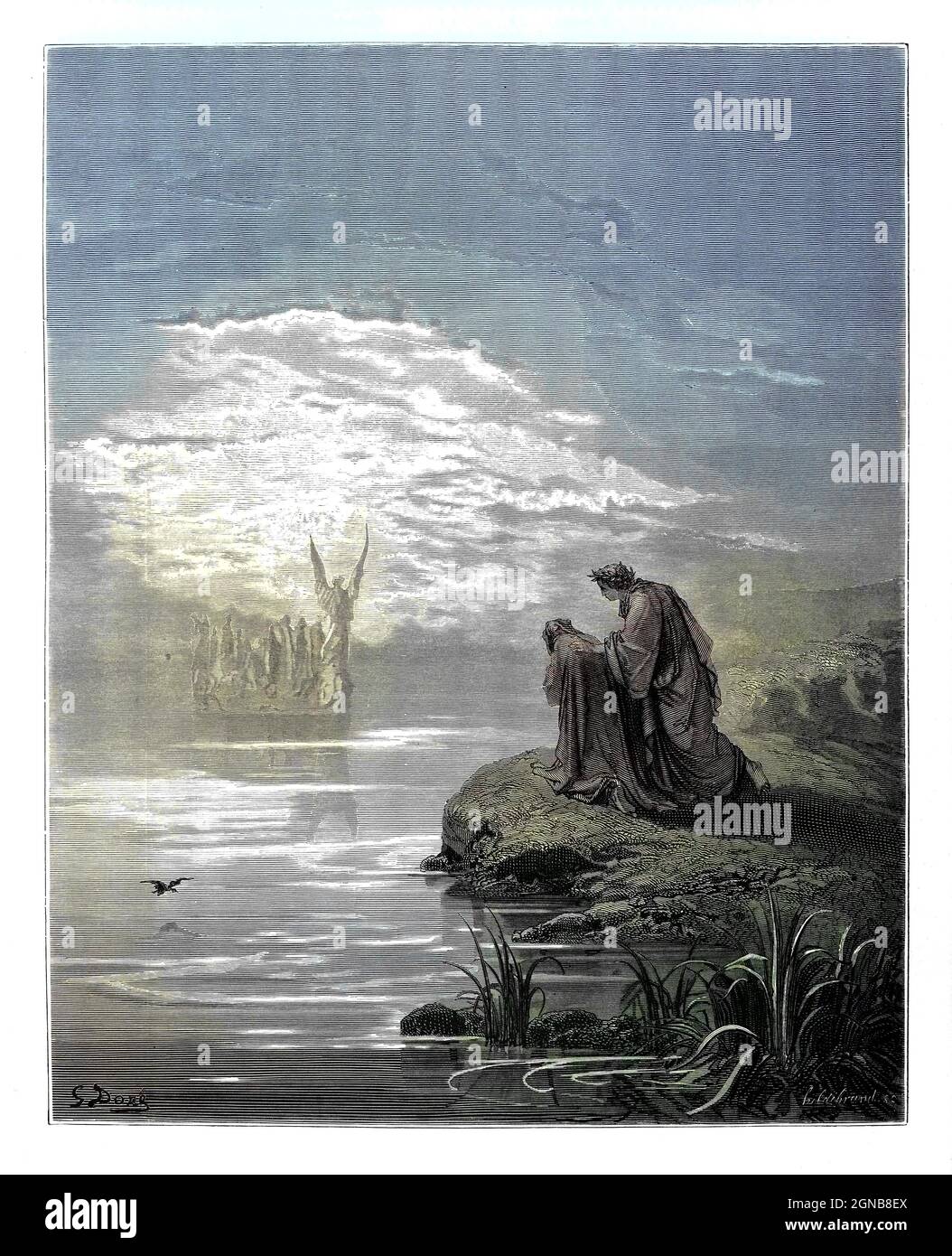 Machine colorised Purgatorio ('Purgatory') is the second part of Dante's Divine Comedy, following the Inferno, and preceding the Paradiso. The poem was written in the early 14th century. It is an allegory telling of the climb of Dante up the Mount of Purgatory, guided by the Roman poet Virgil, except for the last four cantos at which point Beatrice takes over as Dante's guide. Purgatory in the poem is depicted as a mountain in the Southern Hemisphere, consisting of a bottom section (Ante-Purgatory), seven levels of suffering and spiritual growth (associated with the seven deadly sins), and fin Stock Photohttps://www.alamy.com/image-license-details/?v=1https://www.alamy.com/machine-colorised-purgatorio-purgatory-is-the-second-part-of-dantes-divine-comedy-following-the-inferno-and-preceding-the-paradiso-the-poem-was-written-in-the-early-14th-century-it-is-an-allegory-telling-of-the-climb-of-dante-up-the-mount-of-purgatory-guided-by-the-roman-poet-virgil-except-for-the-last-four-cantos-at-which-point-beatrice-takes-over-as-dantes-guide-purgatory-in-the-poem-is-depicted-as-a-mountain-in-the-southern-hemisphere-consisting-of-a-bottom-section-ante-purgatory-seven-levels-of-suffering-and-spiritual-growth-associated-with-the-seven-deadly-sins-and-fin-image443415138.html
Machine colorised Purgatorio ('Purgatory') is the second part of Dante's Divine Comedy, following the Inferno, and preceding the Paradiso. The poem was written in the early 14th century. It is an allegory telling of the climb of Dante up the Mount of Purgatory, guided by the Roman poet Virgil, except for the last four cantos at which point Beatrice takes over as Dante's guide. Purgatory in the poem is depicted as a mountain in the Southern Hemisphere, consisting of a bottom section (Ante-Purgatory), seven levels of suffering and spiritual growth (associated with the seven deadly sins), and fin Stock Photohttps://www.alamy.com/image-license-details/?v=1https://www.alamy.com/machine-colorised-purgatorio-purgatory-is-the-second-part-of-dantes-divine-comedy-following-the-inferno-and-preceding-the-paradiso-the-poem-was-written-in-the-early-14th-century-it-is-an-allegory-telling-of-the-climb-of-dante-up-the-mount-of-purgatory-guided-by-the-roman-poet-virgil-except-for-the-last-four-cantos-at-which-point-beatrice-takes-over-as-dantes-guide-purgatory-in-the-poem-is-depicted-as-a-mountain-in-the-southern-hemisphere-consisting-of-a-bottom-section-ante-purgatory-seven-levels-of-suffering-and-spiritual-growth-associated-with-the-seven-deadly-sins-and-fin-image443415138.htmlRM2GNB8EX–Machine colorised Purgatorio ('Purgatory') is the second part of Dante's Divine Comedy, following the Inferno, and preceding the Paradiso. The poem was written in the early 14th century. It is an allegory telling of the climb of Dante up the Mount of Purgatory, guided by the Roman poet Virgil, except for the last four cantos at which point Beatrice takes over as Dante's guide. Purgatory in the poem is depicted as a mountain in the Southern Hemisphere, consisting of a bottom section (Ante-Purgatory), seven levels of suffering and spiritual growth (associated with the seven deadly sins), and fin
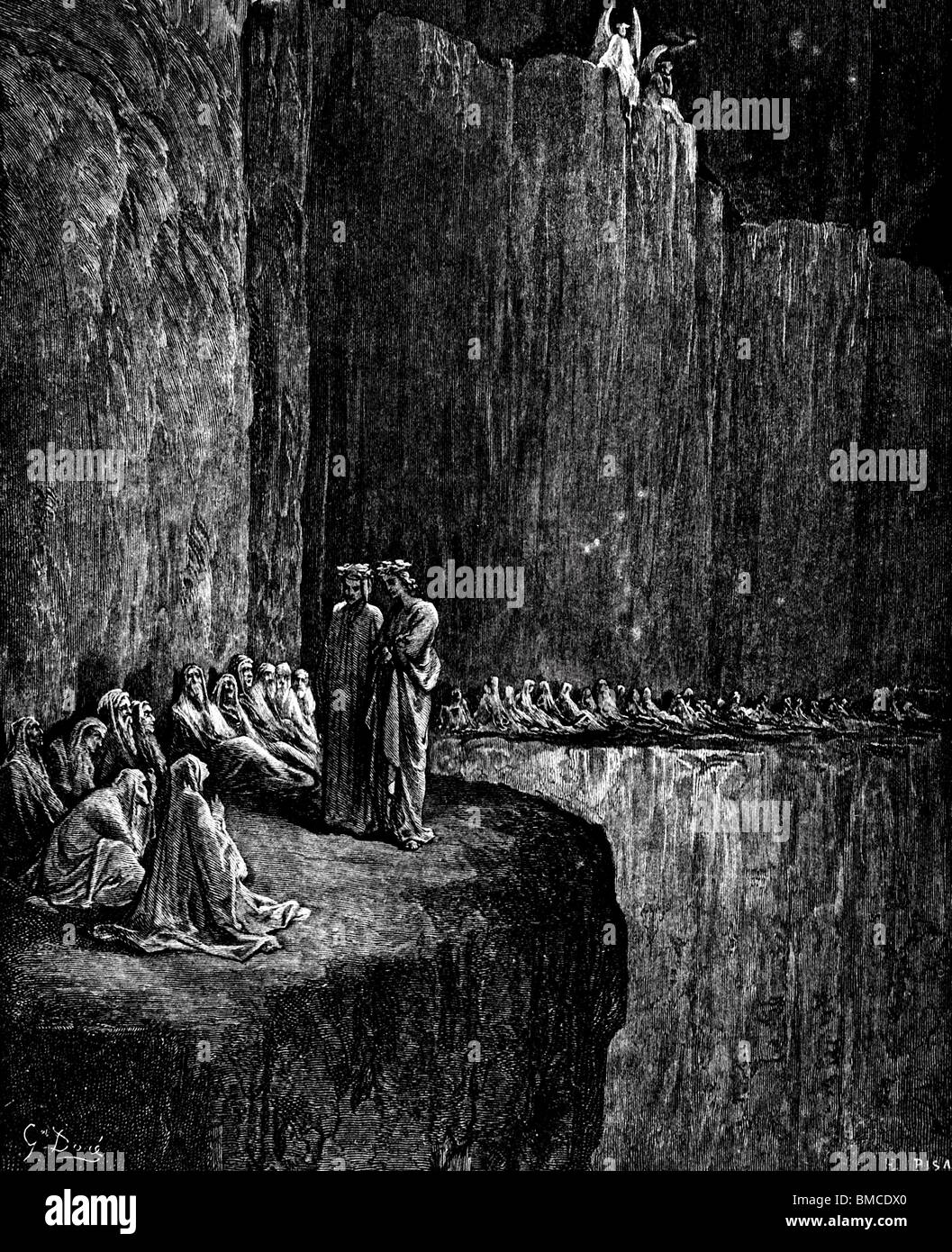 Dante speaks with a blind Stock Photohttps://www.alamy.com/image-license-details/?v=1https://www.alamy.com/stock-photo-dante-speaks-with-a-blind-29777832.html
Dante speaks with a blind Stock Photohttps://www.alamy.com/image-license-details/?v=1https://www.alamy.com/stock-photo-dante-speaks-with-a-blind-29777832.htmlRMBMCDX0–Dante speaks with a blind
 DANTE: Again mine eyes fix'd beatrice; my soul that looks found all, 1893 Stock Photohttps://www.alamy.com/image-license-details/?v=1https://www.alamy.com/stock-photo-dante-again-mine-eyes-fixd-beatrice-my-soul-that-looks-found-all-1893-94585357.html
DANTE: Again mine eyes fix'd beatrice; my soul that looks found all, 1893 Stock Photohttps://www.alamy.com/image-license-details/?v=1https://www.alamy.com/stock-photo-dante-again-mine-eyes-fixd-beatrice-my-soul-that-looks-found-all-1893-94585357.htmlRFFDTMGD–DANTE: Again mine eyes fix'd beatrice; my soul that looks found all, 1893
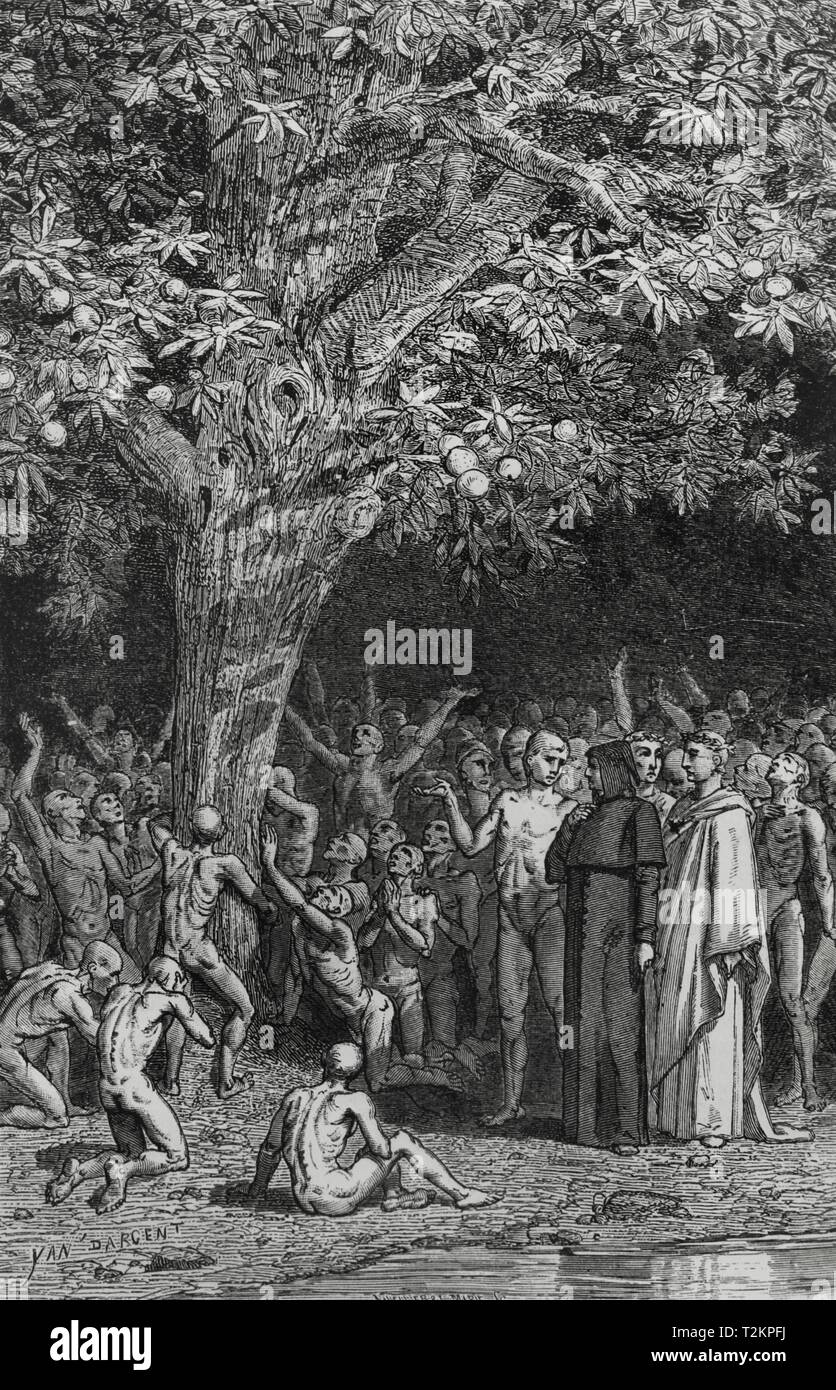 La Divina Comedia. Escrita por el poeta italiano Dante Alighieri (1265-1321). El Purgatorio. 'Y ví debajo de él muchas almas... '. Versión castellana de Don Enrique de Montalbán. Grabado realizado por el ilustrador francés Yann Dargent (1824-1899). París, 1888. Biblioteca Histórico Militar de Barcelona. Cataluña, España. Stock Photohttps://www.alamy.com/image-license-details/?v=1https://www.alamy.com/la-divina-comedia-escrita-por-el-poeta-italiano-dante-alighieri-1265-1321-el-purgatorio-y-v-debajo-de-l-muchas-almas-versin-castellana-de-don-enrique-de-montalbn-grabado-realizado-por-el-ilustrador-francs-yann-dargent-1824-1899-pars-1888-biblioteca-histrico-militar-de-barcelona-catalua-espaa-image242609238.html
La Divina Comedia. Escrita por el poeta italiano Dante Alighieri (1265-1321). El Purgatorio. 'Y ví debajo de él muchas almas... '. Versión castellana de Don Enrique de Montalbán. Grabado realizado por el ilustrador francés Yann Dargent (1824-1899). París, 1888. Biblioteca Histórico Militar de Barcelona. Cataluña, España. Stock Photohttps://www.alamy.com/image-license-details/?v=1https://www.alamy.com/la-divina-comedia-escrita-por-el-poeta-italiano-dante-alighieri-1265-1321-el-purgatorio-y-v-debajo-de-l-muchas-almas-versin-castellana-de-don-enrique-de-montalbn-grabado-realizado-por-el-ilustrador-francs-yann-dargent-1824-1899-pars-1888-biblioteca-histrico-militar-de-barcelona-catalua-espaa-image242609238.htmlRMT2KPFJ–La Divina Comedia. Escrita por el poeta italiano Dante Alighieri (1265-1321). El Purgatorio. 'Y ví debajo de él muchas almas... '. Versión castellana de Don Enrique de Montalbán. Grabado realizado por el ilustrador francés Yann Dargent (1824-1899). París, 1888. Biblioteca Histórico Militar de Barcelona. Cataluña, España.
 Purgatorio: A boat bringing the souls over the water to Purgatory, escorted by an angel. Dante Alighieri, Divina Commedia ( The Divine Comedy ), with a commentary in Latin. 1st half of the 14th century. Source: Egerton 943, f.65. Language: Italian, Latin. Stock Photohttps://www.alamy.com/image-license-details/?v=1https://www.alamy.com/purgatorio-a-boat-bringing-the-souls-over-the-water-to-purgatory-escorted-by-an-angel-dante-alighieri-divina-commedia-the-divine-comedy-with-a-commentary-in-latin-1st-half-of-the-14th-century-source-egerton-943-f65-language-italian-latin-image227050723.html
Purgatorio: A boat bringing the souls over the water to Purgatory, escorted by an angel. Dante Alighieri, Divina Commedia ( The Divine Comedy ), with a commentary in Latin. 1st half of the 14th century. Source: Egerton 943, f.65. Language: Italian, Latin. Stock Photohttps://www.alamy.com/image-license-details/?v=1https://www.alamy.com/purgatorio-a-boat-bringing-the-souls-over-the-water-to-purgatory-escorted-by-an-angel-dante-alighieri-divina-commedia-the-divine-comedy-with-a-commentary-in-latin-1st-half-of-the-14th-century-source-egerton-943-f65-language-italian-latin-image227050723.htmlRMR5B1EB–Purgatorio: A boat bringing the souls over the water to Purgatory, escorted by an angel. Dante Alighieri, Divina Commedia ( The Divine Comedy ), with a commentary in Latin. 1st half of the 14th century. Source: Egerton 943, f.65. Language: Italian, Latin.
 The Vision, or Hell, Purgatory, and Paradise of Dante Alighieri . that gavestBoldness to fix so earnestly my kenOn the everlasting splendour, that I looked,Wliile sight was unconsumed ; and, in that depth, 80 Saw in one volume clasped of love, whateerThe universe unfolds ; all propertiesOf substance and of accident, beheld.Compounded, yet one individual lightThe whole. And of such bond methinks 1 sawThe universal form ; for that wheneerI do but speak of it, my soul dilatesBeyond her proper self; and, till I speak. 356 THE VISION OF DANTE [Canto xxxin One moment seems a longer lethargy, Than fi Stock Photohttps://www.alamy.com/image-license-details/?v=1https://www.alamy.com/the-vision-or-hell-purgatory-and-paradise-of-dante-alighieri-that-gavestboldness-to-fix-so-earnestly-my-kenon-the-everlasting-splendour-that-i-lookedwliile-sight-was-unconsumed-and-in-that-depth-80-saw-in-one-volume-clasped-of-love-whateerthe-universe-unfolds-all-propertiesof-substance-and-of-accident-beheldcompounded-yet-one-individual-lightthe-whole-and-of-such-bond-methinks-1-sawthe-universal-form-for-that-wheneeri-do-but-speak-of-it-my-soul-dilatesbeyond-her-proper-self-and-till-i-speak-356-the-vision-of-dante-canto-xxxin-one-moment-seems-a-longer-lethargy-than-fi-image339409906.html
The Vision, or Hell, Purgatory, and Paradise of Dante Alighieri . that gavestBoldness to fix so earnestly my kenOn the everlasting splendour, that I looked,Wliile sight was unconsumed ; and, in that depth, 80 Saw in one volume clasped of love, whateerThe universe unfolds ; all propertiesOf substance and of accident, beheld.Compounded, yet one individual lightThe whole. And of such bond methinks 1 sawThe universal form ; for that wheneerI do but speak of it, my soul dilatesBeyond her proper self; and, till I speak. 356 THE VISION OF DANTE [Canto xxxin One moment seems a longer lethargy, Than fi Stock Photohttps://www.alamy.com/image-license-details/?v=1https://www.alamy.com/the-vision-or-hell-purgatory-and-paradise-of-dante-alighieri-that-gavestboldness-to-fix-so-earnestly-my-kenon-the-everlasting-splendour-that-i-lookedwliile-sight-was-unconsumed-and-in-that-depth-80-saw-in-one-volume-clasped-of-love-whateerthe-universe-unfolds-all-propertiesof-substance-and-of-accident-beheldcompounded-yet-one-individual-lightthe-whole-and-of-such-bond-methinks-1-sawthe-universal-form-for-that-wheneeri-do-but-speak-of-it-my-soul-dilatesbeyond-her-proper-self-and-till-i-speak-356-the-vision-of-dante-canto-xxxin-one-moment-seems-a-longer-lethargy-than-fi-image339409906.htmlRM2AM5CPA–The Vision, or Hell, Purgatory, and Paradise of Dante Alighieri . that gavestBoldness to fix so earnestly my kenOn the everlasting splendour, that I looked,Wliile sight was unconsumed ; and, in that depth, 80 Saw in one volume clasped of love, whateerThe universe unfolds ; all propertiesOf substance and of accident, beheld.Compounded, yet one individual lightThe whole. And of such bond methinks 1 sawThe universal form ; for that wheneerI do but speak of it, my soul dilatesBeyond her proper self; and, till I speak. 356 THE VISION OF DANTE [Canto xxxin One moment seems a longer lethargy, Than fi
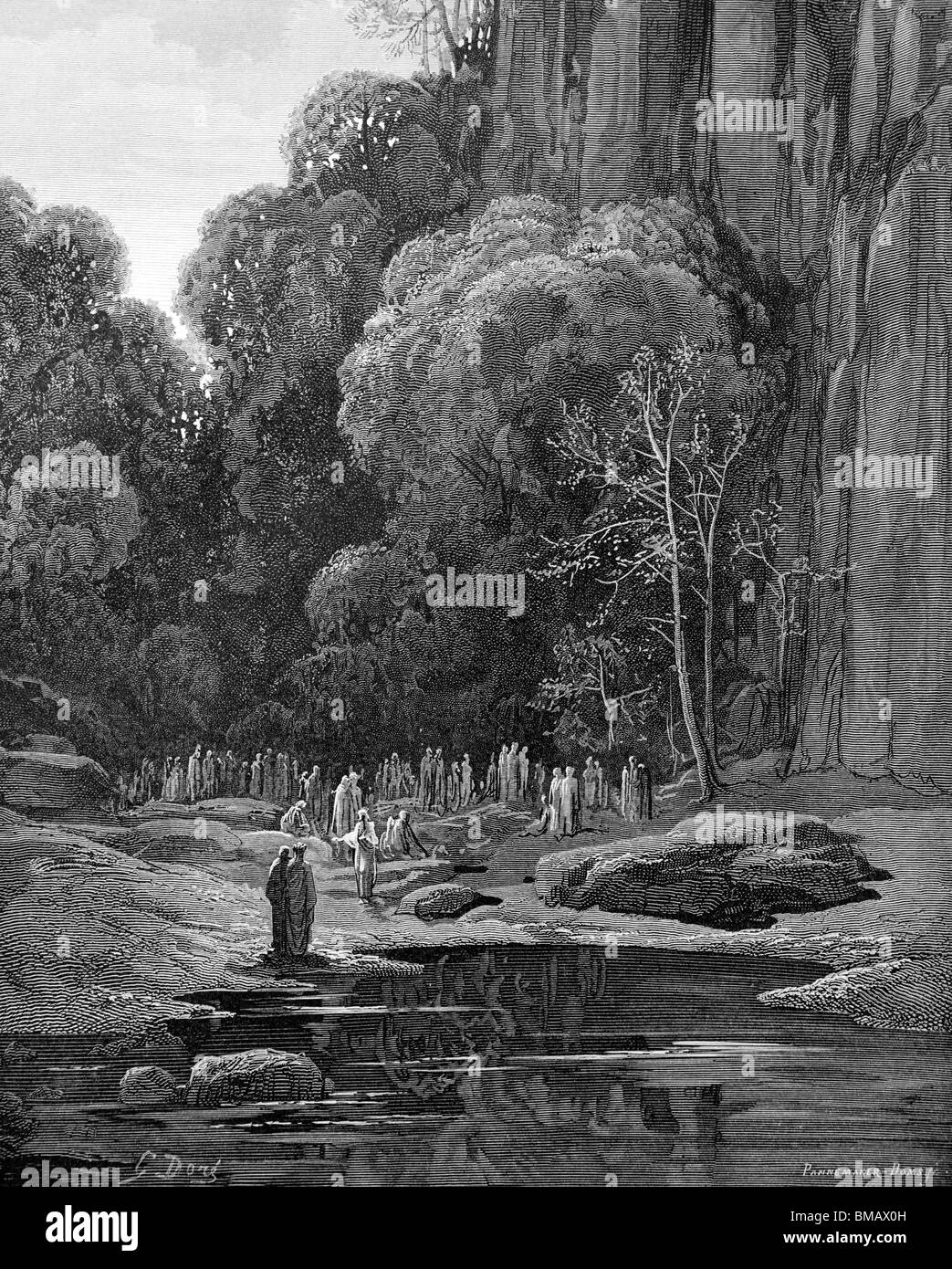 Engraving by Gustave Doré from Dante Alighieri's Divine Comedy 'Purgatory and Paradise'; Dante and Virgil meet the Souls of the Stock Photohttps://www.alamy.com/image-license-details/?v=1https://www.alamy.com/stock-photo-engraving-by-gustave-dor-from-dante-alighieris-divine-comedy-purgatory-29743409.html
Engraving by Gustave Doré from Dante Alighieri's Divine Comedy 'Purgatory and Paradise'; Dante and Virgil meet the Souls of the Stock Photohttps://www.alamy.com/image-license-details/?v=1https://www.alamy.com/stock-photo-engraving-by-gustave-dor-from-dante-alighieris-divine-comedy-purgatory-29743409.htmlRMBMAX0H–Engraving by Gustave Doré from Dante Alighieri's Divine Comedy 'Purgatory and Paradise'; Dante and Virgil meet the Souls of the
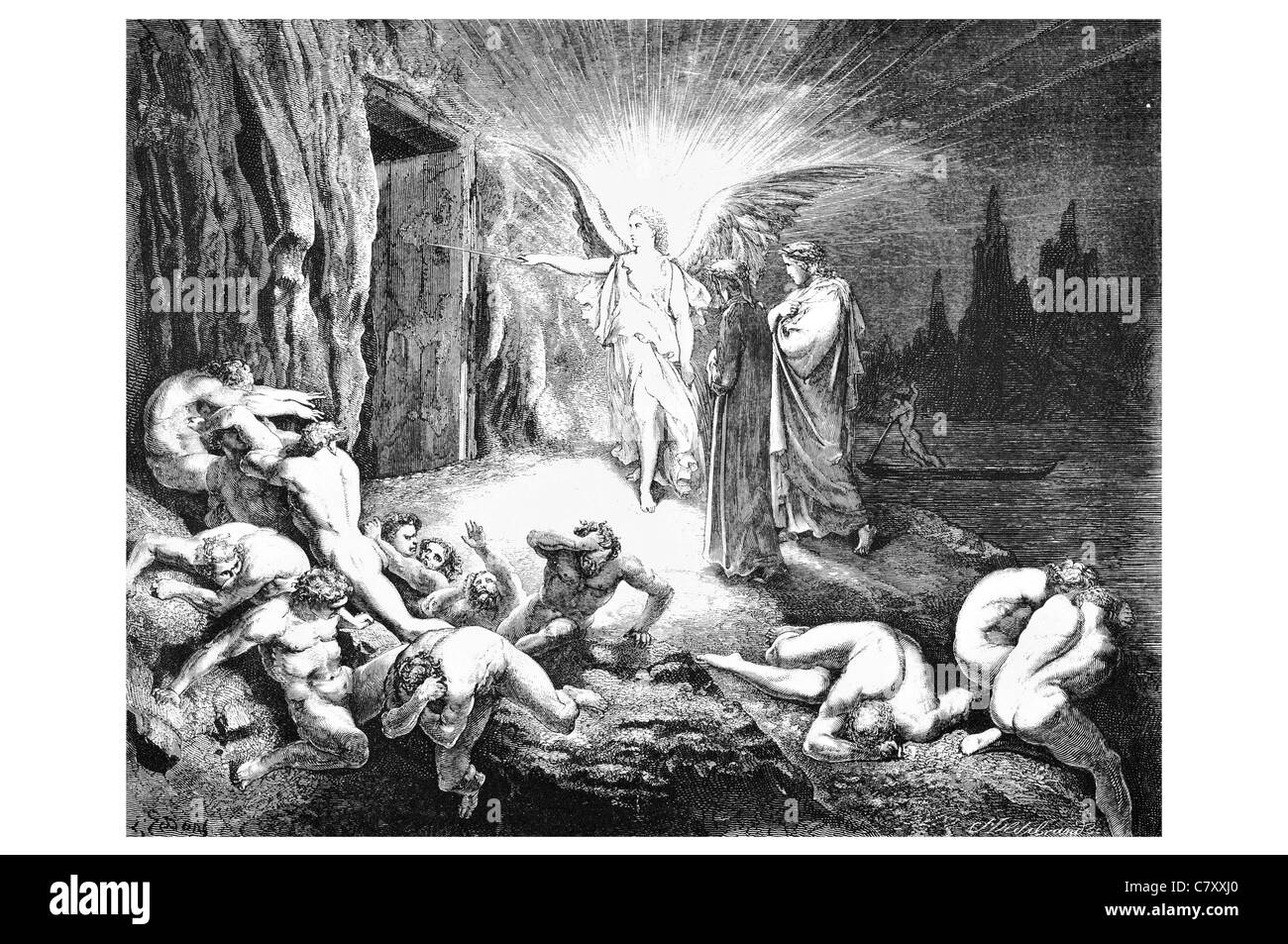 To the gate he came and with his wand touched it whereat open without impediment if flew The Vision of Hell Dante Alighieri Stock Photohttps://www.alamy.com/image-license-details/?v=1https://www.alamy.com/stock-photo-to-the-gate-he-came-and-with-his-wand-touched-it-whereat-open-without-39314968.html
To the gate he came and with his wand touched it whereat open without impediment if flew The Vision of Hell Dante Alighieri Stock Photohttps://www.alamy.com/image-license-details/?v=1https://www.alamy.com/stock-photo-to-the-gate-he-came-and-with-his-wand-touched-it-whereat-open-without-39314968.htmlRMC7XXJ0–To the gate he came and with his wand touched it whereat open without impediment if flew The Vision of Hell Dante Alighieri
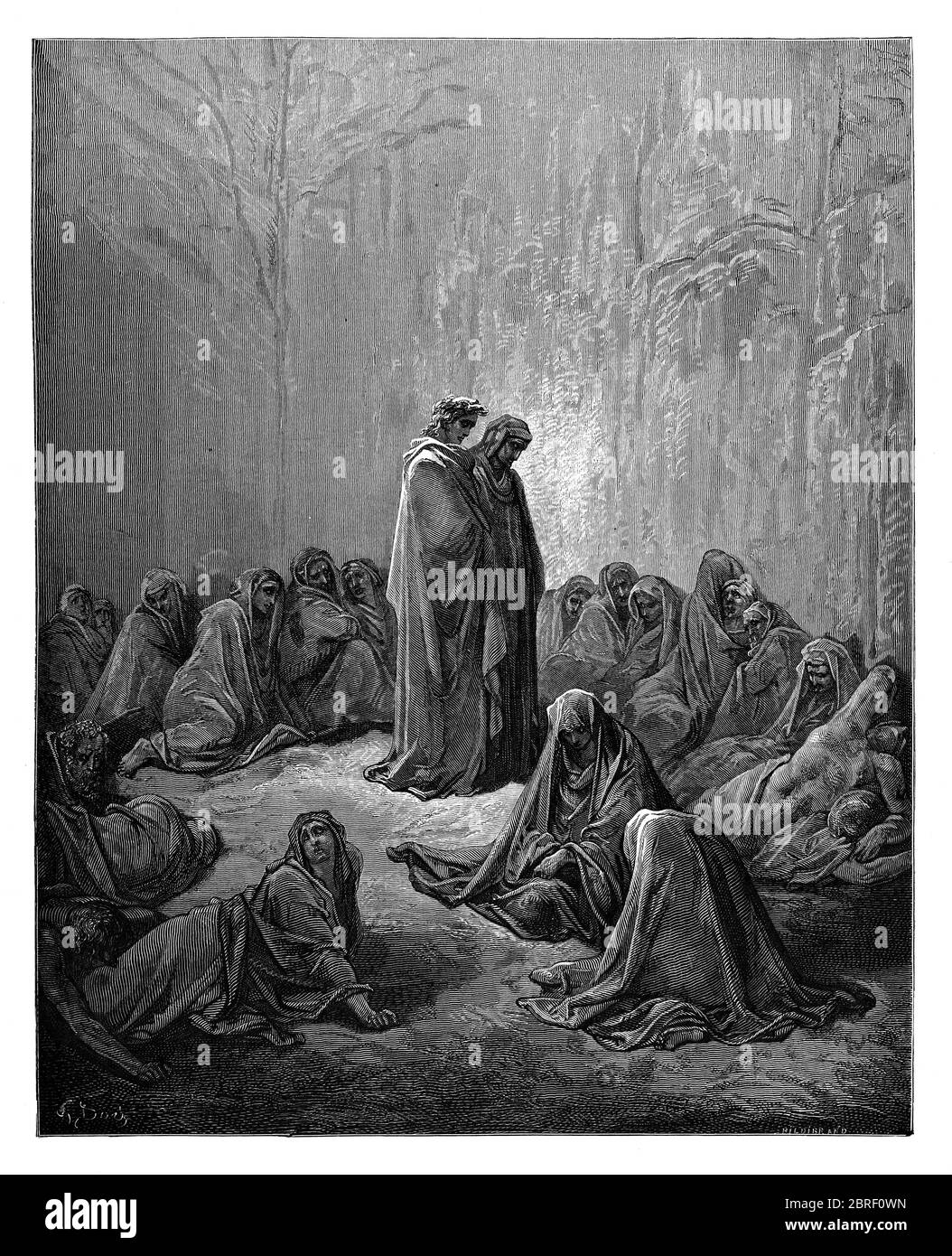 Purgatorio ('Purgatory') is the second part of Dante's Divine Comedy, following the Inferno, and preceding the Paradiso. The poem was written in the early 14th century. It is an allegory telling of the climb of Dante up the Mount of Purgatory, guided by the Roman poet Virgil, except for the last four cantos at which point Beatrice takes over as Dante's guide. Purgatory in the poem is depicted as a mountain in the Southern Hemisphere, consisting of a bottom section (Ante-Purgatory), seven levels of suffering and spiritual growth (associated with the seven deadly sins), and finally the Earthly P Stock Photohttps://www.alamy.com/image-license-details/?v=1https://www.alamy.com/purgatorio-purgatory-is-the-second-part-of-dantes-divine-comedy-following-the-inferno-and-preceding-the-paradiso-the-poem-was-written-in-the-early-14th-century-it-is-an-allegory-telling-of-the-climb-of-dante-up-the-mount-of-purgatory-guided-by-the-roman-poet-virgil-except-for-the-last-four-cantos-at-which-point-beatrice-takes-over-as-dantes-guide-purgatory-in-the-poem-is-depicted-as-a-mountain-in-the-southern-hemisphere-consisting-of-a-bottom-section-ante-purgatory-seven-levels-of-suffering-and-spiritual-growth-associated-with-the-seven-deadly-sins-and-finally-the-earthly-p-image358674449.html
Purgatorio ('Purgatory') is the second part of Dante's Divine Comedy, following the Inferno, and preceding the Paradiso. The poem was written in the early 14th century. It is an allegory telling of the climb of Dante up the Mount of Purgatory, guided by the Roman poet Virgil, except for the last four cantos at which point Beatrice takes over as Dante's guide. Purgatory in the poem is depicted as a mountain in the Southern Hemisphere, consisting of a bottom section (Ante-Purgatory), seven levels of suffering and spiritual growth (associated with the seven deadly sins), and finally the Earthly P Stock Photohttps://www.alamy.com/image-license-details/?v=1https://www.alamy.com/purgatorio-purgatory-is-the-second-part-of-dantes-divine-comedy-following-the-inferno-and-preceding-the-paradiso-the-poem-was-written-in-the-early-14th-century-it-is-an-allegory-telling-of-the-climb-of-dante-up-the-mount-of-purgatory-guided-by-the-roman-poet-virgil-except-for-the-last-four-cantos-at-which-point-beatrice-takes-over-as-dantes-guide-purgatory-in-the-poem-is-depicted-as-a-mountain-in-the-southern-hemisphere-consisting-of-a-bottom-section-ante-purgatory-seven-levels-of-suffering-and-spiritual-growth-associated-with-the-seven-deadly-sins-and-finally-the-earthly-p-image358674449.htmlRF2BRF0WN–Purgatorio ('Purgatory') is the second part of Dante's Divine Comedy, following the Inferno, and preceding the Paradiso. The poem was written in the early 14th century. It is an allegory telling of the climb of Dante up the Mount of Purgatory, guided by the Roman poet Virgil, except for the last four cantos at which point Beatrice takes over as Dante's guide. Purgatory in the poem is depicted as a mountain in the Southern Hemisphere, consisting of a bottom section (Ante-Purgatory), seven levels of suffering and spiritual growth (associated with the seven deadly sins), and finally the Earthly P
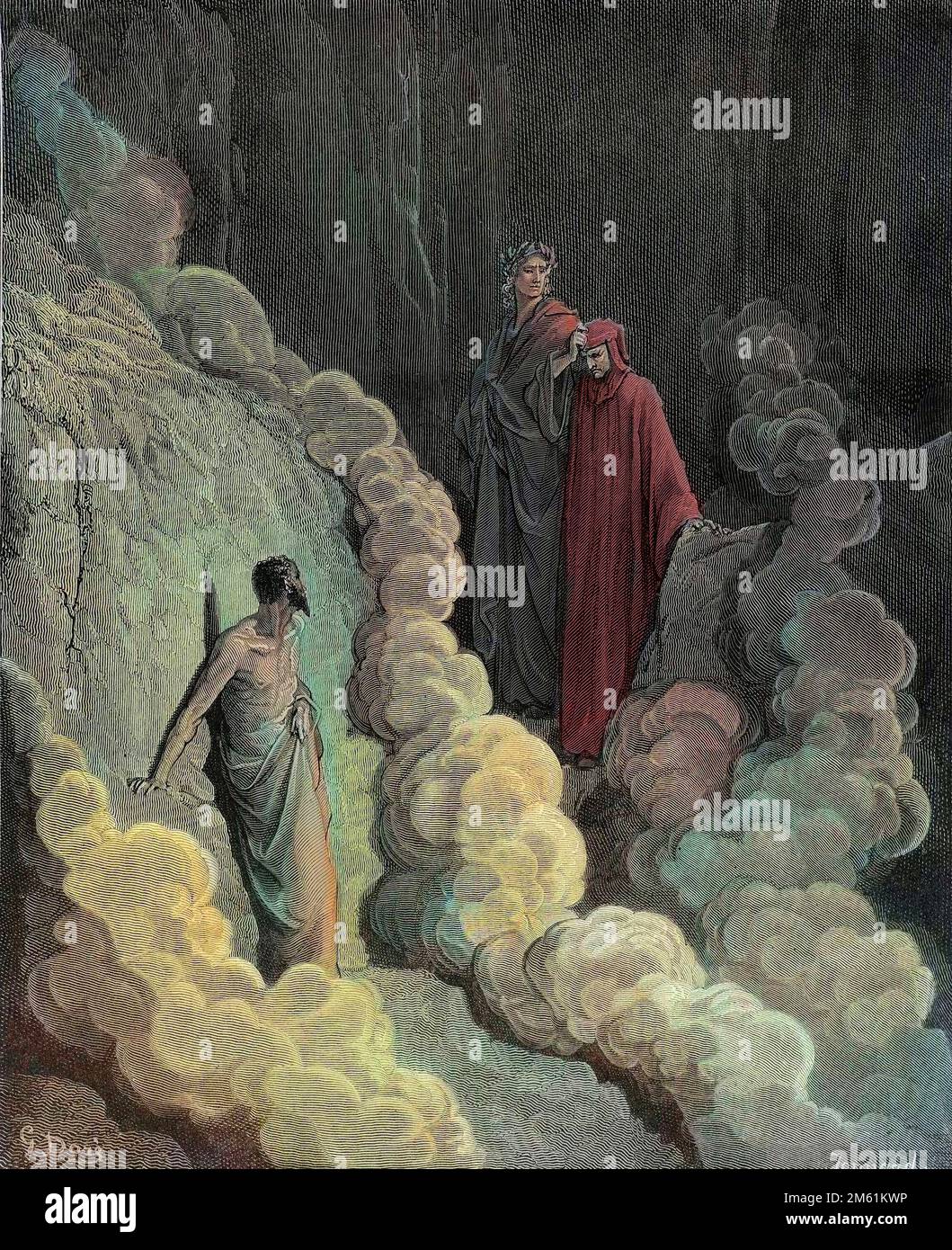 The Divine Comedy by Dante Alighieri , Purgatorio, Canto 16 : Dante speaks to the soul of Marco Lombardo - by Dante Alighieri (1265-1321) - Illustration de Gustave Dore (1832-1883), 1885 - Colorisation digitale d'apres l'originale Stock Photohttps://www.alamy.com/image-license-details/?v=1https://www.alamy.com/the-divine-comedy-by-dante-alighieri-purgatorio-canto-16-dante-speaks-to-the-soul-of-marco-lombardo-by-dante-alighieri-1265-1321-illustration-de-gustave-dore-1832-1883-1885-colorisation-digitale-dapres-loriginale-image502826178.html
The Divine Comedy by Dante Alighieri , Purgatorio, Canto 16 : Dante speaks to the soul of Marco Lombardo - by Dante Alighieri (1265-1321) - Illustration de Gustave Dore (1832-1883), 1885 - Colorisation digitale d'apres l'originale Stock Photohttps://www.alamy.com/image-license-details/?v=1https://www.alamy.com/the-divine-comedy-by-dante-alighieri-purgatorio-canto-16-dante-speaks-to-the-soul-of-marco-lombardo-by-dante-alighieri-1265-1321-illustration-de-gustave-dore-1832-1883-1885-colorisation-digitale-dapres-loriginale-image502826178.htmlRM2M61KWP–The Divine Comedy by Dante Alighieri , Purgatorio, Canto 16 : Dante speaks to the soul of Marco Lombardo - by Dante Alighieri (1265-1321) - Illustration de Gustave Dore (1832-1883), 1885 - Colorisation digitale d'apres l'originale
 Dante s ascent in mountains Stock Photohttps://www.alamy.com/image-license-details/?v=1https://www.alamy.com/stock-photo-dante-s-ascent-in-mountains-29777413.html
Dante s ascent in mountains Stock Photohttps://www.alamy.com/image-license-details/?v=1https://www.alamy.com/stock-photo-dante-s-ascent-in-mountains-29777413.htmlRMBMCDB1–Dante s ascent in mountains
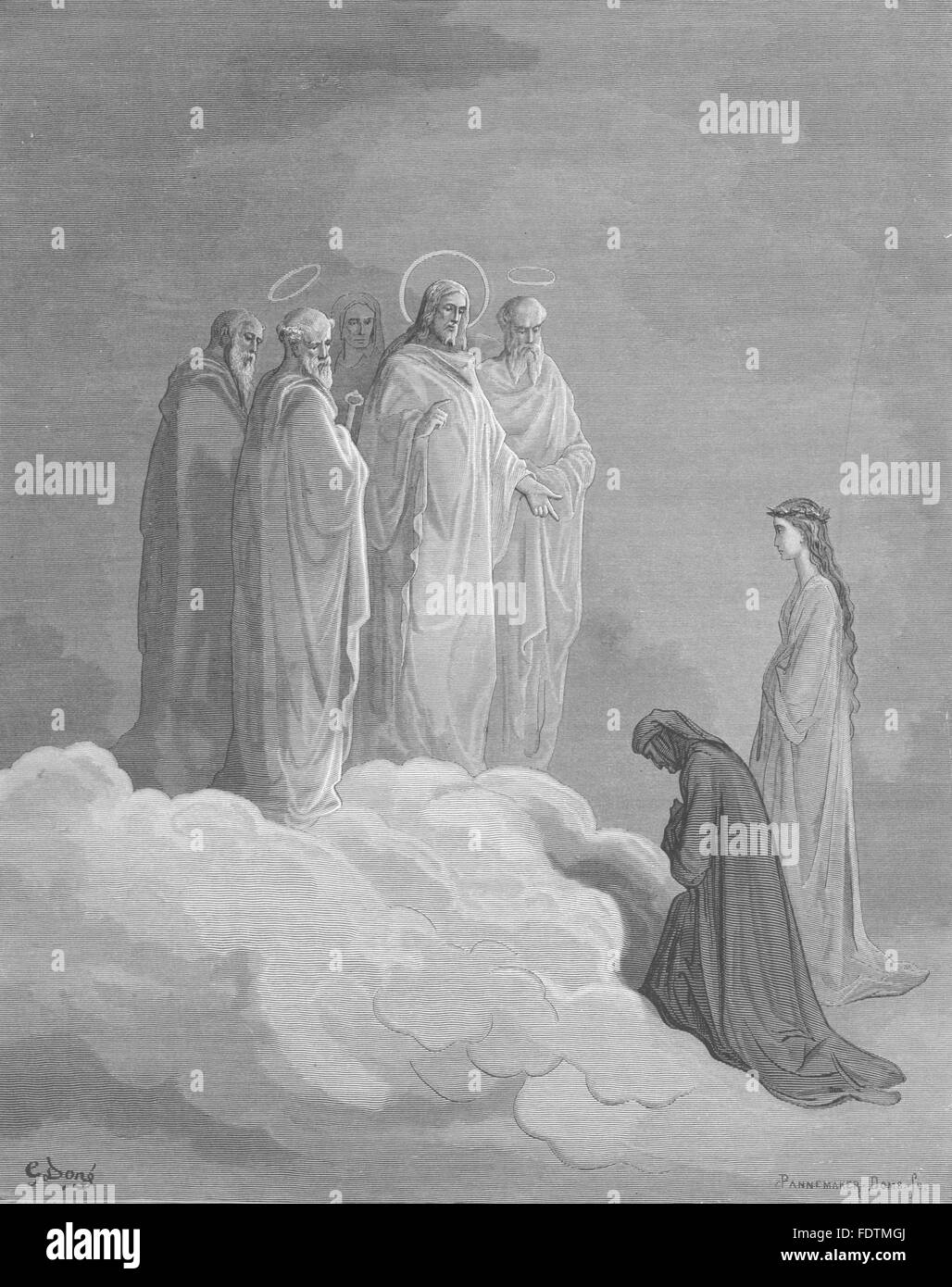 DANTE: Say then, start, Pt thy soul aspires: meanwhile rest assured, 1893 Stock Photohttps://www.alamy.com/image-license-details/?v=1https://www.alamy.com/stock-photo-dante-say-then-start-pt-thy-soul-aspires-meanwhile-rest-assured-1893-94585362.html
DANTE: Say then, start, Pt thy soul aspires: meanwhile rest assured, 1893 Stock Photohttps://www.alamy.com/image-license-details/?v=1https://www.alamy.com/stock-photo-dante-say-then-start-pt-thy-soul-aspires-meanwhile-rest-assured-1893-94585362.htmlRFFDTMGJ–DANTE: Say then, start, Pt thy soul aspires: meanwhile rest assured, 1893
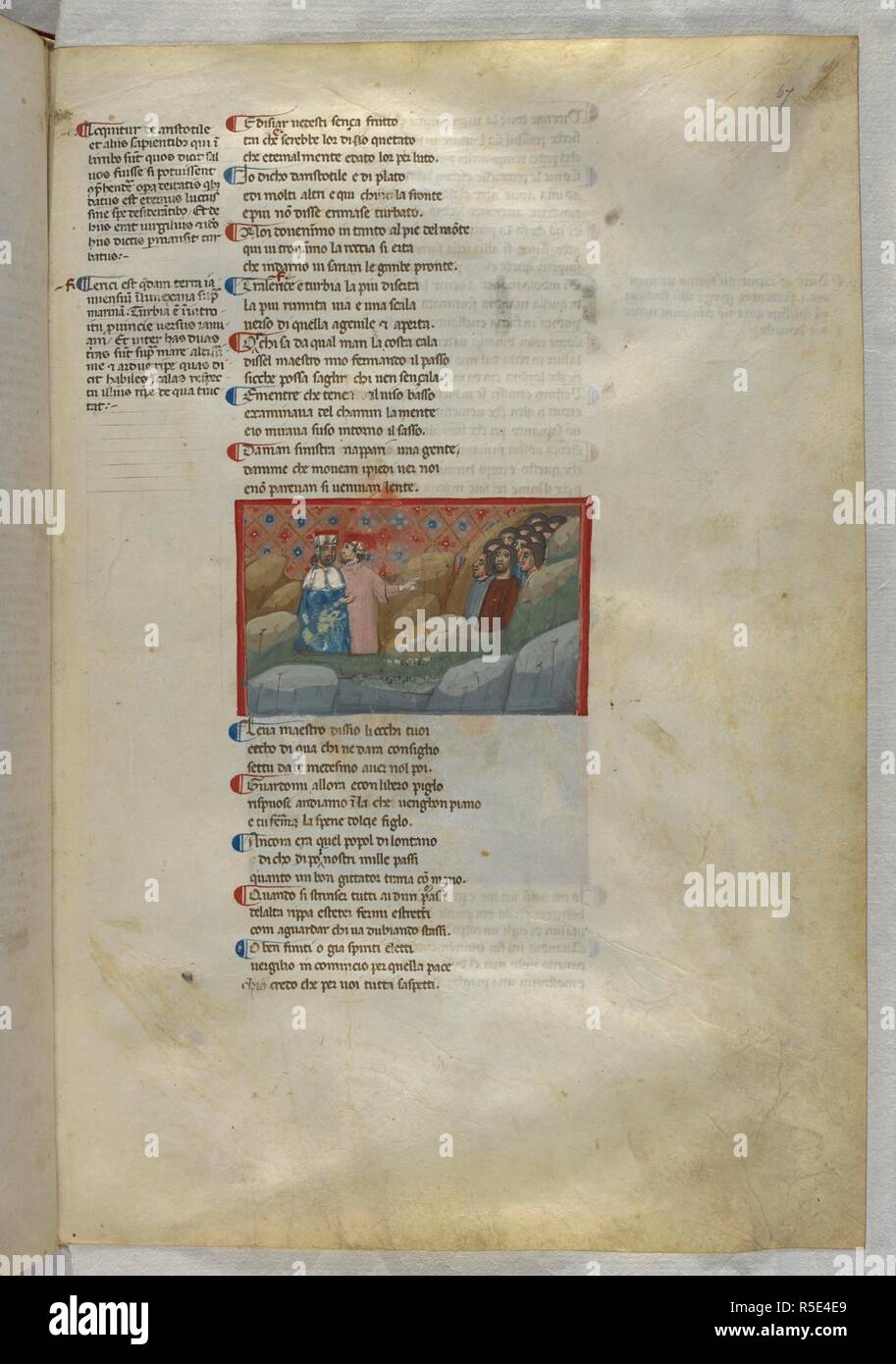 Purgatorio: Dante and Virgil meeting a group of souls of those who were excommunicated in Ante-Purgatory. Dante Alighieri, Divina Commedia ( The Divine Comedy ), with a commentary in Latin. 1st half of the 14th century. Source: Egerton 943, f.67. Language: Italian, Latin. Stock Photohttps://www.alamy.com/image-license-details/?v=1https://www.alamy.com/purgatorio-dante-and-virgil-meeting-a-group-of-souls-of-those-who-were-excommunicated-in-ante-purgatory-dante-alighieri-divina-commedia-the-divine-comedy-with-a-commentary-in-latin-1st-half-of-the-14th-century-source-egerton-943-f67-language-italian-latin-image227118929.html
Purgatorio: Dante and Virgil meeting a group of souls of those who were excommunicated in Ante-Purgatory. Dante Alighieri, Divina Commedia ( The Divine Comedy ), with a commentary in Latin. 1st half of the 14th century. Source: Egerton 943, f.67. Language: Italian, Latin. Stock Photohttps://www.alamy.com/image-license-details/?v=1https://www.alamy.com/purgatorio-dante-and-virgil-meeting-a-group-of-souls-of-those-who-were-excommunicated-in-ante-purgatory-dante-alighieri-divina-commedia-the-divine-comedy-with-a-commentary-in-latin-1st-half-of-the-14th-century-source-egerton-943-f67-language-italian-latin-image227118929.htmlRMR5E4E9–Purgatorio: Dante and Virgil meeting a group of souls of those who were excommunicated in Ante-Purgatory. Dante Alighieri, Divina Commedia ( The Divine Comedy ), with a commentary in Latin. 1st half of the 14th century. Source: Egerton 943, f.67. Language: Italian, Latin.
![The Vision, or Hell, Purgatory, and Paradise of Dante Alighieri . in him.In equal scorn of labours and of gold.His bounty shall be spread abroad so widely.As notto let the tongues, een of his foes.Be idle in its praise. Look thou to him,And his beneficencs : for he shall causeReversal of their lot to many people ;Rich men and beggars interchanging fortunes.And thou shalt bear this written in thy soul,Of him, but tell it not: and things he told 9c Incredible to those who witness them ; Lines 43-119] PARADISE 299 Then added : So interpret thou, my son,What hath been told thee.—Lo ! the ambushmen Stock Photo The Vision, or Hell, Purgatory, and Paradise of Dante Alighieri . in him.In equal scorn of labours and of gold.His bounty shall be spread abroad so widely.As notto let the tongues, een of his foes.Be idle in its praise. Look thou to him,And his beneficencs : for he shall causeReversal of their lot to many people ;Rich men and beggars interchanging fortunes.And thou shalt bear this written in thy soul,Of him, but tell it not: and things he told 9c Incredible to those who witness them ; Lines 43-119] PARADISE 299 Then added : So interpret thou, my son,What hath been told thee.—Lo ! the ambushmen Stock Photo](https://c8.alamy.com/comp/2AM5M17/the-vision-or-hell-purgatory-and-paradise-of-dante-alighieri-in-himin-equal-scorn-of-labours-and-of-goldhis-bounty-shall-be-spread-abroad-so-widelyas-notto-let-the-tongues-een-of-his-foesbe-idle-in-its-praise-look-thou-to-himand-his-beneficencs-for-he-shall-causereversal-of-their-lot-to-many-people-rich-men-and-beggars-interchanging-fortunesand-thou-shalt-bear-this-written-in-thy-soulof-him-but-tell-it-not-and-things-he-told-9c-incredible-to-those-who-witness-them-lines-43-119-paradise-299-then-added-so-interpret-thou-my-sonwhat-hath-been-told-theelo-!-the-ambushmen-2AM5M17.jpg) The Vision, or Hell, Purgatory, and Paradise of Dante Alighieri . in him.In equal scorn of labours and of gold.His bounty shall be spread abroad so widely.As notto let the tongues, een of his foes.Be idle in its praise. Look thou to him,And his beneficencs : for he shall causeReversal of their lot to many people ;Rich men and beggars interchanging fortunes.And thou shalt bear this written in thy soul,Of him, but tell it not: and things he told 9c Incredible to those who witness them ; Lines 43-119] PARADISE 299 Then added : So interpret thou, my son,What hath been told thee.—Lo ! the ambushmen Stock Photohttps://www.alamy.com/image-license-details/?v=1https://www.alamy.com/the-vision-or-hell-purgatory-and-paradise-of-dante-alighieri-in-himin-equal-scorn-of-labours-and-of-goldhis-bounty-shall-be-spread-abroad-so-widelyas-notto-let-the-tongues-een-of-his-foesbe-idle-in-its-praise-look-thou-to-himand-his-beneficencs-for-he-shall-causereversal-of-their-lot-to-many-people-rich-men-and-beggars-interchanging-fortunesand-thou-shalt-bear-this-written-in-thy-soulof-him-but-tell-it-not-and-things-he-told-9c-incredible-to-those-who-witness-them-lines-43-119-paradise-299-then-added-so-interpret-thou-my-sonwhat-hath-been-told-theelo-!-the-ambushmen-image339415587.html
The Vision, or Hell, Purgatory, and Paradise of Dante Alighieri . in him.In equal scorn of labours and of gold.His bounty shall be spread abroad so widely.As notto let the tongues, een of his foes.Be idle in its praise. Look thou to him,And his beneficencs : for he shall causeReversal of their lot to many people ;Rich men and beggars interchanging fortunes.And thou shalt bear this written in thy soul,Of him, but tell it not: and things he told 9c Incredible to those who witness them ; Lines 43-119] PARADISE 299 Then added : So interpret thou, my son,What hath been told thee.—Lo ! the ambushmen Stock Photohttps://www.alamy.com/image-license-details/?v=1https://www.alamy.com/the-vision-or-hell-purgatory-and-paradise-of-dante-alighieri-in-himin-equal-scorn-of-labours-and-of-goldhis-bounty-shall-be-spread-abroad-so-widelyas-notto-let-the-tongues-een-of-his-foesbe-idle-in-its-praise-look-thou-to-himand-his-beneficencs-for-he-shall-causereversal-of-their-lot-to-many-people-rich-men-and-beggars-interchanging-fortunesand-thou-shalt-bear-this-written-in-thy-soulof-him-but-tell-it-not-and-things-he-told-9c-incredible-to-those-who-witness-them-lines-43-119-paradise-299-then-added-so-interpret-thou-my-sonwhat-hath-been-told-theelo-!-the-ambushmen-image339415587.htmlRM2AM5M17–The Vision, or Hell, Purgatory, and Paradise of Dante Alighieri . in him.In equal scorn of labours and of gold.His bounty shall be spread abroad so widely.As notto let the tongues, een of his foes.Be idle in its praise. Look thou to him,And his beneficencs : for he shall causeReversal of their lot to many people ;Rich men and beggars interchanging fortunes.And thou shalt bear this written in thy soul,Of him, but tell it not: and things he told 9c Incredible to those who witness them ; Lines 43-119] PARADISE 299 Then added : So interpret thou, my son,What hath been told thee.—Lo ! the ambushmen
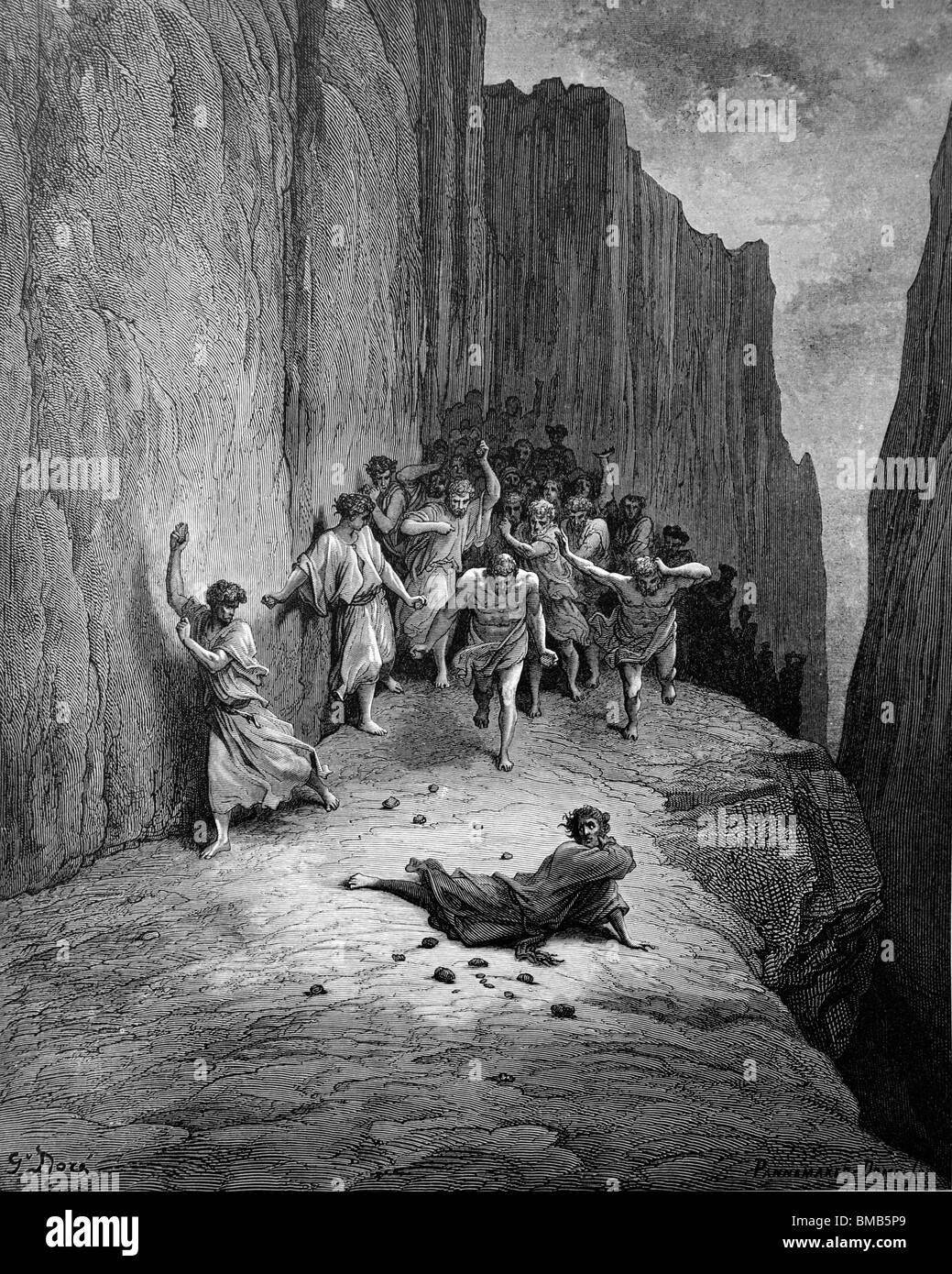 Engraving by Gustave Doré from Dante Alighieri's Divine Comedy 'Purgatory and Paradise'; Dante On the Terrace of the Wrathful Stock Photohttps://www.alamy.com/image-license-details/?v=1https://www.alamy.com/stock-photo-engraving-by-gustave-dor-from-dante-alighieris-divine-comedy-purgatory-29749505.html
Engraving by Gustave Doré from Dante Alighieri's Divine Comedy 'Purgatory and Paradise'; Dante On the Terrace of the Wrathful Stock Photohttps://www.alamy.com/image-license-details/?v=1https://www.alamy.com/stock-photo-engraving-by-gustave-dor-from-dante-alighieris-divine-comedy-purgatory-29749505.htmlRMBMB5P9–Engraving by Gustave Doré from Dante Alighieri's Divine Comedy 'Purgatory and Paradise'; Dante On the Terrace of the Wrathful
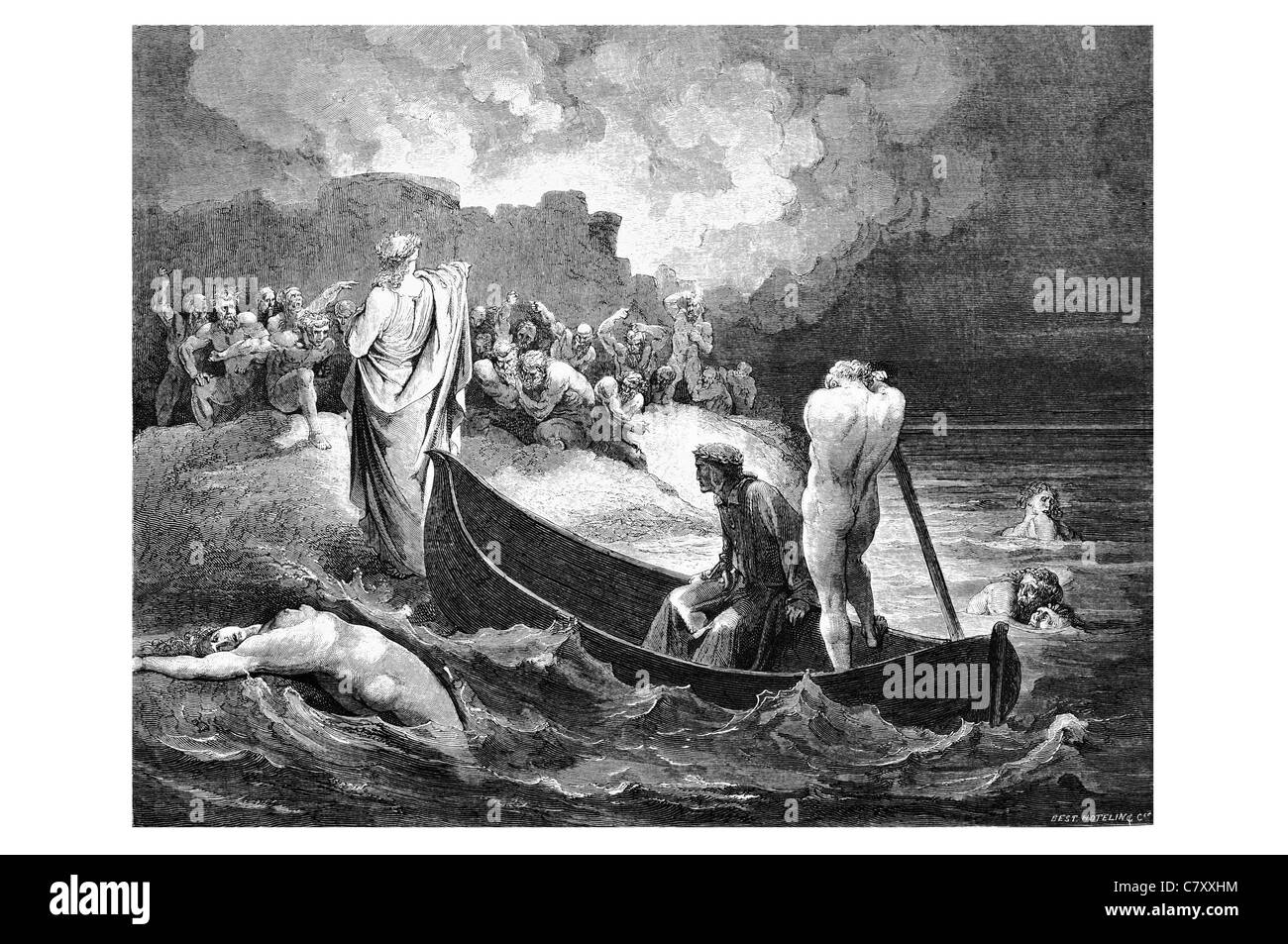 I could not hear what terms he offered them but they conferred not long The Vision of Hell Dante Alighieri Gustave Doré divine Stock Photohttps://www.alamy.com/image-license-details/?v=1https://www.alamy.com/stock-photo-i-could-not-hear-what-terms-he-offered-them-but-they-conferred-not-39314960.html
I could not hear what terms he offered them but they conferred not long The Vision of Hell Dante Alighieri Gustave Doré divine Stock Photohttps://www.alamy.com/image-license-details/?v=1https://www.alamy.com/stock-photo-i-could-not-hear-what-terms-he-offered-them-but-they-conferred-not-39314960.htmlRMC7XXHM–I could not hear what terms he offered them but they conferred not long The Vision of Hell Dante Alighieri Gustave Doré divine
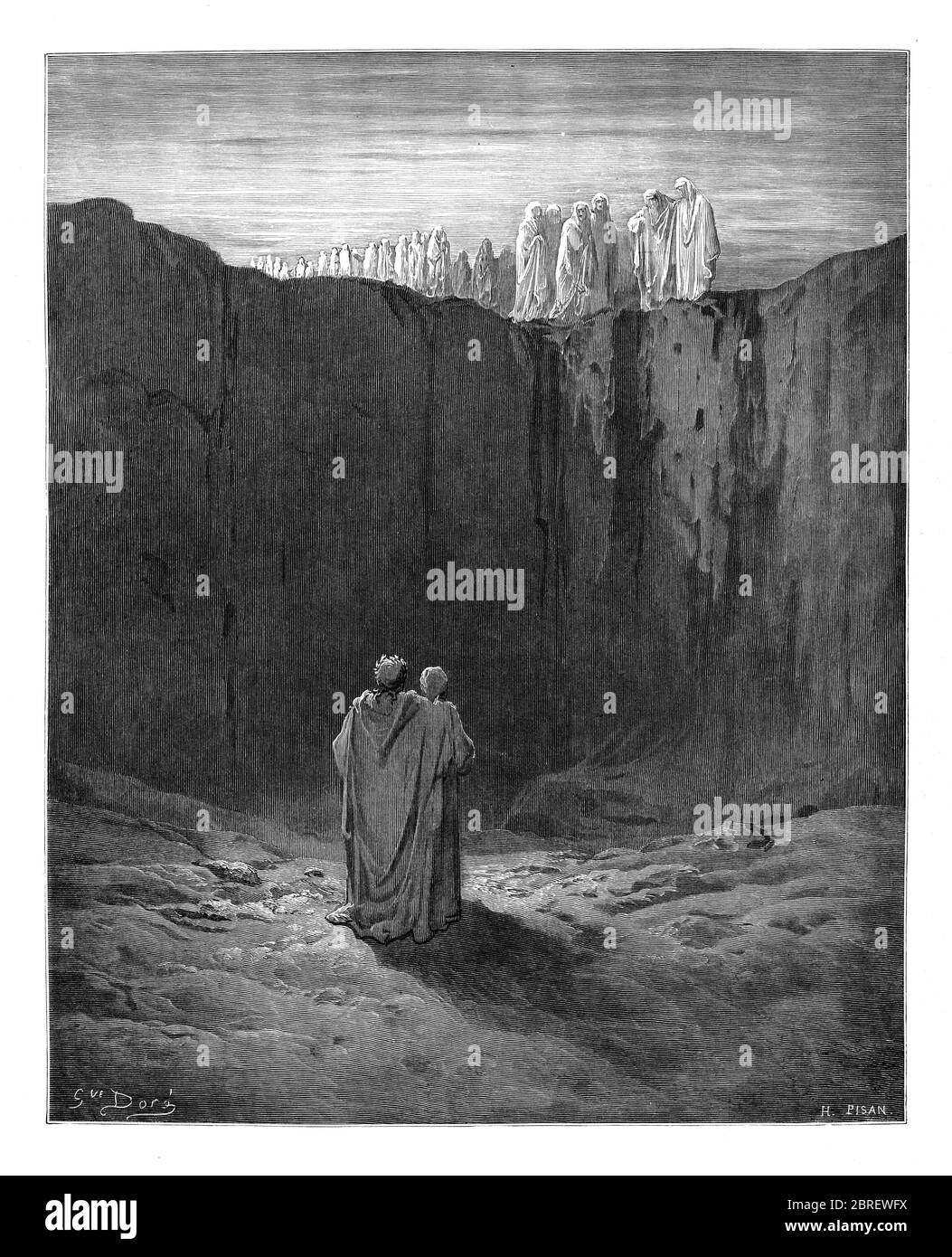 Purgatorio ('Purgatory') is the second part of Dante's Divine Comedy, following the Inferno, and preceding the Paradiso. The poem was written in the early 14th century. It is an allegory telling of the climb of Dante up the Mount of Purgatory, guided by the Roman poet Virgil, except for the last four cantos at which point Beatrice takes over as Dante's guide. Purgatory in the poem is depicted as a mountain in the Southern Hemisphere, consisting of a bottom section (Ante-Purgatory), seven levels of suffering and spiritual growth (associated with the seven deadly sins), and finally the Earthly P Stock Photohttps://www.alamy.com/image-license-details/?v=1https://www.alamy.com/purgatorio-purgatory-is-the-second-part-of-dantes-divine-comedy-following-the-inferno-and-preceding-the-paradiso-the-poem-was-written-in-the-early-14th-century-it-is-an-allegory-telling-of-the-climb-of-dante-up-the-mount-of-purgatory-guided-by-the-roman-poet-virgil-except-for-the-last-four-cantos-at-which-point-beatrice-takes-over-as-dantes-guide-purgatory-in-the-poem-is-depicted-as-a-mountain-in-the-southern-hemisphere-consisting-of-a-bottom-section-ante-purgatory-seven-levels-of-suffering-and-spiritual-growth-associated-with-the-seven-deadly-sins-and-finally-the-earthly-p-image358671822.html
Purgatorio ('Purgatory') is the second part of Dante's Divine Comedy, following the Inferno, and preceding the Paradiso. The poem was written in the early 14th century. It is an allegory telling of the climb of Dante up the Mount of Purgatory, guided by the Roman poet Virgil, except for the last four cantos at which point Beatrice takes over as Dante's guide. Purgatory in the poem is depicted as a mountain in the Southern Hemisphere, consisting of a bottom section (Ante-Purgatory), seven levels of suffering and spiritual growth (associated with the seven deadly sins), and finally the Earthly P Stock Photohttps://www.alamy.com/image-license-details/?v=1https://www.alamy.com/purgatorio-purgatory-is-the-second-part-of-dantes-divine-comedy-following-the-inferno-and-preceding-the-paradiso-the-poem-was-written-in-the-early-14th-century-it-is-an-allegory-telling-of-the-climb-of-dante-up-the-mount-of-purgatory-guided-by-the-roman-poet-virgil-except-for-the-last-four-cantos-at-which-point-beatrice-takes-over-as-dantes-guide-purgatory-in-the-poem-is-depicted-as-a-mountain-in-the-southern-hemisphere-consisting-of-a-bottom-section-ante-purgatory-seven-levels-of-suffering-and-spiritual-growth-associated-with-the-seven-deadly-sins-and-finally-the-earthly-p-image358671822.htmlRF2BREWFX–Purgatorio ('Purgatory') is the second part of Dante's Divine Comedy, following the Inferno, and preceding the Paradiso. The poem was written in the early 14th century. It is an allegory telling of the climb of Dante up the Mount of Purgatory, guided by the Roman poet Virgil, except for the last four cantos at which point Beatrice takes over as Dante's guide. Purgatory in the poem is depicted as a mountain in the Southern Hemisphere, consisting of a bottom section (Ante-Purgatory), seven levels of suffering and spiritual growth (associated with the seven deadly sins), and finally the Earthly P
 Dante dreams of the Siren Stock Photohttps://www.alamy.com/image-license-details/?v=1https://www.alamy.com/stock-photo-dante-dreams-of-the-siren-29778635.html
Dante dreams of the Siren Stock Photohttps://www.alamy.com/image-license-details/?v=1https://www.alamy.com/stock-photo-dante-dreams-of-the-siren-29778635.htmlRMBMCEXK–Dante dreams of the Siren
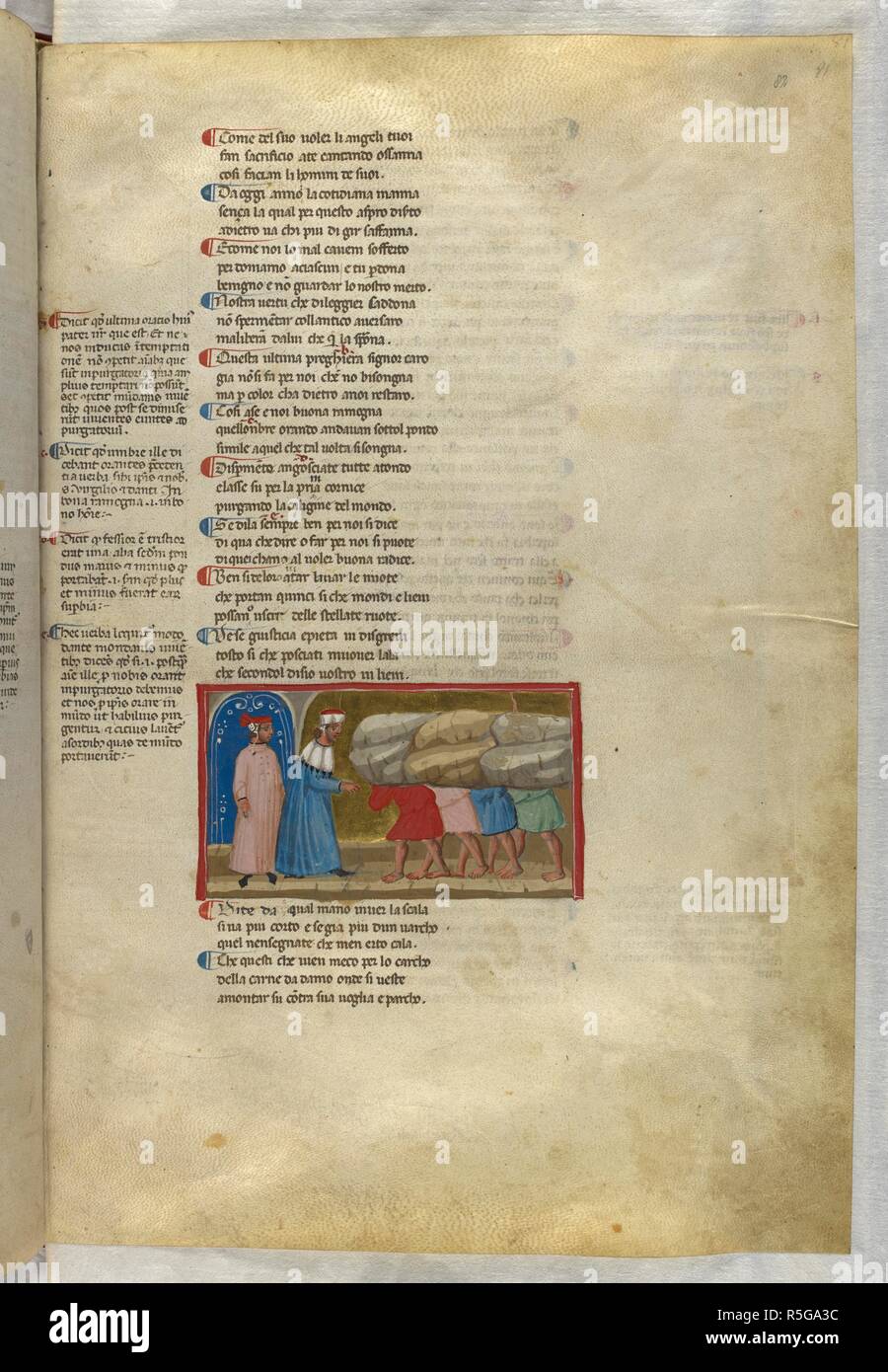 Purgatorio: Virgil speaks to the souls of the proud. Dante Alighieri, Divina Commedia ( The Divine Comedy ), with a commentary in Latin. 1st half of the 14th century. Source: Egerton 943, f.82. Language: Italian, Latin. Stock Photohttps://www.alamy.com/image-license-details/?v=1https://www.alamy.com/purgatorio-virgil-speaks-to-the-souls-of-the-proud-dante-alighieri-divina-commedia-the-divine-comedy-with-a-commentary-in-latin-1st-half-of-the-14th-century-source-egerton-943-f82-language-italian-latin-image227167232.html
Purgatorio: Virgil speaks to the souls of the proud. Dante Alighieri, Divina Commedia ( The Divine Comedy ), with a commentary in Latin. 1st half of the 14th century. Source: Egerton 943, f.82. Language: Italian, Latin. Stock Photohttps://www.alamy.com/image-license-details/?v=1https://www.alamy.com/purgatorio-virgil-speaks-to-the-souls-of-the-proud-dante-alighieri-divina-commedia-the-divine-comedy-with-a-commentary-in-latin-1st-half-of-the-14th-century-source-egerton-943-f82-language-italian-latin-image227167232.htmlRMR5GA3C–Purgatorio: Virgil speaks to the souls of the proud. Dante Alighieri, Divina Commedia ( The Divine Comedy ), with a commentary in Latin. 1st half of the 14th century. Source: Egerton 943, f.82. Language: Italian, Latin.
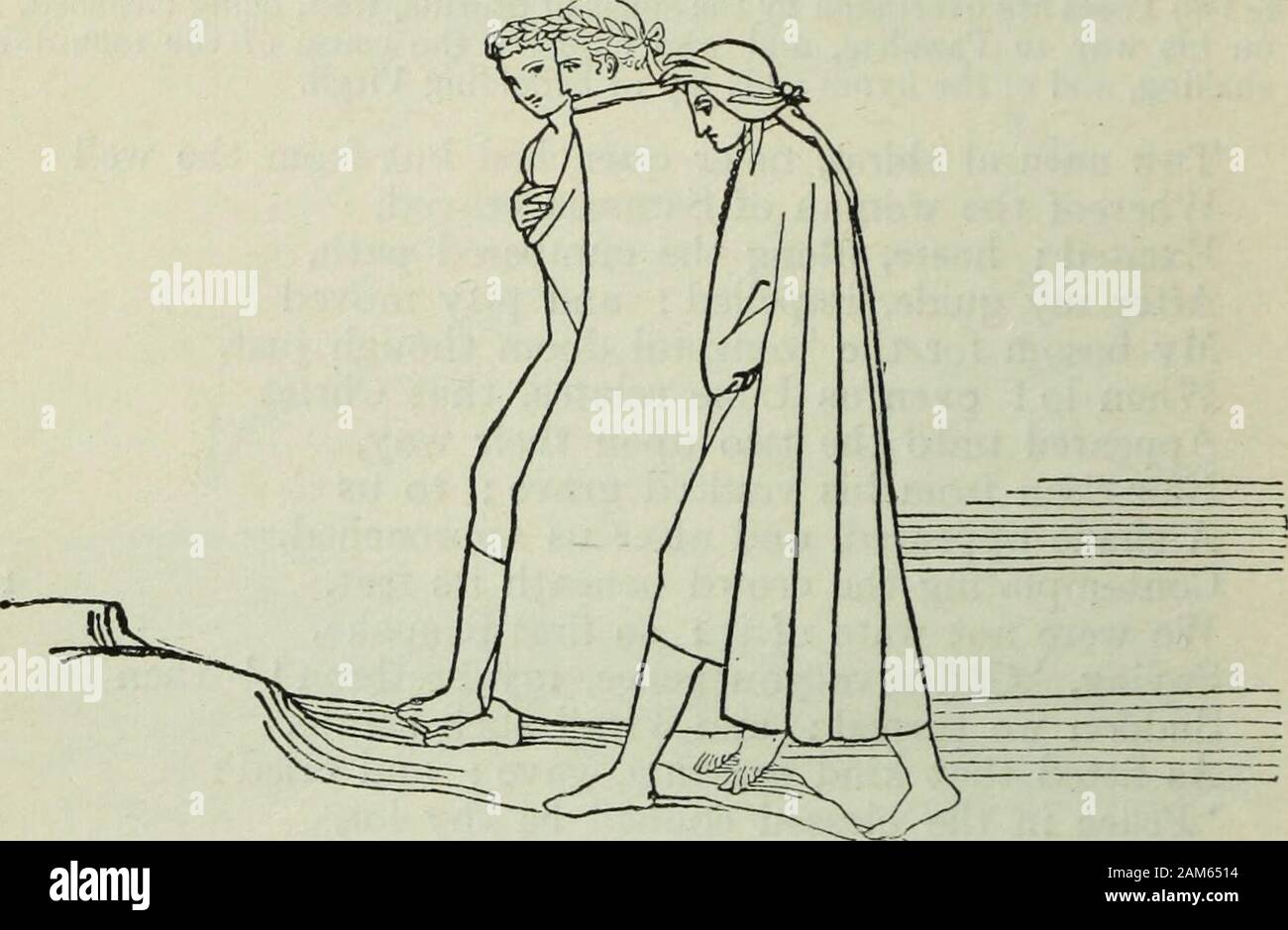 The Vision, or Hell, Purgatory, and Paradise of Dante Alighieri . the kingdom of the just He needs must share. But sithence she, whose wheel Spins day and night, for him not yet had drawn That yarn, which on the fatal distaff piled, Clotho apportions to each wight that breathes; His soul, that sister is to mine and thine, Not of herself could mount; for not like ours 30 Her ken: whence I, from forth the ample gulf Of hell, was taen, to lead him, and will lead CART H 194 THE VISION OF DANTE [Canto xxi Far as my lore avails. But, if thou know,Instruct us for what cause, the mount erewhileThus sh Stock Photohttps://www.alamy.com/image-license-details/?v=1https://www.alamy.com/the-vision-or-hell-purgatory-and-paradise-of-dante-alighieri-the-kingdom-of-the-just-he-needs-must-share-but-sithence-she-whose-wheel-spins-day-and-night-for-him-not-yet-had-drawn-that-yarn-which-on-the-fatal-distaff-piled-clotho-apportions-to-each-wight-that-breathes-his-soul-that-sister-is-to-mine-and-thine-not-of-herself-could-mount-for-not-like-ours-30-her-ken-whence-i-from-forth-the-ample-gulf-of-hell-was-taen-to-lead-him-and-will-lead-cart-h-194-the-vision-of-dante-canto-xxi-far-as-my-lore-avails-but-if-thou-knowinstruct-us-for-what-cause-the-mount-erewhilethus-sh-image339425776.html
The Vision, or Hell, Purgatory, and Paradise of Dante Alighieri . the kingdom of the just He needs must share. But sithence she, whose wheel Spins day and night, for him not yet had drawn That yarn, which on the fatal distaff piled, Clotho apportions to each wight that breathes; His soul, that sister is to mine and thine, Not of herself could mount; for not like ours 30 Her ken: whence I, from forth the ample gulf Of hell, was taen, to lead him, and will lead CART H 194 THE VISION OF DANTE [Canto xxi Far as my lore avails. But, if thou know,Instruct us for what cause, the mount erewhileThus sh Stock Photohttps://www.alamy.com/image-license-details/?v=1https://www.alamy.com/the-vision-or-hell-purgatory-and-paradise-of-dante-alighieri-the-kingdom-of-the-just-he-needs-must-share-but-sithence-she-whose-wheel-spins-day-and-night-for-him-not-yet-had-drawn-that-yarn-which-on-the-fatal-distaff-piled-clotho-apportions-to-each-wight-that-breathes-his-soul-that-sister-is-to-mine-and-thine-not-of-herself-could-mount-for-not-like-ours-30-her-ken-whence-i-from-forth-the-ample-gulf-of-hell-was-taen-to-lead-him-and-will-lead-cart-h-194-the-vision-of-dante-canto-xxi-far-as-my-lore-avails-but-if-thou-knowinstruct-us-for-what-cause-the-mount-erewhilethus-sh-image339425776.htmlRM2AM6514–The Vision, or Hell, Purgatory, and Paradise of Dante Alighieri . the kingdom of the just He needs must share. But sithence she, whose wheel Spins day and night, for him not yet had drawn That yarn, which on the fatal distaff piled, Clotho apportions to each wight that breathes; His soul, that sister is to mine and thine, Not of herself could mount; for not like ours 30 Her ken: whence I, from forth the ample gulf Of hell, was taen, to lead him, and will lead CART H 194 THE VISION OF DANTE [Canto xxi Far as my lore avails. But, if thou know,Instruct us for what cause, the mount erewhileThus sh
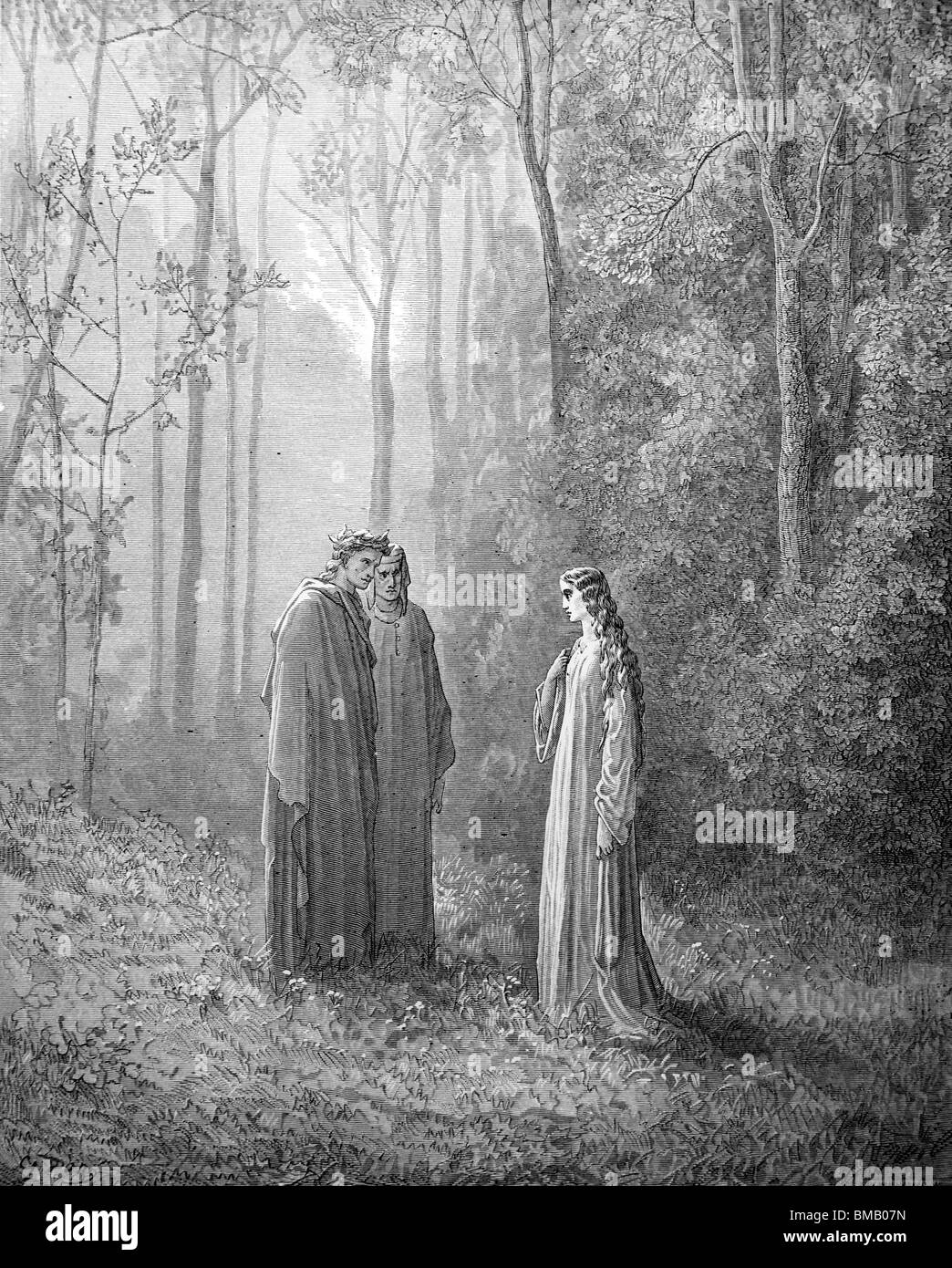 Engraving by Gustave Doré from Dante Alighieri's Divine Comedy 'Purgatory and Paradise'; Dante speaks with Pia de' Tolomei Stock Photohttps://www.alamy.com/image-license-details/?v=1https://www.alamy.com/stock-photo-engraving-by-gustave-dor-from-dante-alighieris-divine-comedy-purgatory-29745177.html
Engraving by Gustave Doré from Dante Alighieri's Divine Comedy 'Purgatory and Paradise'; Dante speaks with Pia de' Tolomei Stock Photohttps://www.alamy.com/image-license-details/?v=1https://www.alamy.com/stock-photo-engraving-by-gustave-dor-from-dante-alighieris-divine-comedy-purgatory-29745177.htmlRMBMB07N–Engraving by Gustave Doré from Dante Alighieri's Divine Comedy 'Purgatory and Paradise'; Dante speaks with Pia de' Tolomei
 Mark thou each dire Erynnis The Vision of Hell Dante Alighieri Gustave Doré divine comedy suffering punishment afterlife Stock Photohttps://www.alamy.com/image-license-details/?v=1https://www.alamy.com/stock-photo-mark-thou-each-dire-erynnis-the-vision-of-hell-dante-alighieri-gustave-39314963.html
Mark thou each dire Erynnis The Vision of Hell Dante Alighieri Gustave Doré divine comedy suffering punishment afterlife Stock Photohttps://www.alamy.com/image-license-details/?v=1https://www.alamy.com/stock-photo-mark-thou-each-dire-erynnis-the-vision-of-hell-dante-alighieri-gustave-39314963.htmlRMC7XXHR–Mark thou each dire Erynnis The Vision of Hell Dante Alighieri Gustave Doré divine comedy suffering punishment afterlife
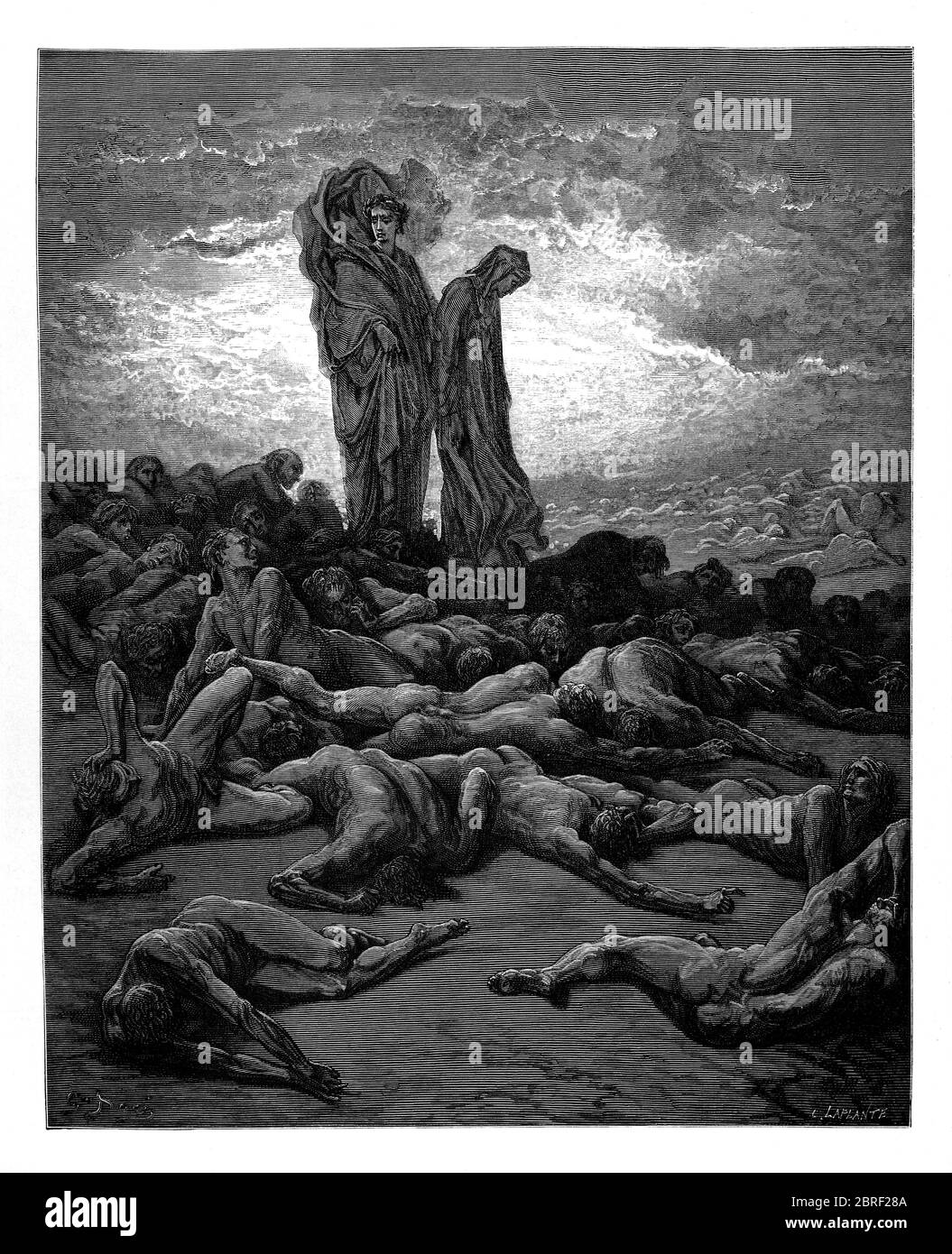 Purgatorio ('Purgatory') is the second part of Dante's Divine Comedy, following the Inferno, and preceding the Paradiso. The poem was written in the early 14th century. It is an allegory telling of the climb of Dante up the Mount of Purgatory, guided by the Roman poet Virgil, except for the last four cantos at which point Beatrice takes over as Dante's guide. Purgatory in the poem is depicted as a mountain in the Southern Hemisphere, consisting of a bottom section (Ante-Purgatory), seven levels of suffering and spiritual growth (associated with the seven deadly sins), and finally the Earthly P Stock Photohttps://www.alamy.com/image-license-details/?v=1https://www.alamy.com/purgatorio-purgatory-is-the-second-part-of-dantes-divine-comedy-following-the-inferno-and-preceding-the-paradiso-the-poem-was-written-in-the-early-14th-century-it-is-an-allegory-telling-of-the-climb-of-dante-up-the-mount-of-purgatory-guided-by-the-roman-poet-virgil-except-for-the-last-four-cantos-at-which-point-beatrice-takes-over-as-dantes-guide-purgatory-in-the-poem-is-depicted-as-a-mountain-in-the-southern-hemisphere-consisting-of-a-bottom-section-ante-purgatory-seven-levels-of-suffering-and-spiritual-growth-associated-with-the-seven-deadly-sins-and-finally-the-earthly-p-image358675530.html
Purgatorio ('Purgatory') is the second part of Dante's Divine Comedy, following the Inferno, and preceding the Paradiso. The poem was written in the early 14th century. It is an allegory telling of the climb of Dante up the Mount of Purgatory, guided by the Roman poet Virgil, except for the last four cantos at which point Beatrice takes over as Dante's guide. Purgatory in the poem is depicted as a mountain in the Southern Hemisphere, consisting of a bottom section (Ante-Purgatory), seven levels of suffering and spiritual growth (associated with the seven deadly sins), and finally the Earthly P Stock Photohttps://www.alamy.com/image-license-details/?v=1https://www.alamy.com/purgatorio-purgatory-is-the-second-part-of-dantes-divine-comedy-following-the-inferno-and-preceding-the-paradiso-the-poem-was-written-in-the-early-14th-century-it-is-an-allegory-telling-of-the-climb-of-dante-up-the-mount-of-purgatory-guided-by-the-roman-poet-virgil-except-for-the-last-four-cantos-at-which-point-beatrice-takes-over-as-dantes-guide-purgatory-in-the-poem-is-depicted-as-a-mountain-in-the-southern-hemisphere-consisting-of-a-bottom-section-ante-purgatory-seven-levels-of-suffering-and-spiritual-growth-associated-with-the-seven-deadly-sins-and-finally-the-earthly-p-image358675530.htmlRF2BRF28A–Purgatorio ('Purgatory') is the second part of Dante's Divine Comedy, following the Inferno, and preceding the Paradiso. The poem was written in the early 14th century. It is an allegory telling of the climb of Dante up the Mount of Purgatory, guided by the Roman poet Virgil, except for the last four cantos at which point Beatrice takes over as Dante's guide. Purgatory in the poem is depicted as a mountain in the Southern Hemisphere, consisting of a bottom section (Ante-Purgatory), seven levels of suffering and spiritual growth (associated with the seven deadly sins), and finally the Earthly P
 Dante, Virgil and stars of the southern sky Stock Photohttps://www.alamy.com/image-license-details/?v=1https://www.alamy.com/stock-photo-dante-virgil-and-stars-of-the-southern-sky-29777343.html
Dante, Virgil and stars of the southern sky Stock Photohttps://www.alamy.com/image-license-details/?v=1https://www.alamy.com/stock-photo-dante-virgil-and-stars-of-the-southern-sky-29777343.htmlRMBMCD8F–Dante, Virgil and stars of the southern sky
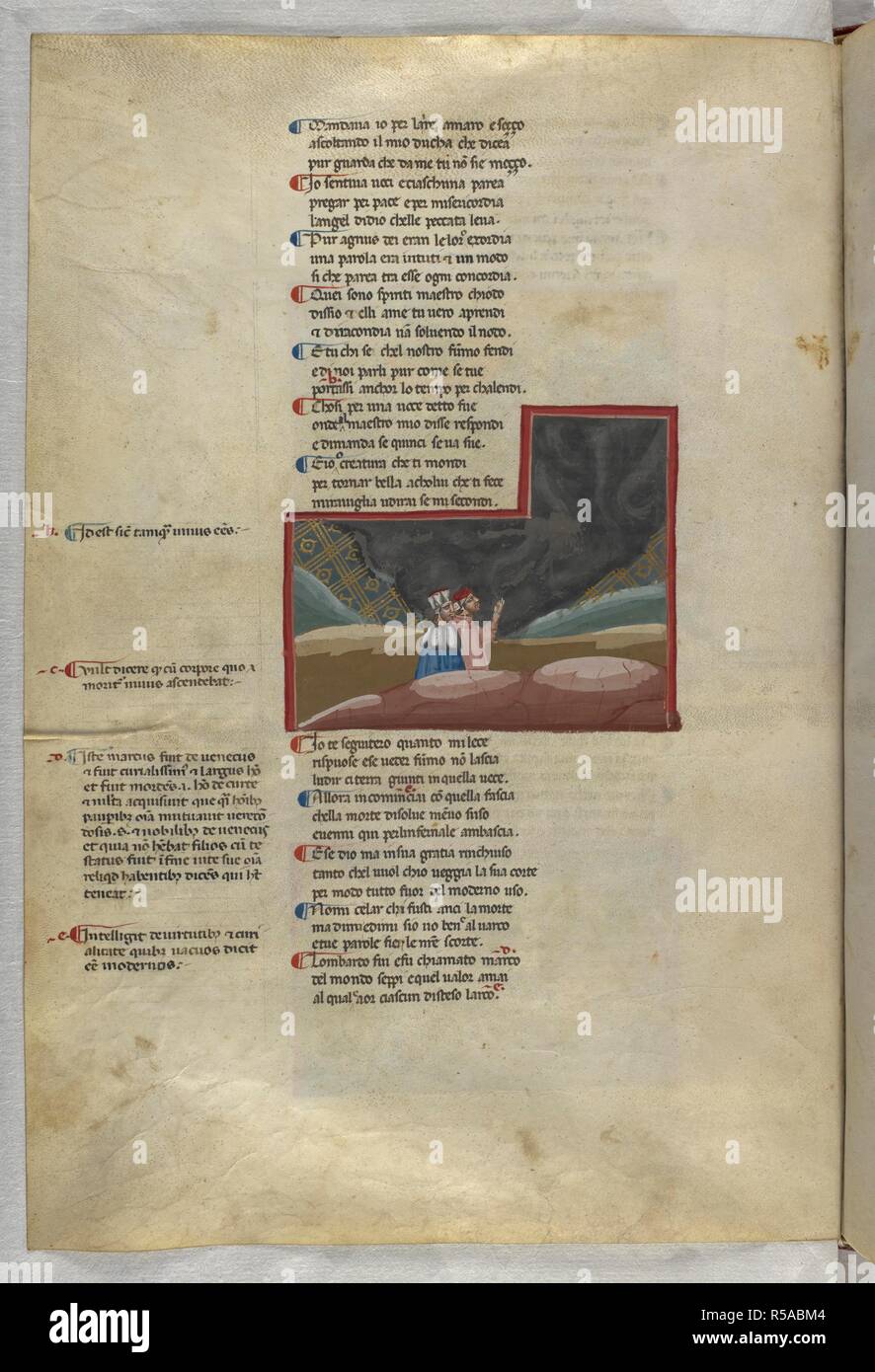 Purgatorio: Dante talks to one of the angry souls. Dante Alighieri, Divina Commedia ( The Divine Comedy ), with a commentary in Latin. 1st half of the 14th century. Source: Egerton 943, f.91v. Language: Italian, Latin. Stock Photohttps://www.alamy.com/image-license-details/?v=1https://www.alamy.com/purgatorio-dante-talks-to-one-of-the-angry-souls-dante-alighieri-divina-commedia-the-divine-comedy-with-a-commentary-in-latin-1st-half-of-the-14th-century-source-egerton-943-f91v-language-italian-latin-image227036772.html
Purgatorio: Dante talks to one of the angry souls. Dante Alighieri, Divina Commedia ( The Divine Comedy ), with a commentary in Latin. 1st half of the 14th century. Source: Egerton 943, f.91v. Language: Italian, Latin. Stock Photohttps://www.alamy.com/image-license-details/?v=1https://www.alamy.com/purgatorio-dante-talks-to-one-of-the-angry-souls-dante-alighieri-divina-commedia-the-divine-comedy-with-a-commentary-in-latin-1st-half-of-the-14th-century-source-egerton-943-f91v-language-italian-latin-image227036772.htmlRMR5ABM4–Purgatorio: Dante talks to one of the angry souls. Dante Alighieri, Divina Commedia ( The Divine Comedy ), with a commentary in Latin. 1st half of the 14th century. Source: Egerton 943, f.91v. Language: Italian, Latin.
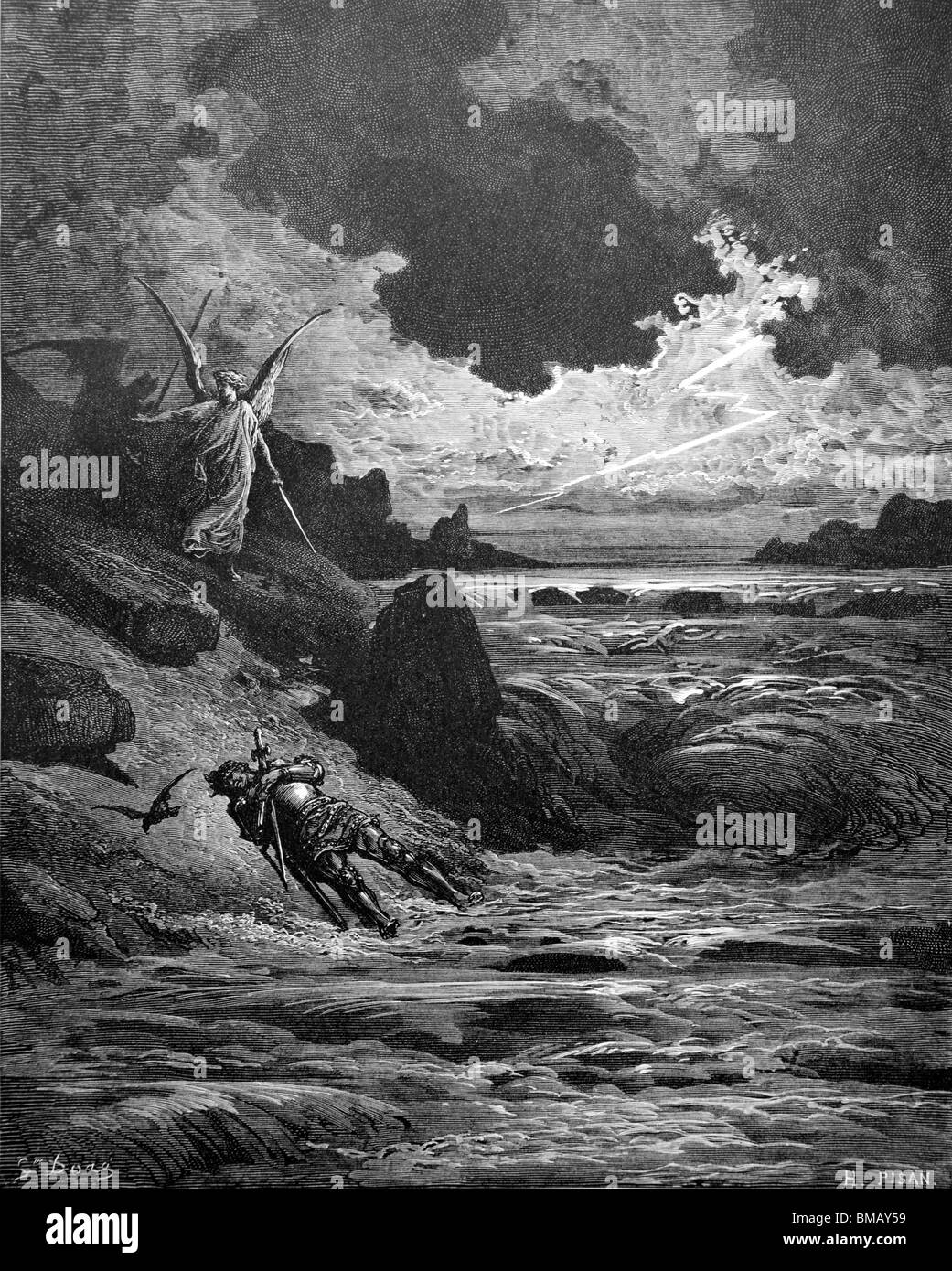 Engraving by Gustave Doré from Dante Alighieri's Divine Comedy 'Purgatory and Paradise'; Buonconte da Montefeltro lies dying Stock Photohttps://www.alamy.com/image-license-details/?v=1https://www.alamy.com/stock-photo-engraving-by-gustave-dor-from-dante-alighieris-divine-comedy-purgatory-29744325.html
Engraving by Gustave Doré from Dante Alighieri's Divine Comedy 'Purgatory and Paradise'; Buonconte da Montefeltro lies dying Stock Photohttps://www.alamy.com/image-license-details/?v=1https://www.alamy.com/stock-photo-engraving-by-gustave-dor-from-dante-alighieris-divine-comedy-purgatory-29744325.htmlRMBMAY59–Engraving by Gustave Doré from Dante Alighieri's Divine Comedy 'Purgatory and Paradise'; Buonconte da Montefeltro lies dying
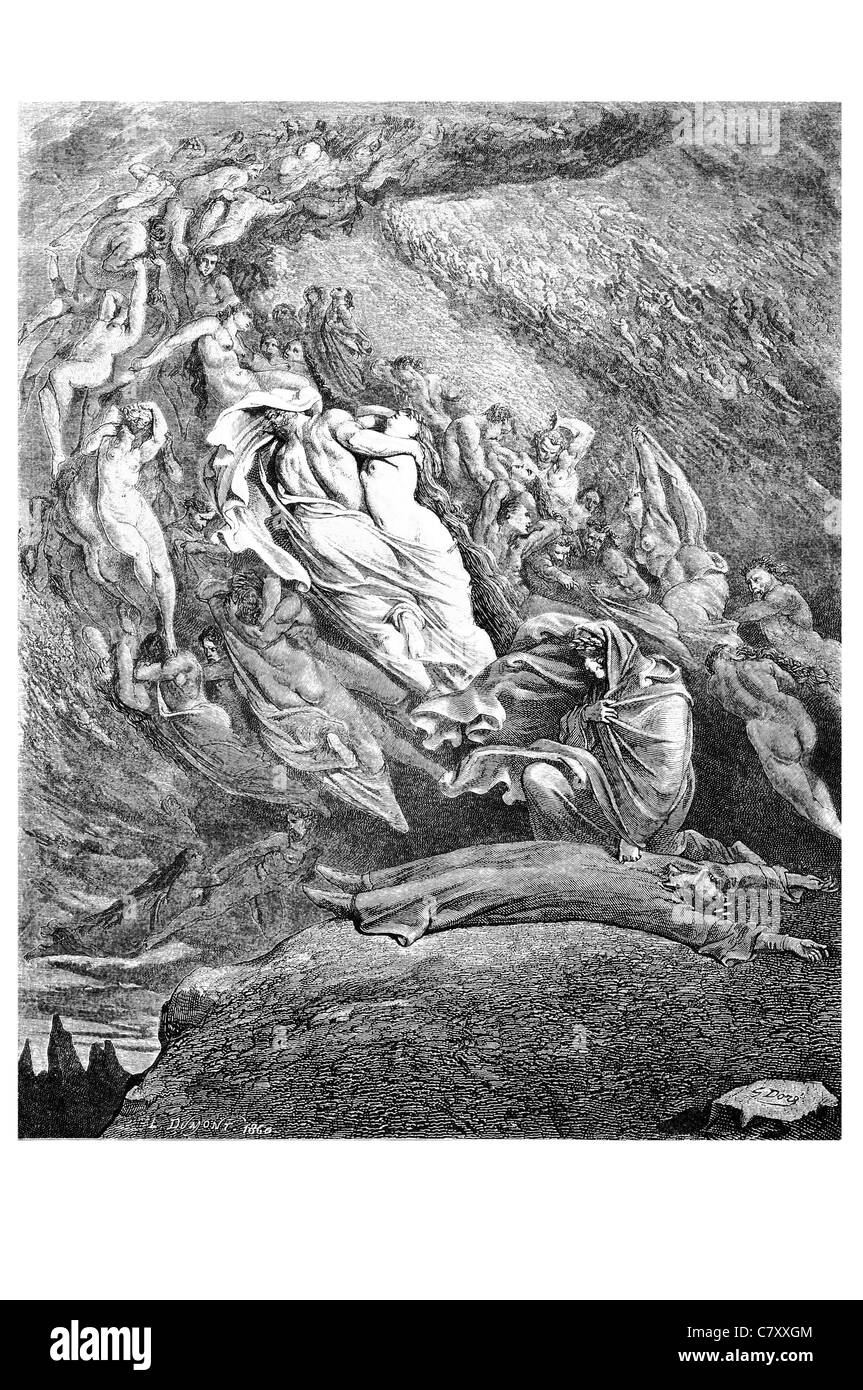 I through compassion fainting seem'd not far from death and like a corse fell to the ground The Vision of Hell Dante Alighieri Stock Photohttps://www.alamy.com/image-license-details/?v=1https://www.alamy.com/stock-photo-i-through-compassion-fainting-seemd-not-far-from-death-and-like-a-39314932.html
I through compassion fainting seem'd not far from death and like a corse fell to the ground The Vision of Hell Dante Alighieri Stock Photohttps://www.alamy.com/image-license-details/?v=1https://www.alamy.com/stock-photo-i-through-compassion-fainting-seemd-not-far-from-death-and-like-a-39314932.htmlRMC7XXGM–I through compassion fainting seem'd not far from death and like a corse fell to the ground The Vision of Hell Dante Alighieri
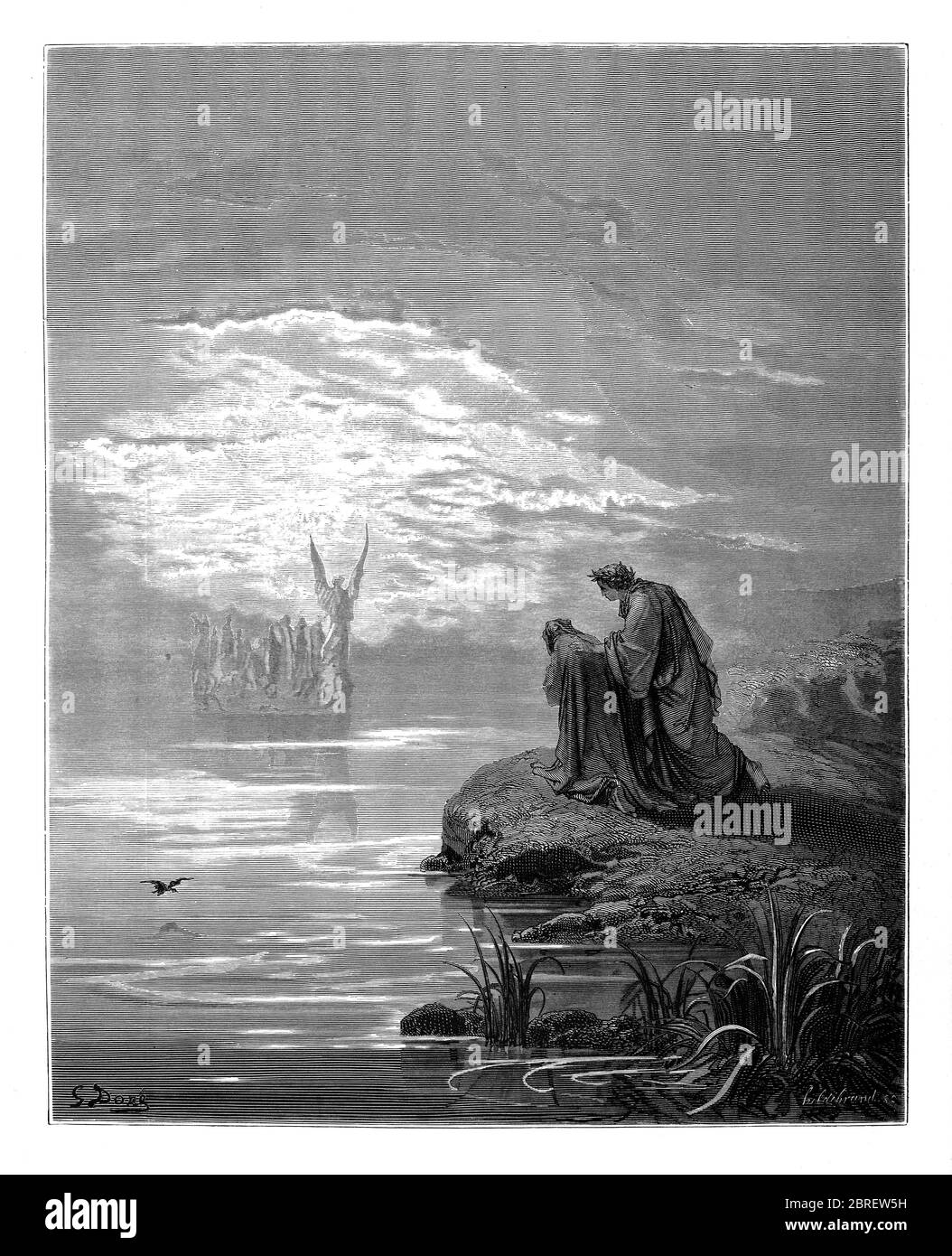 Purgatorio ('Purgatory') is the second part of Dante's Divine Comedy, following the Inferno, and preceding the Paradiso. The poem was written in the early 14th century. It is an allegory telling of the climb of Dante up the Mount of Purgatory, guided by the Roman poet Virgil, except for the last four cantos at which point Beatrice takes over as Dante's guide. Purgatory in the poem is depicted as a mountain in the Southern Hemisphere, consisting of a bottom section (Ante-Purgatory), seven levels of suffering and spiritual growth (associated with the seven deadly sins), and finally the Earthly P Stock Photohttps://www.alamy.com/image-license-details/?v=1https://www.alamy.com/purgatorio-purgatory-is-the-second-part-of-dantes-divine-comedy-following-the-inferno-and-preceding-the-paradiso-the-poem-was-written-in-the-early-14th-century-it-is-an-allegory-telling-of-the-climb-of-dante-up-the-mount-of-purgatory-guided-by-the-roman-poet-virgil-except-for-the-last-four-cantos-at-which-point-beatrice-takes-over-as-dantes-guide-purgatory-in-the-poem-is-depicted-as-a-mountain-in-the-southern-hemisphere-consisting-of-a-bottom-section-ante-purgatory-seven-levels-of-suffering-and-spiritual-growth-associated-with-the-seven-deadly-sins-and-finally-the-earthly-p-image358671533.html
Purgatorio ('Purgatory') is the second part of Dante's Divine Comedy, following the Inferno, and preceding the Paradiso. The poem was written in the early 14th century. It is an allegory telling of the climb of Dante up the Mount of Purgatory, guided by the Roman poet Virgil, except for the last four cantos at which point Beatrice takes over as Dante's guide. Purgatory in the poem is depicted as a mountain in the Southern Hemisphere, consisting of a bottom section (Ante-Purgatory), seven levels of suffering and spiritual growth (associated with the seven deadly sins), and finally the Earthly P Stock Photohttps://www.alamy.com/image-license-details/?v=1https://www.alamy.com/purgatorio-purgatory-is-the-second-part-of-dantes-divine-comedy-following-the-inferno-and-preceding-the-paradiso-the-poem-was-written-in-the-early-14th-century-it-is-an-allegory-telling-of-the-climb-of-dante-up-the-mount-of-purgatory-guided-by-the-roman-poet-virgil-except-for-the-last-four-cantos-at-which-point-beatrice-takes-over-as-dantes-guide-purgatory-in-the-poem-is-depicted-as-a-mountain-in-the-southern-hemisphere-consisting-of-a-bottom-section-ante-purgatory-seven-levels-of-suffering-and-spiritual-growth-associated-with-the-seven-deadly-sins-and-finally-the-earthly-p-image358671533.htmlRF2BREW5H–Purgatorio ('Purgatory') is the second part of Dante's Divine Comedy, following the Inferno, and preceding the Paradiso. The poem was written in the early 14th century. It is an allegory telling of the climb of Dante up the Mount of Purgatory, guided by the Roman poet Virgil, except for the last four cantos at which point Beatrice takes over as Dante's guide. Purgatory in the poem is depicted as a mountain in the Southern Hemisphere, consisting of a bottom section (Ante-Purgatory), seven levels of suffering and spiritual growth (associated with the seven deadly sins), and finally the Earthly P
 Dante and Virgil in Moonrise Stock Photohttps://www.alamy.com/image-license-details/?v=1https://www.alamy.com/stock-photo-dante-and-virgil-in-moonrise-29778516.html
Dante and Virgil in Moonrise Stock Photohttps://www.alamy.com/image-license-details/?v=1https://www.alamy.com/stock-photo-dante-and-virgil-in-moonrise-29778516.htmlRMBMCEPC–Dante and Virgil in Moonrise
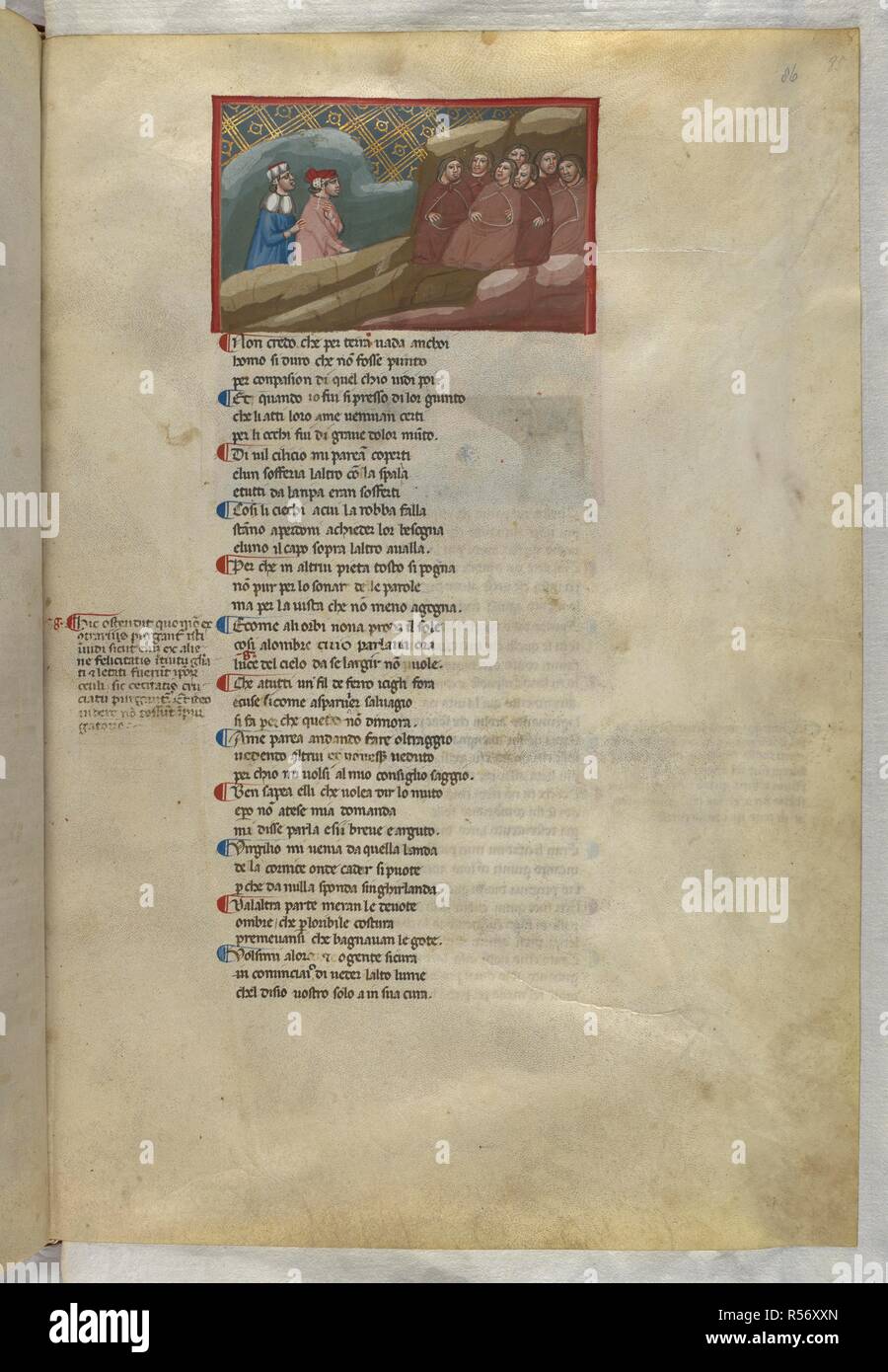 Purgatorio: Dante and Virgil with the souls of the envious, with their eyes stitched shut reciting the litany. Dante Alighieri, Divina Commedia ( The Divine Comedy ), with a commentary in Latin. 1st half of the 14th century. Source: Egerton 943, f.86. Language: Italian, Latin. Stock Photohttps://www.alamy.com/image-license-details/?v=1https://www.alamy.com/purgatorio-dante-and-virgil-with-the-souls-of-the-envious-with-their-eyes-stitched-shut-reciting-the-litany-dante-alighieri-divina-commedia-the-divine-comedy-with-a-commentary-in-latin-1st-half-of-the-14th-century-source-egerton-943-f86-language-italian-latin-image226960909.html
Purgatorio: Dante and Virgil with the souls of the envious, with their eyes stitched shut reciting the litany. Dante Alighieri, Divina Commedia ( The Divine Comedy ), with a commentary in Latin. 1st half of the 14th century. Source: Egerton 943, f.86. Language: Italian, Latin. Stock Photohttps://www.alamy.com/image-license-details/?v=1https://www.alamy.com/purgatorio-dante-and-virgil-with-the-souls-of-the-envious-with-their-eyes-stitched-shut-reciting-the-litany-dante-alighieri-divina-commedia-the-divine-comedy-with-a-commentary-in-latin-1st-half-of-the-14th-century-source-egerton-943-f86-language-italian-latin-image226960909.htmlRMR56XXN–Purgatorio: Dante and Virgil with the souls of the envious, with their eyes stitched shut reciting the litany. Dante Alighieri, Divina Commedia ( The Divine Comedy ), with a commentary in Latin. 1st half of the 14th century. Source: Egerton 943, f.86. Language: Italian, Latin.
 Engraving by Gustave Doré from Dante Alighieri's Divine Comedy 'Purgatory and Paradise'; Stock Photohttps://www.alamy.com/image-license-details/?v=1https://www.alamy.com/stock-photo-engraving-by-gustave-dor-from-dante-alighieris-divine-comedy-purgatory-29749586.html
Engraving by Gustave Doré from Dante Alighieri's Divine Comedy 'Purgatory and Paradise'; Stock Photohttps://www.alamy.com/image-license-details/?v=1https://www.alamy.com/stock-photo-engraving-by-gustave-dor-from-dante-alighieris-divine-comedy-purgatory-29749586.htmlRMBMB5W6–Engraving by Gustave Doré from Dante Alighieri's Divine Comedy 'Purgatory and Paradise';
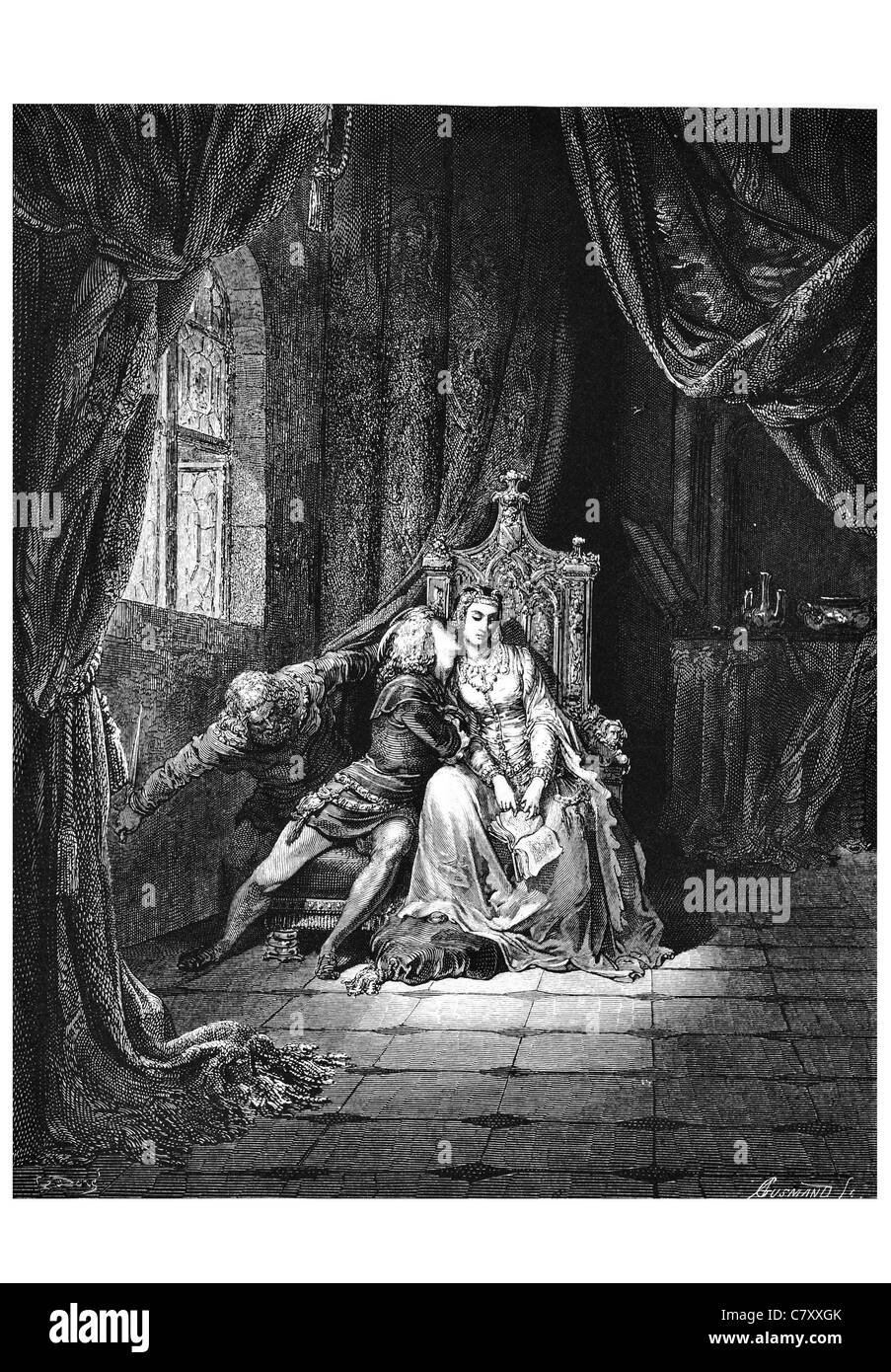 In its leaves that day we read no more throne princess regal chamber The Vision Hell Dante Alighieri Gustave Doré divine comedy Stock Photohttps://www.alamy.com/image-license-details/?v=1https://www.alamy.com/stock-photo-in-its-leaves-that-day-we-read-no-more-throne-princess-regal-chamber-39314931.html
In its leaves that day we read no more throne princess regal chamber The Vision Hell Dante Alighieri Gustave Doré divine comedy Stock Photohttps://www.alamy.com/image-license-details/?v=1https://www.alamy.com/stock-photo-in-its-leaves-that-day-we-read-no-more-throne-princess-regal-chamber-39314931.htmlRMC7XXGK–In its leaves that day we read no more throne princess regal chamber The Vision Hell Dante Alighieri Gustave Doré divine comedy
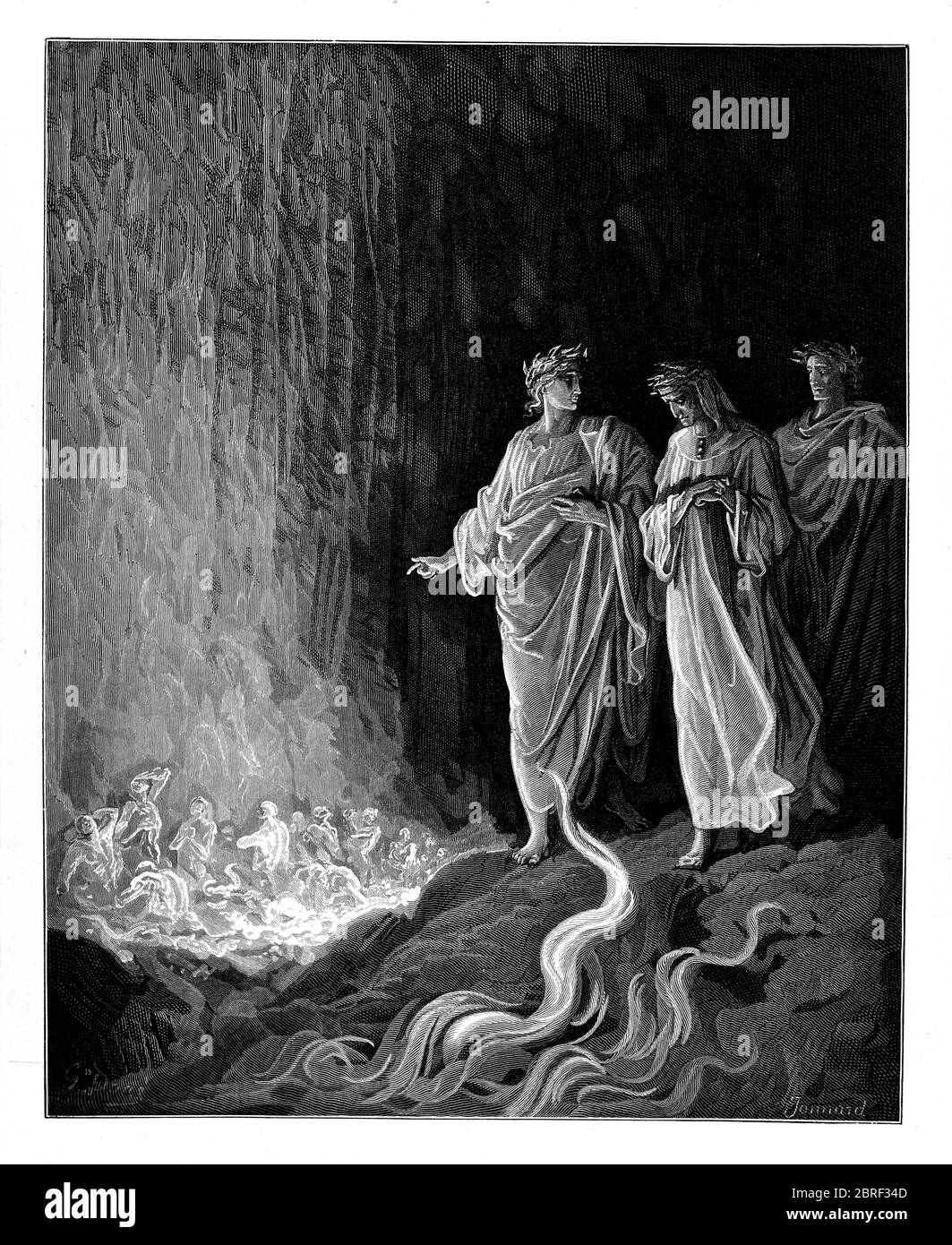 Purgatorio ('Purgatory') is the second part of Dante's Divine Comedy, following the Inferno, and preceding the Paradiso. The poem was written in the early 14th century. It is an allegory telling of the climb of Dante up the Mount of Purgatory, guided by the Roman poet Virgil, except for the last four cantos at which point Beatrice takes over as Dante's guide. Purgatory in the poem is depicted as a mountain in the Southern Hemisphere, consisting of a bottom section (Ante-Purgatory), seven levels of suffering and spiritual growth (associated with the seven deadly sins), and finally the Earthly P Stock Photohttps://www.alamy.com/image-license-details/?v=1https://www.alamy.com/purgatorio-purgatory-is-the-second-part-of-dantes-divine-comedy-following-the-inferno-and-preceding-the-paradiso-the-poem-was-written-in-the-early-14th-century-it-is-an-allegory-telling-of-the-climb-of-dante-up-the-mount-of-purgatory-guided-by-the-roman-poet-virgil-except-for-the-last-four-cantos-at-which-point-beatrice-takes-over-as-dantes-guide-purgatory-in-the-poem-is-depicted-as-a-mountain-in-the-southern-hemisphere-consisting-of-a-bottom-section-ante-purgatory-seven-levels-of-suffering-and-spiritual-growth-associated-with-the-seven-deadly-sins-and-finally-the-earthly-p-image358676205.html
Purgatorio ('Purgatory') is the second part of Dante's Divine Comedy, following the Inferno, and preceding the Paradiso. The poem was written in the early 14th century. It is an allegory telling of the climb of Dante up the Mount of Purgatory, guided by the Roman poet Virgil, except for the last four cantos at which point Beatrice takes over as Dante's guide. Purgatory in the poem is depicted as a mountain in the Southern Hemisphere, consisting of a bottom section (Ante-Purgatory), seven levels of suffering and spiritual growth (associated with the seven deadly sins), and finally the Earthly P Stock Photohttps://www.alamy.com/image-license-details/?v=1https://www.alamy.com/purgatorio-purgatory-is-the-second-part-of-dantes-divine-comedy-following-the-inferno-and-preceding-the-paradiso-the-poem-was-written-in-the-early-14th-century-it-is-an-allegory-telling-of-the-climb-of-dante-up-the-mount-of-purgatory-guided-by-the-roman-poet-virgil-except-for-the-last-four-cantos-at-which-point-beatrice-takes-over-as-dantes-guide-purgatory-in-the-poem-is-depicted-as-a-mountain-in-the-southern-hemisphere-consisting-of-a-bottom-section-ante-purgatory-seven-levels-of-suffering-and-spiritual-growth-associated-with-the-seven-deadly-sins-and-finally-the-earthly-p-image358676205.htmlRF2BRF34D–Purgatorio ('Purgatory') is the second part of Dante's Divine Comedy, following the Inferno, and preceding the Paradiso. The poem was written in the early 14th century. It is an allegory telling of the climb of Dante up the Mount of Purgatory, guided by the Roman poet Virgil, except for the last four cantos at which point Beatrice takes over as Dante's guide. Purgatory in the poem is depicted as a mountain in the Southern Hemisphere, consisting of a bottom section (Ante-Purgatory), seven levels of suffering and spiritual growth (associated with the seven deadly sins), and finally the Earthly P
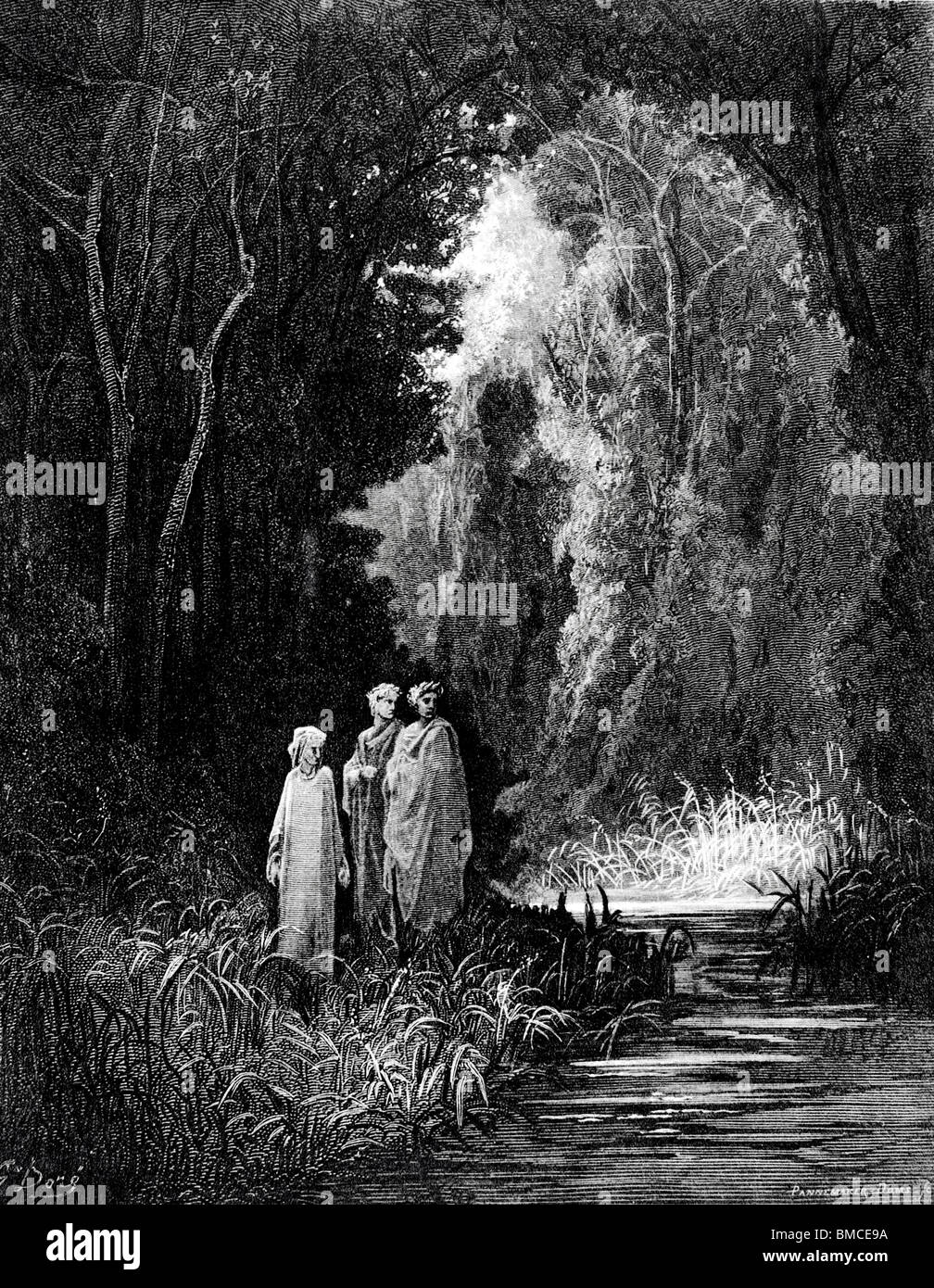 Dante in front of a streamlet Stock Photohttps://www.alamy.com/image-license-details/?v=1https://www.alamy.com/stock-photo-dante-in-front-of-a-streamlet-29778150.html
Dante in front of a streamlet Stock Photohttps://www.alamy.com/image-license-details/?v=1https://www.alamy.com/stock-photo-dante-in-front-of-a-streamlet-29778150.htmlRMBMCE9A–Dante in front of a streamlet
 Purgatorio: The souls arriving on the bank; Dante greets his childhood friend, Casella, the musician. Dante Alighieri, Divina Commedia ( The Divine Comedy ), with a commentary in Latin. 1st half of the 14th century. Source: Egerton 943, f.65v. Language: Italian, Latin. Stock Photohttps://www.alamy.com/image-license-details/?v=1https://www.alamy.com/purgatorio-the-souls-arriving-on-the-bank-dante-greets-his-childhood-friend-casella-the-musician-dante-alighieri-divina-commedia-the-divine-comedy-with-a-commentary-in-latin-1st-half-of-the-14th-century-source-egerton-943-f65v-language-italian-latin-image226991025.html
Purgatorio: The souls arriving on the bank; Dante greets his childhood friend, Casella, the musician. Dante Alighieri, Divina Commedia ( The Divine Comedy ), with a commentary in Latin. 1st half of the 14th century. Source: Egerton 943, f.65v. Language: Italian, Latin. Stock Photohttps://www.alamy.com/image-license-details/?v=1https://www.alamy.com/purgatorio-the-souls-arriving-on-the-bank-dante-greets-his-childhood-friend-casella-the-musician-dante-alighieri-divina-commedia-the-divine-comedy-with-a-commentary-in-latin-1st-half-of-the-14th-century-source-egerton-943-f65v-language-italian-latin-image226991025.htmlRMR589A9–Purgatorio: The souls arriving on the bank; Dante greets his childhood friend, Casella, the musician. Dante Alighieri, Divina Commedia ( The Divine Comedy ), with a commentary in Latin. 1st half of the 14th century. Source: Egerton 943, f.65v. Language: Italian, Latin.
 Engraving by Gustave Doré from Dante Alighieri's Divine Comedy 'Purgatory and Paradise'; The Terrace of the Slothful Stock Photohttps://www.alamy.com/image-license-details/?v=1https://www.alamy.com/stock-photo-engraving-by-gustave-dor-from-dante-alighieris-divine-comedy-purgatory-29749565.html
Engraving by Gustave Doré from Dante Alighieri's Divine Comedy 'Purgatory and Paradise'; The Terrace of the Slothful Stock Photohttps://www.alamy.com/image-license-details/?v=1https://www.alamy.com/stock-photo-engraving-by-gustave-dor-from-dante-alighieris-divine-comedy-purgatory-29749565.htmlRMBMB5TD–Engraving by Gustave Doré from Dante Alighieri's Divine Comedy 'Purgatory and Paradise'; The Terrace of the Slothful
 Haste now the foremost cried now haste thee death! The Vision of Hell Dante Alighieri Gustave Doré divine comedy suffering Stock Photohttps://www.alamy.com/image-license-details/?v=1https://www.alamy.com/stock-photo-haste-now-the-foremost-cried-now-haste-thee-death!-the-vision-of-hell-39314995.html
Haste now the foremost cried now haste thee death! The Vision of Hell Dante Alighieri Gustave Doré divine comedy suffering Stock Photohttps://www.alamy.com/image-license-details/?v=1https://www.alamy.com/stock-photo-haste-now-the-foremost-cried-now-haste-thee-death!-the-vision-of-hell-39314995.htmlRMC7XXJY–Haste now the foremost cried now haste thee death! The Vision of Hell Dante Alighieri Gustave Doré divine comedy suffering
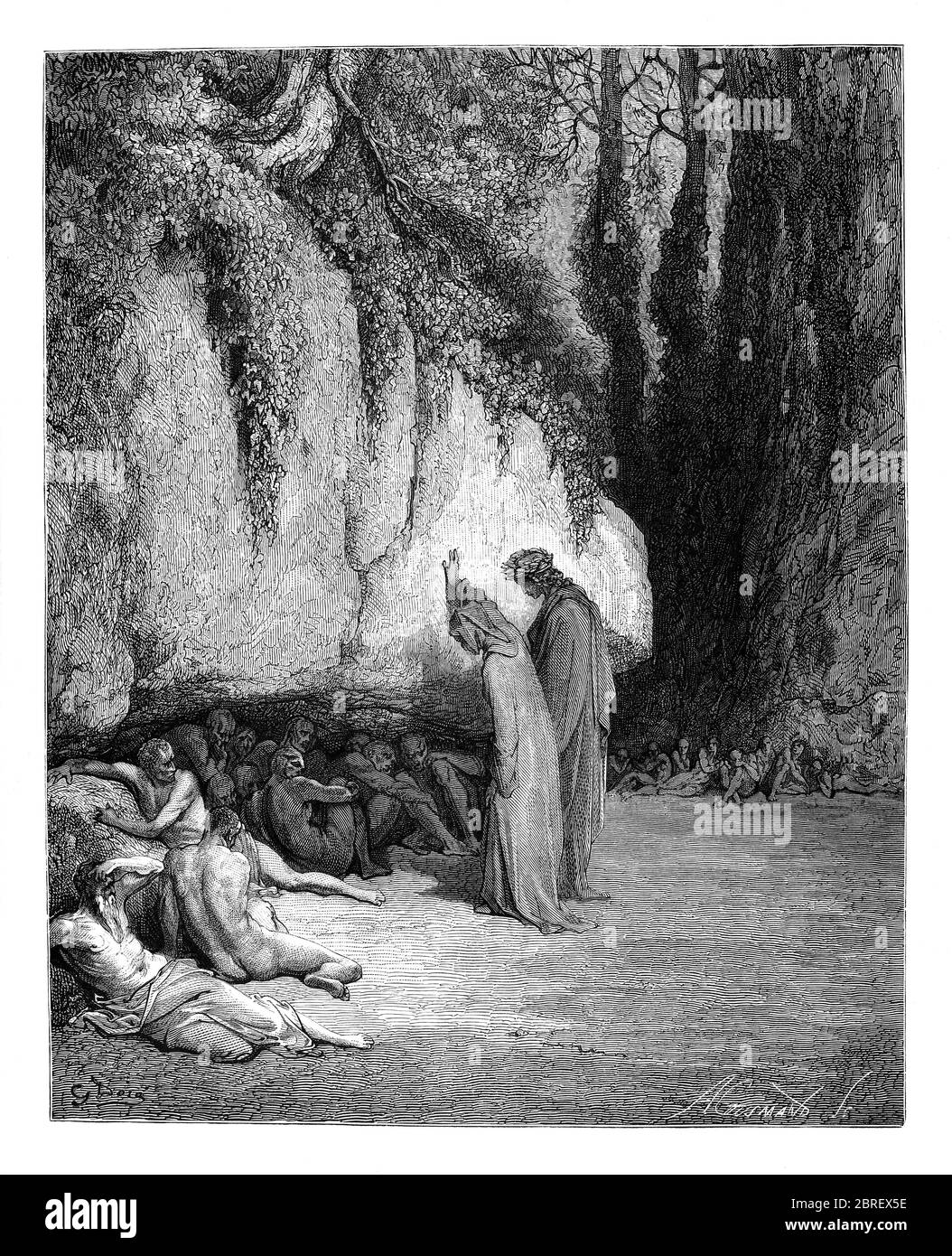 Purgatorio ('Purgatory') is the second part of Dante's Divine Comedy, following the Inferno, and preceding the Paradiso. The poem was written in the early 14th century. It is an allegory telling of the climb of Dante up the Mount of Purgatory, guided by the Roman poet Virgil, except for the last four cantos at which point Beatrice takes over as Dante's guide. Purgatory in the poem is depicted as a mountain in the Southern Hemisphere, consisting of a bottom section (Ante-Purgatory), seven levels of suffering and spiritual growth (associated with the seven deadly sins), and finally the Earthly P Stock Photohttps://www.alamy.com/image-license-details/?v=1https://www.alamy.com/purgatorio-purgatory-is-the-second-part-of-dantes-divine-comedy-following-the-inferno-and-preceding-the-paradiso-the-poem-was-written-in-the-early-14th-century-it-is-an-allegory-telling-of-the-climb-of-dante-up-the-mount-of-purgatory-guided-by-the-roman-poet-virgil-except-for-the-last-four-cantos-at-which-point-beatrice-takes-over-as-dantes-guide-purgatory-in-the-poem-is-depicted-as-a-mountain-in-the-southern-hemisphere-consisting-of-a-bottom-section-ante-purgatory-seven-levels-of-suffering-and-spiritual-growth-associated-with-the-seven-deadly-sins-and-finally-the-earthly-p-image358672314.html
Purgatorio ('Purgatory') is the second part of Dante's Divine Comedy, following the Inferno, and preceding the Paradiso. The poem was written in the early 14th century. It is an allegory telling of the climb of Dante up the Mount of Purgatory, guided by the Roman poet Virgil, except for the last four cantos at which point Beatrice takes over as Dante's guide. Purgatory in the poem is depicted as a mountain in the Southern Hemisphere, consisting of a bottom section (Ante-Purgatory), seven levels of suffering and spiritual growth (associated with the seven deadly sins), and finally the Earthly P Stock Photohttps://www.alamy.com/image-license-details/?v=1https://www.alamy.com/purgatorio-purgatory-is-the-second-part-of-dantes-divine-comedy-following-the-inferno-and-preceding-the-paradiso-the-poem-was-written-in-the-early-14th-century-it-is-an-allegory-telling-of-the-climb-of-dante-up-the-mount-of-purgatory-guided-by-the-roman-poet-virgil-except-for-the-last-four-cantos-at-which-point-beatrice-takes-over-as-dantes-guide-purgatory-in-the-poem-is-depicted-as-a-mountain-in-the-southern-hemisphere-consisting-of-a-bottom-section-ante-purgatory-seven-levels-of-suffering-and-spiritual-growth-associated-with-the-seven-deadly-sins-and-finally-the-earthly-p-image358672314.htmlRF2BREX5E–Purgatorio ('Purgatory') is the second part of Dante's Divine Comedy, following the Inferno, and preceding the Paradiso. The poem was written in the early 14th century. It is an allegory telling of the climb of Dante up the Mount of Purgatory, guided by the Roman poet Virgil, except for the last four cantos at which point Beatrice takes over as Dante's guide. Purgatory in the poem is depicted as a mountain in the Southern Hemisphere, consisting of a bottom section (Ante-Purgatory), seven levels of suffering and spiritual growth (associated with the seven deadly sins), and finally the Earthly P
 The guardian of Purgatory Stock Photohttps://www.alamy.com/image-license-details/?v=1https://www.alamy.com/stock-photo-the-guardian-of-purgatory-29778377.html
The guardian of Purgatory Stock Photohttps://www.alamy.com/image-license-details/?v=1https://www.alamy.com/stock-photo-the-guardian-of-purgatory-29778377.htmlRMBMCEHD–The guardian of Purgatory
 Purgatorio: Dante and Virgil with a group of penitents; they meet souls who repented too late. Dante Alighieri, Divina Commedia ( The Divine Comedy ), with a commentary in Latin. 1st half of the 14th century. Source: Egerton 943, f.70. Language: Italian, Latin. Stock Photohttps://www.alamy.com/image-license-details/?v=1https://www.alamy.com/purgatorio-dante-and-virgil-with-a-group-of-penitents-they-meet-souls-who-repented-too-late-dante-alighieri-divina-commedia-the-divine-comedy-with-a-commentary-in-latin-1st-half-of-the-14th-century-source-egerton-943-f70-language-italian-latin-image227107145.html
Purgatorio: Dante and Virgil with a group of penitents; they meet souls who repented too late. Dante Alighieri, Divina Commedia ( The Divine Comedy ), with a commentary in Latin. 1st half of the 14th century. Source: Egerton 943, f.70. Language: Italian, Latin. Stock Photohttps://www.alamy.com/image-license-details/?v=1https://www.alamy.com/purgatorio-dante-and-virgil-with-a-group-of-penitents-they-meet-souls-who-repented-too-late-dante-alighieri-divina-commedia-the-divine-comedy-with-a-commentary-in-latin-1st-half-of-the-14th-century-source-egerton-943-f70-language-italian-latin-image227107145.htmlRMR5DHDD–Purgatorio: Dante and Virgil with a group of penitents; they meet souls who repented too late. Dante Alighieri, Divina Commedia ( The Divine Comedy ), with a commentary in Latin. 1st half of the 14th century. Source: Egerton 943, f.70. Language: Italian, Latin.
 Engraving by Gustave Doré from Dante Alighieri's Divine Comedy 'Purgatory and Paradise'; Sordello embraces Virgil Stock Photohttps://www.alamy.com/image-license-details/?v=1https://www.alamy.com/stock-photo-engraving-by-gustave-dor-from-dante-alighieris-divine-comedy-purgatory-29744414.html
Engraving by Gustave Doré from Dante Alighieri's Divine Comedy 'Purgatory and Paradise'; Sordello embraces Virgil Stock Photohttps://www.alamy.com/image-license-details/?v=1https://www.alamy.com/stock-photo-engraving-by-gustave-dor-from-dante-alighieris-divine-comedy-purgatory-29744414.htmlRMBMAY8E–Engraving by Gustave Doré from Dante Alighieri's Divine Comedy 'Purgatory and Paradise'; Sordello embraces Virgil
 why greedily thus bendest more on me than on these other filthy ones thy ken The Vision of Hell Dante Alighieri Gustave Doré Stock Photohttps://www.alamy.com/image-license-details/?v=1https://www.alamy.com/stock-photo-why-greedily-thus-bendest-more-on-me-than-on-these-other-filthy-ones-39315034.html
why greedily thus bendest more on me than on these other filthy ones thy ken The Vision of Hell Dante Alighieri Gustave Doré Stock Photohttps://www.alamy.com/image-license-details/?v=1https://www.alamy.com/stock-photo-why-greedily-thus-bendest-more-on-me-than-on-these-other-filthy-ones-39315034.htmlRMC7XXMA–why greedily thus bendest more on me than on these other filthy ones thy ken The Vision of Hell Dante Alighieri Gustave Doré
 Purgatorio ('Purgatory') is the second part of Dante's Divine Comedy, following the Inferno, and preceding the Paradiso. The poem was written in the early 14th century. It is an allegory telling of the climb of Dante up the Mount of Purgatory, guided by the Roman poet Virgil, except for the last four cantos at which point Beatrice takes over as Dante's guide. Purgatory in the poem is depicted as a mountain in the Southern Hemisphere, consisting of a bottom section (Ante-Purgatory), seven levels of suffering and spiritual growth (associated with the seven deadly sins), and finally the Earthly P Stock Photohttps://www.alamy.com/image-license-details/?v=1https://www.alamy.com/purgatorio-purgatory-is-the-second-part-of-dantes-divine-comedy-following-the-inferno-and-preceding-the-paradiso-the-poem-was-written-in-the-early-14th-century-it-is-an-allegory-telling-of-the-climb-of-dante-up-the-mount-of-purgatory-guided-by-the-roman-poet-virgil-except-for-the-last-four-cantos-at-which-point-beatrice-takes-over-as-dantes-guide-purgatory-in-the-poem-is-depicted-as-a-mountain-in-the-southern-hemisphere-consisting-of-a-bottom-section-ante-purgatory-seven-levels-of-suffering-and-spiritual-growth-associated-with-the-seven-deadly-sins-and-finally-the-earthly-p-image358675120.html
Purgatorio ('Purgatory') is the second part of Dante's Divine Comedy, following the Inferno, and preceding the Paradiso. The poem was written in the early 14th century. It is an allegory telling of the climb of Dante up the Mount of Purgatory, guided by the Roman poet Virgil, except for the last four cantos at which point Beatrice takes over as Dante's guide. Purgatory in the poem is depicted as a mountain in the Southern Hemisphere, consisting of a bottom section (Ante-Purgatory), seven levels of suffering and spiritual growth (associated with the seven deadly sins), and finally the Earthly P Stock Photohttps://www.alamy.com/image-license-details/?v=1https://www.alamy.com/purgatorio-purgatory-is-the-second-part-of-dantes-divine-comedy-following-the-inferno-and-preceding-the-paradiso-the-poem-was-written-in-the-early-14th-century-it-is-an-allegory-telling-of-the-climb-of-dante-up-the-mount-of-purgatory-guided-by-the-roman-poet-virgil-except-for-the-last-four-cantos-at-which-point-beatrice-takes-over-as-dantes-guide-purgatory-in-the-poem-is-depicted-as-a-mountain-in-the-southern-hemisphere-consisting-of-a-bottom-section-ante-purgatory-seven-levels-of-suffering-and-spiritual-growth-associated-with-the-seven-deadly-sins-and-finally-the-earthly-p-image358675120.htmlRF2BRF1NM–Purgatorio ('Purgatory') is the second part of Dante's Divine Comedy, following the Inferno, and preceding the Paradiso. The poem was written in the early 14th century. It is an allegory telling of the climb of Dante up the Mount of Purgatory, guided by the Roman poet Virgil, except for the last four cantos at which point Beatrice takes over as Dante's guide. Purgatory in the poem is depicted as a mountain in the Southern Hemisphere, consisting of a bottom section (Ante-Purgatory), seven levels of suffering and spiritual growth (associated with the seven deadly sins), and finally the Earthly P
 Struggle for the soul Stock Photohttps://www.alamy.com/image-license-details/?v=1https://www.alamy.com/stock-photo-struggle-for-the-soul-29777682.html
Struggle for the soul Stock Photohttps://www.alamy.com/image-license-details/?v=1https://www.alamy.com/stock-photo-struggle-for-the-soul-29777682.htmlRMBMCDMJ–Struggle for the soul
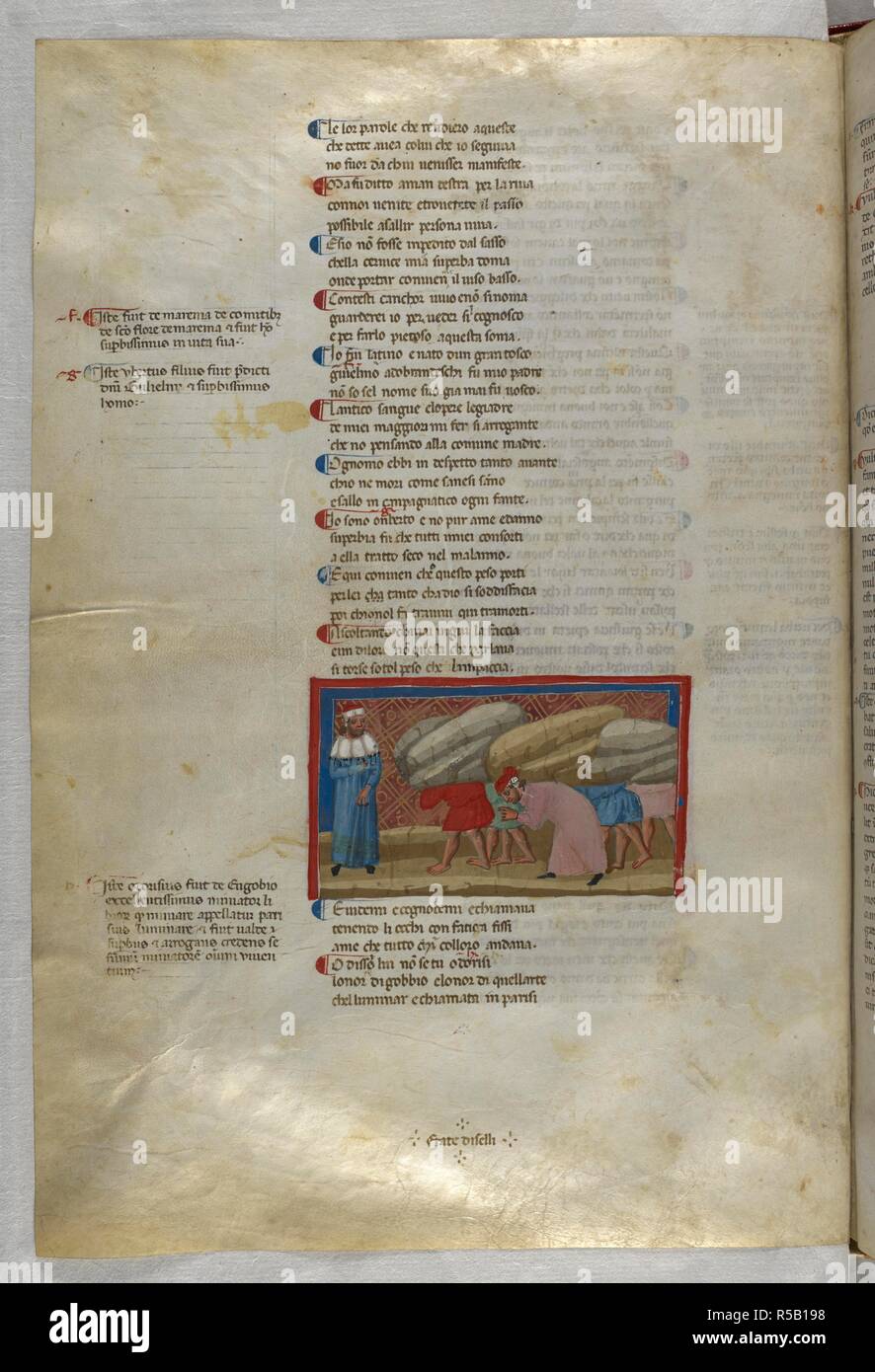 Purgatorio: Dante bending over to speak to one of the proud souls, perhaps Oderisi of Gubbio, the illuminator. Dante Alighieri, Divina Commedia ( The Divine Comedy ), with a commentary in Latin. 1st half of the 14th century. Source: Egerton 943, f.82v. Language: Italian, Latin. Stock Photohttps://www.alamy.com/image-license-details/?v=1https://www.alamy.com/purgatorio-dante-bending-over-to-speak-to-one-of-the-proud-souls-perhaps-oderisi-of-gubbio-the-illuminator-dante-alighieri-divina-commedia-the-divine-comedy-with-a-commentary-in-latin-1st-half-of-the-14th-century-source-egerton-943-f82v-language-italian-latin-image227050580.html
Purgatorio: Dante bending over to speak to one of the proud souls, perhaps Oderisi of Gubbio, the illuminator. Dante Alighieri, Divina Commedia ( The Divine Comedy ), with a commentary in Latin. 1st half of the 14th century. Source: Egerton 943, f.82v. Language: Italian, Latin. Stock Photohttps://www.alamy.com/image-license-details/?v=1https://www.alamy.com/purgatorio-dante-bending-over-to-speak-to-one-of-the-proud-souls-perhaps-oderisi-of-gubbio-the-illuminator-dante-alighieri-divina-commedia-the-divine-comedy-with-a-commentary-in-latin-1st-half-of-the-14th-century-source-egerton-943-f82v-language-italian-latin-image227050580.htmlRMR5B198–Purgatorio: Dante bending over to speak to one of the proud souls, perhaps Oderisi of Gubbio, the illuminator. Dante Alighieri, Divina Commedia ( The Divine Comedy ), with a commentary in Latin. 1st half of the 14th century. Source: Egerton 943, f.82v. Language: Italian, Latin.
 Engraving by Gustave Doré from Dante Alighieri's Divine Comedy 'Purgatory and Paradise'; Dante and Virgil enter the Isle of Moun Stock Photohttps://www.alamy.com/image-license-details/?v=1https://www.alamy.com/stock-photo-engraving-by-gustave-dor-from-dante-alighieris-divine-comedy-purgatory-29744030.html
Engraving by Gustave Doré from Dante Alighieri's Divine Comedy 'Purgatory and Paradise'; Dante and Virgil enter the Isle of Moun Stock Photohttps://www.alamy.com/image-license-details/?v=1https://www.alamy.com/stock-photo-engraving-by-gustave-dor-from-dante-alighieris-divine-comedy-purgatory-29744030.htmlRMBMAXPP–Engraving by Gustave Doré from Dante Alighieri's Divine Comedy 'Purgatory and Paradise'; Dante and Virgil enter the Isle of Moun
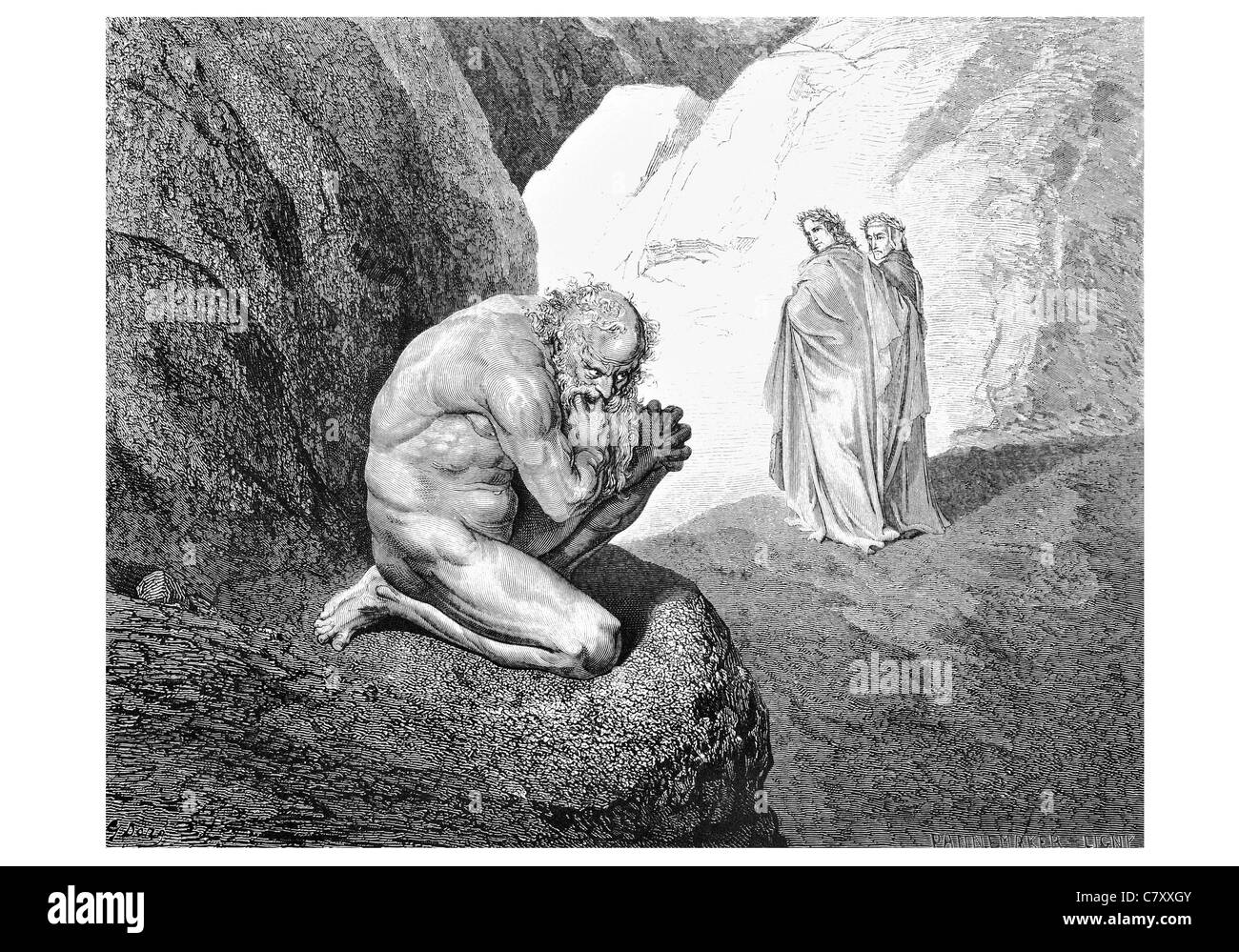 Cursed wolf thy fury inward on thyself prey and consume thee The Vision of Hell Dante Alighieri Gustave Doré divine comedy Stock Photohttps://www.alamy.com/image-license-details/?v=1https://www.alamy.com/stock-photo-cursed-wolf-thy-fury-inward-on-thyself-prey-and-consume-thee-the-vision-39314939.html
Cursed wolf thy fury inward on thyself prey and consume thee The Vision of Hell Dante Alighieri Gustave Doré divine comedy Stock Photohttps://www.alamy.com/image-license-details/?v=1https://www.alamy.com/stock-photo-cursed-wolf-thy-fury-inward-on-thyself-prey-and-consume-thee-the-vision-39314939.htmlRMC7XXGY–Cursed wolf thy fury inward on thyself prey and consume thee The Vision of Hell Dante Alighieri Gustave Doré divine comedy
 Purgatorio ('Purgatory') is the second part of Dante's Divine Comedy, following the Inferno, and preceding the Paradiso. The poem was written in the early 14th century. It is an allegory telling of the climb of Dante up the Mount of Purgatory, guided by the Roman poet Virgil, except for the last four cantos at which point Beatrice takes over as Dante's guide. Purgatory in the poem is depicted as a mountain in the Southern Hemisphere, consisting of a bottom section (Ante-Purgatory), seven levels of suffering and spiritual growth (associated with the seven deadly sins), and finally the Earthly P Stock Photohttps://www.alamy.com/image-license-details/?v=1https://www.alamy.com/purgatorio-purgatory-is-the-second-part-of-dantes-divine-comedy-following-the-inferno-and-preceding-the-paradiso-the-poem-was-written-in-the-early-14th-century-it-is-an-allegory-telling-of-the-climb-of-dante-up-the-mount-of-purgatory-guided-by-the-roman-poet-virgil-except-for-the-last-four-cantos-at-which-point-beatrice-takes-over-as-dantes-guide-purgatory-in-the-poem-is-depicted-as-a-mountain-in-the-southern-hemisphere-consisting-of-a-bottom-section-ante-purgatory-seven-levels-of-suffering-and-spiritual-growth-associated-with-the-seven-deadly-sins-and-finally-the-earthly-p-image358675239.html
Purgatorio ('Purgatory') is the second part of Dante's Divine Comedy, following the Inferno, and preceding the Paradiso. The poem was written in the early 14th century. It is an allegory telling of the climb of Dante up the Mount of Purgatory, guided by the Roman poet Virgil, except for the last four cantos at which point Beatrice takes over as Dante's guide. Purgatory in the poem is depicted as a mountain in the Southern Hemisphere, consisting of a bottom section (Ante-Purgatory), seven levels of suffering and spiritual growth (associated with the seven deadly sins), and finally the Earthly P Stock Photohttps://www.alamy.com/image-license-details/?v=1https://www.alamy.com/purgatorio-purgatory-is-the-second-part-of-dantes-divine-comedy-following-the-inferno-and-preceding-the-paradiso-the-poem-was-written-in-the-early-14th-century-it-is-an-allegory-telling-of-the-climb-of-dante-up-the-mount-of-purgatory-guided-by-the-roman-poet-virgil-except-for-the-last-four-cantos-at-which-point-beatrice-takes-over-as-dantes-guide-purgatory-in-the-poem-is-depicted-as-a-mountain-in-the-southern-hemisphere-consisting-of-a-bottom-section-ante-purgatory-seven-levels-of-suffering-and-spiritual-growth-associated-with-the-seven-deadly-sins-and-finally-the-earthly-p-image358675239.htmlRF2BRF1WY–Purgatorio ('Purgatory') is the second part of Dante's Divine Comedy, following the Inferno, and preceding the Paradiso. The poem was written in the early 14th century. It is an allegory telling of the climb of Dante up the Mount of Purgatory, guided by the Roman poet Virgil, except for the last four cantos at which point Beatrice takes over as Dante's guide. Purgatory in the poem is depicted as a mountain in the Southern Hemisphere, consisting of a bottom section (Ante-Purgatory), seven levels of suffering and spiritual growth (associated with the seven deadly sins), and finally the Earthly P
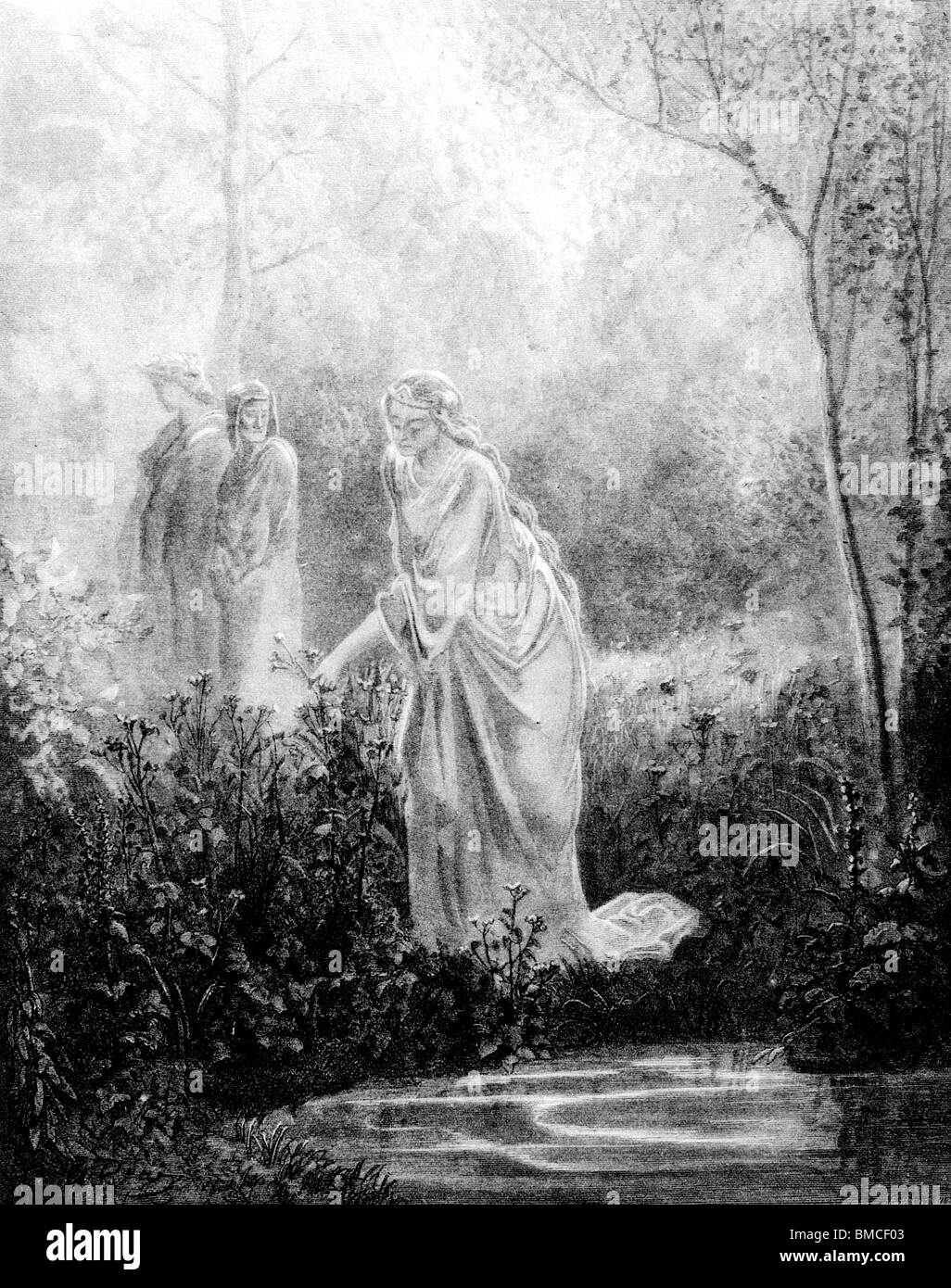 Dante sees Lean on the Paradise Meadow Stock Photohttps://www.alamy.com/image-license-details/?v=1https://www.alamy.com/stock-photo-dante-sees-lean-on-the-paradise-meadow-29778675.html
Dante sees Lean on the Paradise Meadow Stock Photohttps://www.alamy.com/image-license-details/?v=1https://www.alamy.com/stock-photo-dante-sees-lean-on-the-paradise-meadow-29778675.htmlRMBMCF03–Dante sees Lean on the Paradise Meadow
 Purgatorio: Dante and Virgil watch the clouds of smoke of the wrathful souls; they pass through the dark clouds. Dante Alighieri, Divina Commedia ( The Divine Comedy ), with a commentary in Latin. 1st half of the 14th century. Source: Egerton 943, f.91. Language: Italian, Latin. Stock Photohttps://www.alamy.com/image-license-details/?v=1https://www.alamy.com/purgatorio-dante-and-virgil-watch-the-clouds-of-smoke-of-the-wrathful-souls-they-pass-through-the-dark-clouds-dante-alighieri-divina-commedia-the-divine-comedy-with-a-commentary-in-latin-1st-half-of-the-14th-century-source-egerton-943-f91-language-italian-latin-image226956072.html
Purgatorio: Dante and Virgil watch the clouds of smoke of the wrathful souls; they pass through the dark clouds. Dante Alighieri, Divina Commedia ( The Divine Comedy ), with a commentary in Latin. 1st half of the 14th century. Source: Egerton 943, f.91. Language: Italian, Latin. Stock Photohttps://www.alamy.com/image-license-details/?v=1https://www.alamy.com/purgatorio-dante-and-virgil-watch-the-clouds-of-smoke-of-the-wrathful-souls-they-pass-through-the-dark-clouds-dante-alighieri-divina-commedia-the-divine-comedy-with-a-commentary-in-latin-1st-half-of-the-14th-century-source-egerton-943-f91-language-italian-latin-image226956072.htmlRMR56MP0–Purgatorio: Dante and Virgil watch the clouds of smoke of the wrathful souls; they pass through the dark clouds. Dante Alighieri, Divina Commedia ( The Divine Comedy ), with a commentary in Latin. 1st half of the 14th century. Source: Egerton 943, f.91. Language: Italian, Latin.
 Engraving by Gustave Doré from Dante Alighieri's Divine Comedy 'Purgatory and Paradise'; Dante and Virgil meet Cato of Utica Stock Photohttps://www.alamy.com/image-license-details/?v=1https://www.alamy.com/stock-photo-engraving-by-gustave-dor-from-dante-alighieris-divine-comedy-purgatory-29743229.html
Engraving by Gustave Doré from Dante Alighieri's Divine Comedy 'Purgatory and Paradise'; Dante and Virgil meet Cato of Utica Stock Photohttps://www.alamy.com/image-license-details/?v=1https://www.alamy.com/stock-photo-engraving-by-gustave-dor-from-dante-alighieris-divine-comedy-purgatory-29743229.htmlRMBMAWP5–Engraving by Gustave Doré from Dante Alighieri's Divine Comedy 'Purgatory and Paradise'; Dante and Virgil meet Cato of Utica
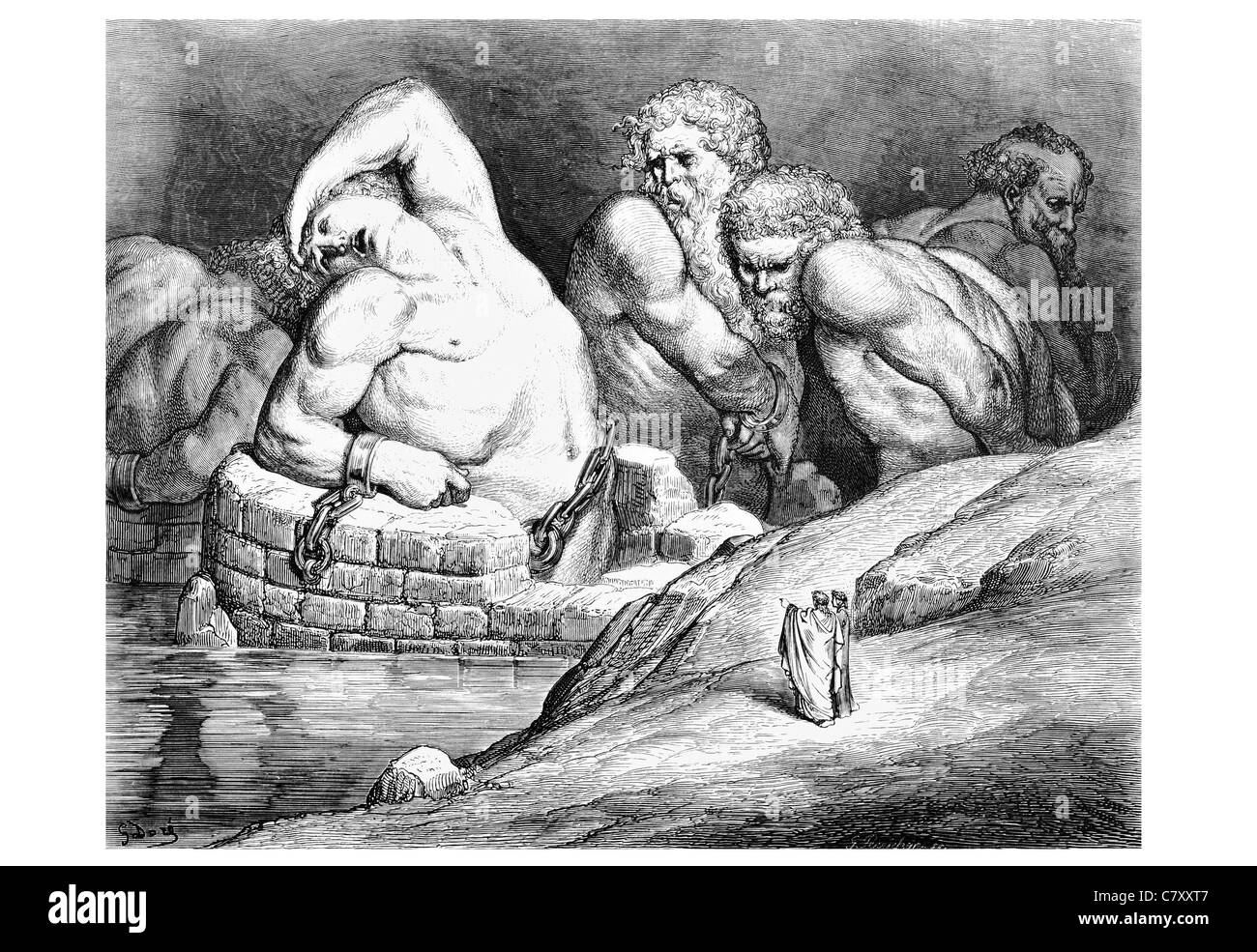 This proud one would of his strength against almighty Jove make trial shackled chained chain torture damaged torn soul Giants Stock Photohttps://www.alamy.com/image-license-details/?v=1https://www.alamy.com/stock-photo-this-proud-one-would-of-his-strength-against-almighty-jove-make-trial-39315143.html
This proud one would of his strength against almighty Jove make trial shackled chained chain torture damaged torn soul Giants Stock Photohttps://www.alamy.com/image-license-details/?v=1https://www.alamy.com/stock-photo-this-proud-one-would-of-his-strength-against-almighty-jove-make-trial-39315143.htmlRMC7XXT7–This proud one would of his strength against almighty Jove make trial shackled chained chain torture damaged torn soul Giants
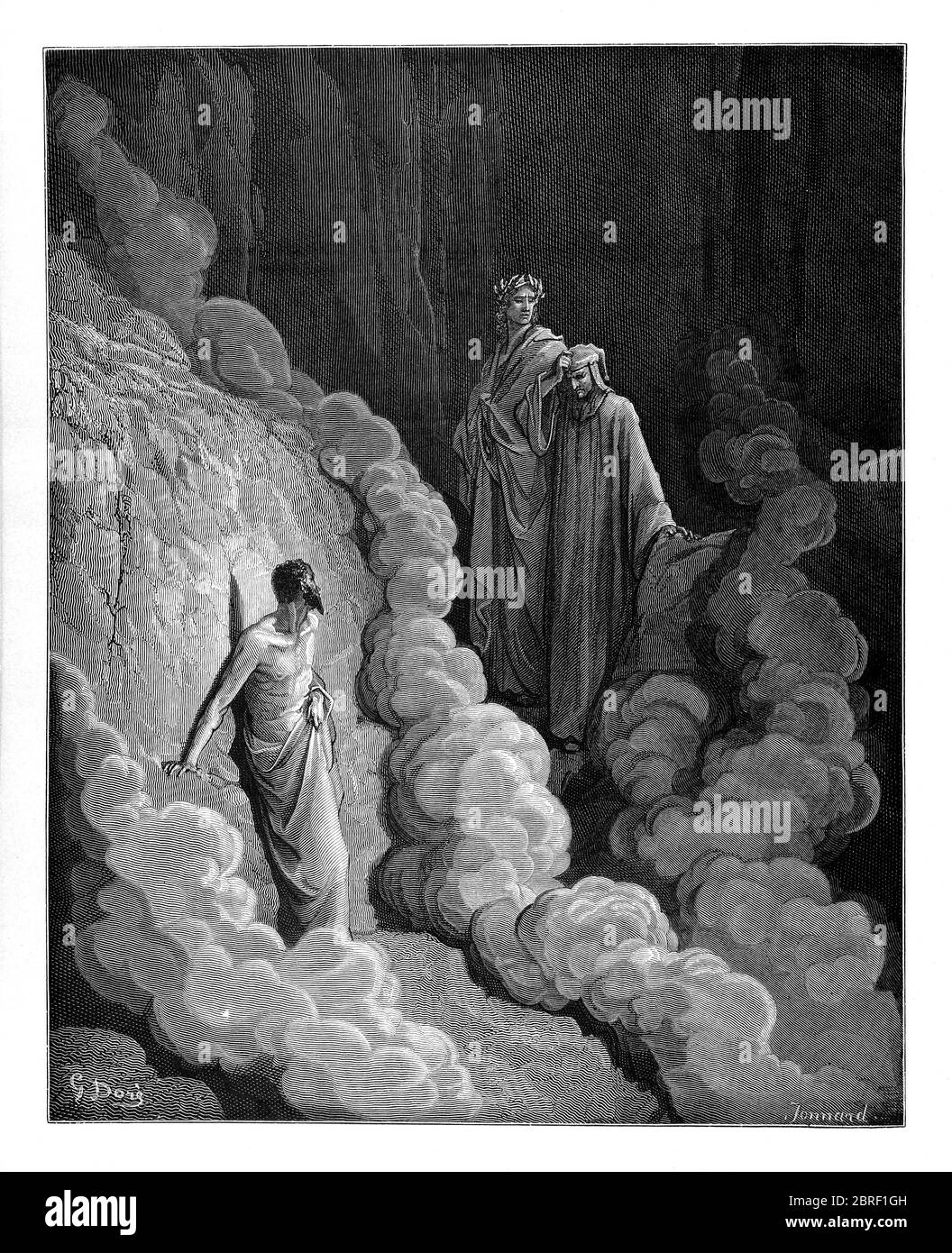 Purgatorio ('Purgatory') is the second part of Dante's Divine Comedy, following the Inferno, and preceding the Paradiso. The poem was written in the early 14th century. It is an allegory telling of the climb of Dante up the Mount of Purgatory, guided by the Roman poet Virgil, except for the last four cantos at which point Beatrice takes over as Dante's guide. Purgatory in the poem is depicted as a mountain in the Southern Hemisphere, consisting of a bottom section (Ante-Purgatory), seven levels of suffering and spiritual growth (associated with the seven deadly sins), and finally the Earthly P Stock Photohttps://www.alamy.com/image-license-details/?v=1https://www.alamy.com/purgatorio-purgatory-is-the-second-part-of-dantes-divine-comedy-following-the-inferno-and-preceding-the-paradiso-the-poem-was-written-in-the-early-14th-century-it-is-an-allegory-telling-of-the-climb-of-dante-up-the-mount-of-purgatory-guided-by-the-roman-poet-virgil-except-for-the-last-four-cantos-at-which-point-beatrice-takes-over-as-dantes-guide-purgatory-in-the-poem-is-depicted-as-a-mountain-in-the-southern-hemisphere-consisting-of-a-bottom-section-ante-purgatory-seven-levels-of-suffering-and-spiritual-growth-associated-with-the-seven-deadly-sins-and-finally-the-earthly-p-image358674977.html
Purgatorio ('Purgatory') is the second part of Dante's Divine Comedy, following the Inferno, and preceding the Paradiso. The poem was written in the early 14th century. It is an allegory telling of the climb of Dante up the Mount of Purgatory, guided by the Roman poet Virgil, except for the last four cantos at which point Beatrice takes over as Dante's guide. Purgatory in the poem is depicted as a mountain in the Southern Hemisphere, consisting of a bottom section (Ante-Purgatory), seven levels of suffering and spiritual growth (associated with the seven deadly sins), and finally the Earthly P Stock Photohttps://www.alamy.com/image-license-details/?v=1https://www.alamy.com/purgatorio-purgatory-is-the-second-part-of-dantes-divine-comedy-following-the-inferno-and-preceding-the-paradiso-the-poem-was-written-in-the-early-14th-century-it-is-an-allegory-telling-of-the-climb-of-dante-up-the-mount-of-purgatory-guided-by-the-roman-poet-virgil-except-for-the-last-four-cantos-at-which-point-beatrice-takes-over-as-dantes-guide-purgatory-in-the-poem-is-depicted-as-a-mountain-in-the-southern-hemisphere-consisting-of-a-bottom-section-ante-purgatory-seven-levels-of-suffering-and-spiritual-growth-associated-with-the-seven-deadly-sins-and-finally-the-earthly-p-image358674977.htmlRF2BRF1GH–Purgatorio ('Purgatory') is the second part of Dante's Divine Comedy, following the Inferno, and preceding the Paradiso. The poem was written in the early 14th century. It is an allegory telling of the climb of Dante up the Mount of Purgatory, guided by the Roman poet Virgil, except for the last four cantos at which point Beatrice takes over as Dante's guide. Purgatory in the poem is depicted as a mountain in the Southern Hemisphere, consisting of a bottom section (Ante-Purgatory), seven levels of suffering and spiritual growth (associated with the seven deadly sins), and finally the Earthly P
 The gluttons emaciated to skeletons Stock Photohttps://www.alamy.com/image-license-details/?v=1https://www.alamy.com/stock-photo-the-gluttons-emaciated-to-skeletons-29778052.html
The gluttons emaciated to skeletons Stock Photohttps://www.alamy.com/image-license-details/?v=1https://www.alamy.com/stock-photo-the-gluttons-emaciated-to-skeletons-29778052.htmlRMBMCE5T–The gluttons emaciated to skeletons
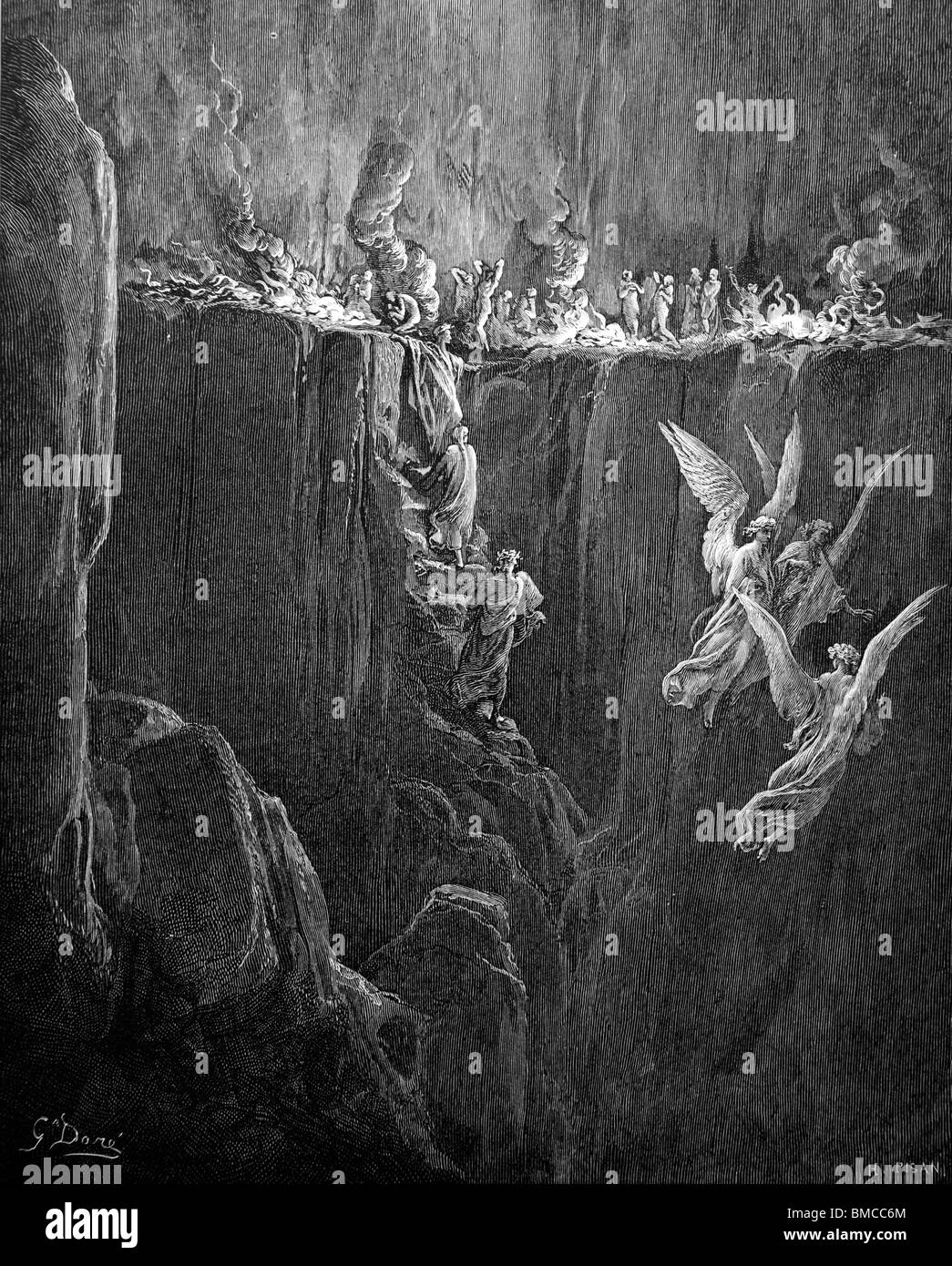 Engraving by Gustave Doré from Dante Alighieri's Divine Comedy; Dante, Virgil and Statius climb Mount Purgatory Stock Photohttps://www.alamy.com/image-license-details/?v=1https://www.alamy.com/stock-photo-engraving-by-gustave-dor-from-dante-alighieris-divine-comedy-dante-29776508.html
Engraving by Gustave Doré from Dante Alighieri's Divine Comedy; Dante, Virgil and Statius climb Mount Purgatory Stock Photohttps://www.alamy.com/image-license-details/?v=1https://www.alamy.com/stock-photo-engraving-by-gustave-dor-from-dante-alighieris-divine-comedy-dante-29776508.htmlRMBMCC6M–Engraving by Gustave Doré from Dante Alighieri's Divine Comedy; Dante, Virgil and Statius climb Mount Purgatory
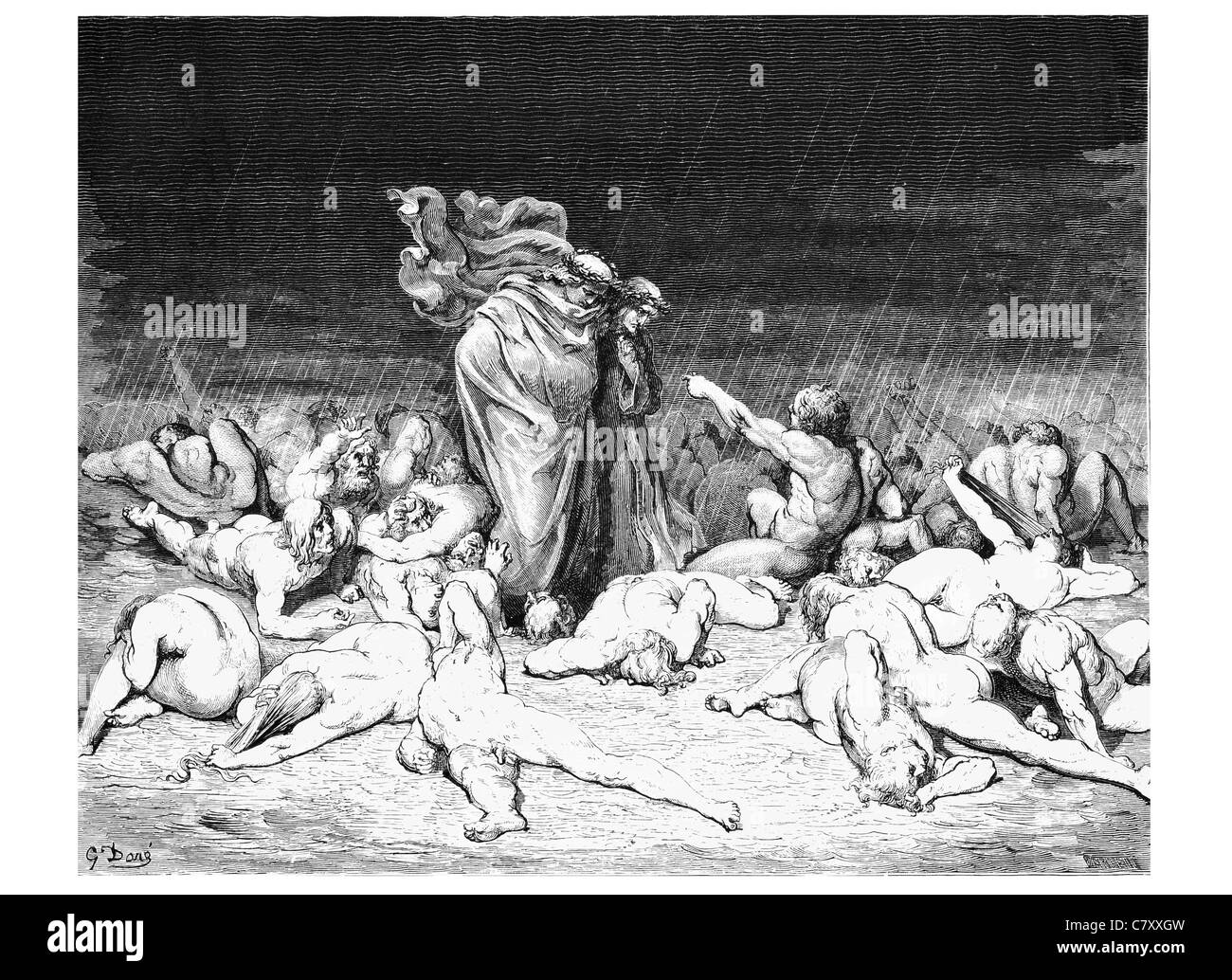 The city heaped with envy to the brim aye that the measure overflows its bounds held me in brighter days Ciacco Stock Photohttps://www.alamy.com/image-license-details/?v=1https://www.alamy.com/stock-photo-the-city-heaped-with-envy-to-the-brim-aye-that-the-measure-overflows-39314937.html
The city heaped with envy to the brim aye that the measure overflows its bounds held me in brighter days Ciacco Stock Photohttps://www.alamy.com/image-license-details/?v=1https://www.alamy.com/stock-photo-the-city-heaped-with-envy-to-the-brim-aye-that-the-measure-overflows-39314937.htmlRMC7XXGW–The city heaped with envy to the brim aye that the measure overflows its bounds held me in brighter days Ciacco
 Purgatorio ('Purgatory') is the second part of Dante's Divine Comedy, following the Inferno, and preceding the Paradiso. The poem was written in the early 14th century. It is an allegory telling of the climb of Dante up the Mount of Purgatory, guided by the Roman poet Virgil, except for the last four cantos at which point Beatrice takes over as Dante's guide. Purgatory in the poem is depicted as a mountain in the Southern Hemisphere, consisting of a bottom section (Ante-Purgatory), seven levels of suffering and spiritual growth (associated with the seven deadly sins), and finally the Earthly P Stock Photohttps://www.alamy.com/image-license-details/?v=1https://www.alamy.com/purgatorio-purgatory-is-the-second-part-of-dantes-divine-comedy-following-the-inferno-and-preceding-the-paradiso-the-poem-was-written-in-the-early-14th-century-it-is-an-allegory-telling-of-the-climb-of-dante-up-the-mount-of-purgatory-guided-by-the-roman-poet-virgil-except-for-the-last-four-cantos-at-which-point-beatrice-takes-over-as-dantes-guide-purgatory-in-the-poem-is-depicted-as-a-mountain-in-the-southern-hemisphere-consisting-of-a-bottom-section-ante-purgatory-seven-levels-of-suffering-and-spiritual-growth-associated-with-the-seven-deadly-sins-and-finally-the-earthly-p-image358674625.html
Purgatorio ('Purgatory') is the second part of Dante's Divine Comedy, following the Inferno, and preceding the Paradiso. The poem was written in the early 14th century. It is an allegory telling of the climb of Dante up the Mount of Purgatory, guided by the Roman poet Virgil, except for the last four cantos at which point Beatrice takes over as Dante's guide. Purgatory in the poem is depicted as a mountain in the Southern Hemisphere, consisting of a bottom section (Ante-Purgatory), seven levels of suffering and spiritual growth (associated with the seven deadly sins), and finally the Earthly P Stock Photohttps://www.alamy.com/image-license-details/?v=1https://www.alamy.com/purgatorio-purgatory-is-the-second-part-of-dantes-divine-comedy-following-the-inferno-and-preceding-the-paradiso-the-poem-was-written-in-the-early-14th-century-it-is-an-allegory-telling-of-the-climb-of-dante-up-the-mount-of-purgatory-guided-by-the-roman-poet-virgil-except-for-the-last-four-cantos-at-which-point-beatrice-takes-over-as-dantes-guide-purgatory-in-the-poem-is-depicted-as-a-mountain-in-the-southern-hemisphere-consisting-of-a-bottom-section-ante-purgatory-seven-levels-of-suffering-and-spiritual-growth-associated-with-the-seven-deadly-sins-and-finally-the-earthly-p-image358674625.htmlRF2BRF141–Purgatorio ('Purgatory') is the second part of Dante's Divine Comedy, following the Inferno, and preceding the Paradiso. The poem was written in the early 14th century. It is an allegory telling of the climb of Dante up the Mount of Purgatory, guided by the Roman poet Virgil, except for the last four cantos at which point Beatrice takes over as Dante's guide. Purgatory in the poem is depicted as a mountain in the Southern Hemisphere, consisting of a bottom section (Ante-Purgatory), seven levels of suffering and spiritual growth (associated with the seven deadly sins), and finally the Earthly P
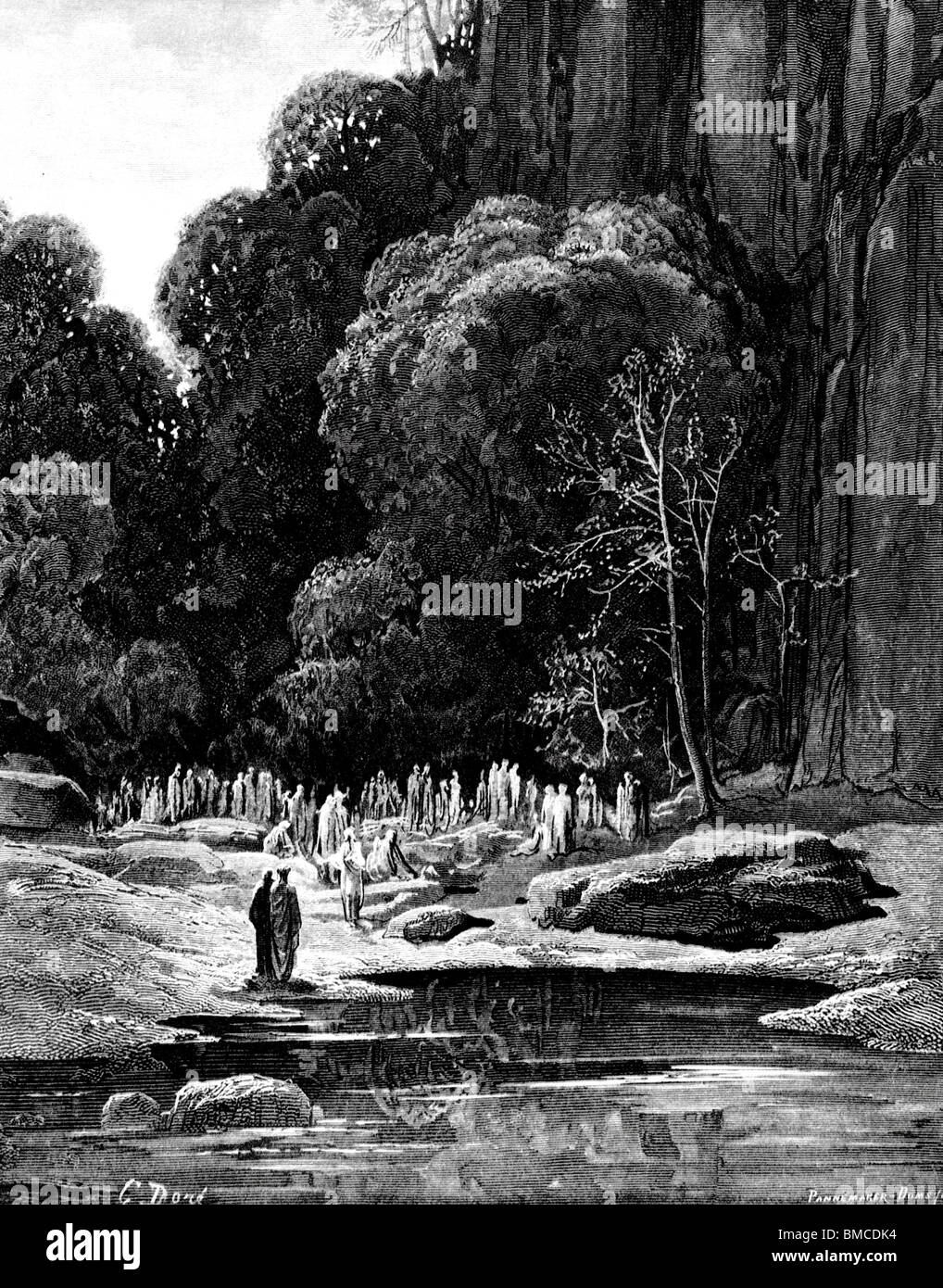 Defaulting singing the Miserere Stock Photohttps://www.alamy.com/image-license-details/?v=1https://www.alamy.com/stock-photo-defaulting-singing-the-miserere-29777640.html
Defaulting singing the Miserere Stock Photohttps://www.alamy.com/image-license-details/?v=1https://www.alamy.com/stock-photo-defaulting-singing-the-miserere-29777640.htmlRMBMCDK4–Defaulting singing the Miserere
 Engraving by Gustave Doré from Dante Alighieri's Divine Comedy 'Purgatory and Paradise'; Dante and Virgil meet the Princes Stock Photohttps://www.alamy.com/image-license-details/?v=1https://www.alamy.com/stock-photo-engraving-by-gustave-dor-from-dante-alighieris-divine-comedy-purgatory-29743512.html
Engraving by Gustave Doré from Dante Alighieri's Divine Comedy 'Purgatory and Paradise'; Dante and Virgil meet the Princes Stock Photohttps://www.alamy.com/image-license-details/?v=1https://www.alamy.com/stock-photo-engraving-by-gustave-dor-from-dante-alighieris-divine-comedy-purgatory-29743512.htmlRMBMAX48–Engraving by Gustave Doré from Dante Alighieri's Divine Comedy 'Purgatory and Paradise'; Dante and Virgil meet the Princes
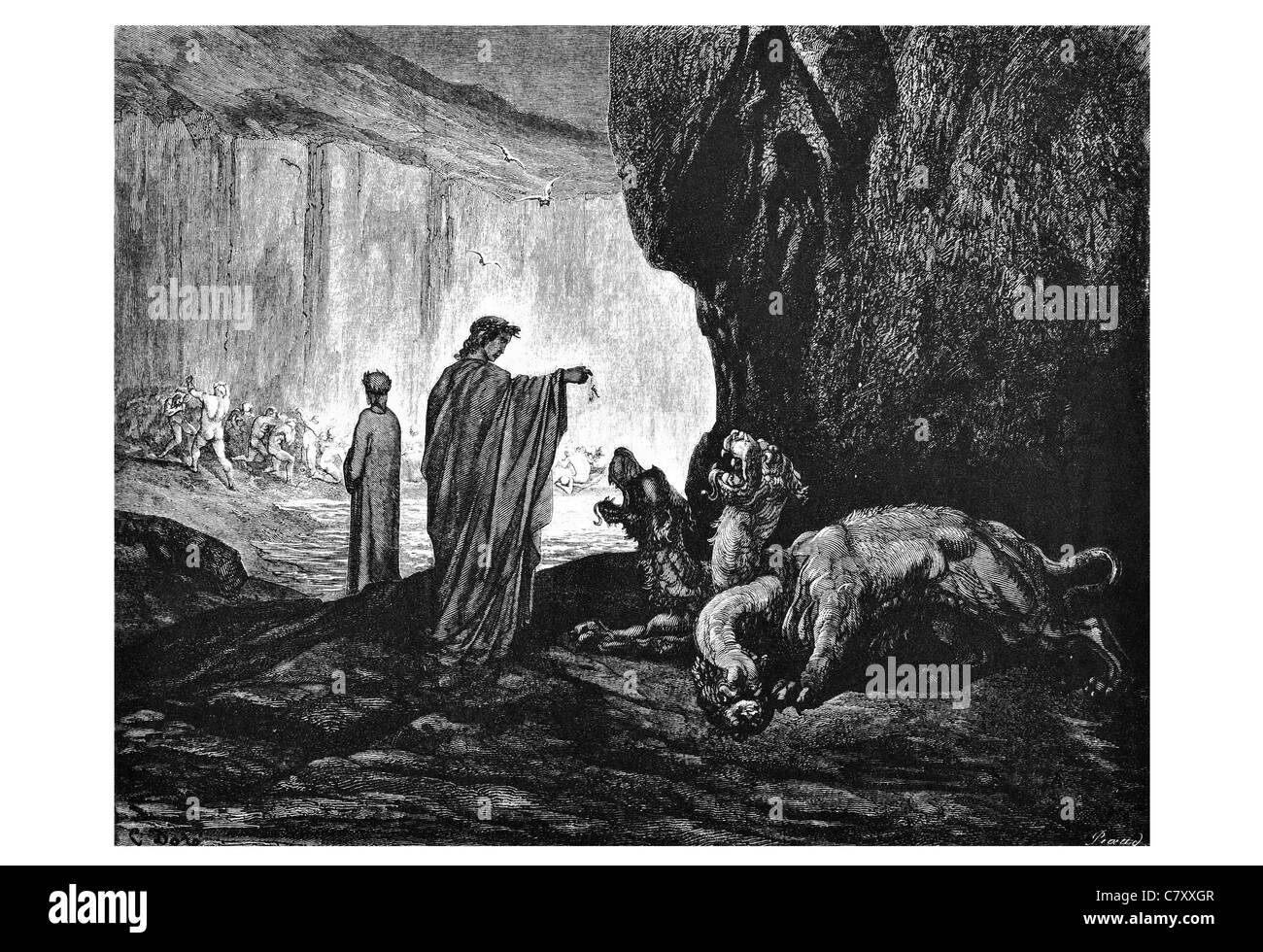 Then my guide his palms expanding on the ground thence fill'd with earth raised them and cast it in his ravenous maw Stock Photohttps://www.alamy.com/image-license-details/?v=1https://www.alamy.com/stock-photo-then-my-guide-his-palms-expanding-on-the-ground-thence-filld-with-39314935.html
Then my guide his palms expanding on the ground thence fill'd with earth raised them and cast it in his ravenous maw Stock Photohttps://www.alamy.com/image-license-details/?v=1https://www.alamy.com/stock-photo-then-my-guide-his-palms-expanding-on-the-ground-thence-filld-with-39314935.htmlRMC7XXGR–Then my guide his palms expanding on the ground thence fill'd with earth raised them and cast it in his ravenous maw
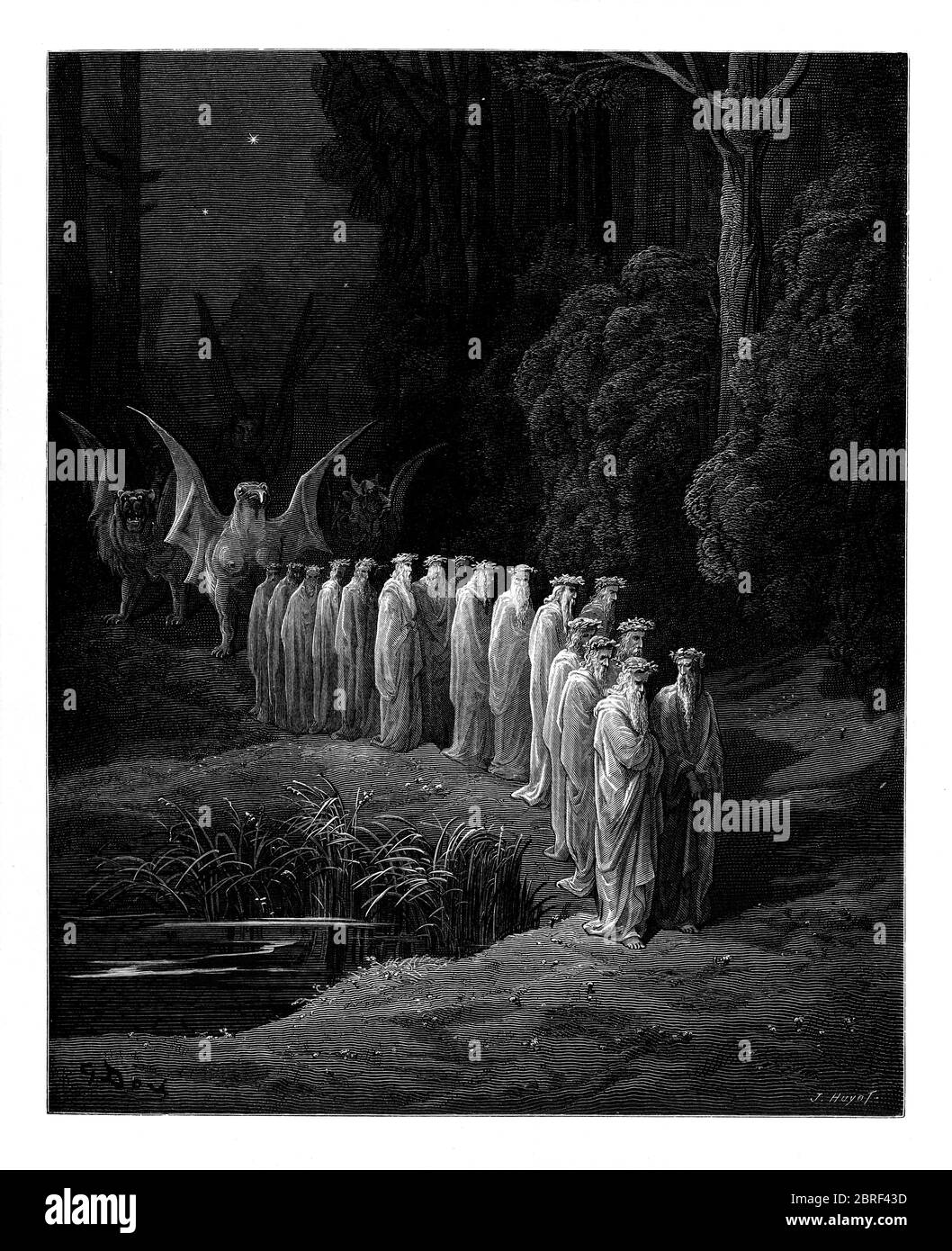 Purgatorio ('Purgatory') is the second part of Dante's Divine Comedy, following the Inferno, and preceding the Paradiso. The poem was written in the early 14th century. It is an allegory telling of the climb of Dante up the Mount of Purgatory, guided by the Roman poet Virgil, except for the last four cantos at which point Beatrice takes over as Dante's guide. Purgatory in the poem is depicted as a mountain in the Southern Hemisphere, consisting of a bottom section (Ante-Purgatory), seven levels of suffering and spiritual growth (associated with the seven deadly sins), and finally the Earthly P Stock Photohttps://www.alamy.com/image-license-details/?v=1https://www.alamy.com/purgatorio-purgatory-is-the-second-part-of-dantes-divine-comedy-following-the-inferno-and-preceding-the-paradiso-the-poem-was-written-in-the-early-14th-century-it-is-an-allegory-telling-of-the-climb-of-dante-up-the-mount-of-purgatory-guided-by-the-roman-poet-virgil-except-for-the-last-four-cantos-at-which-point-beatrice-takes-over-as-dantes-guide-purgatory-in-the-poem-is-depicted-as-a-mountain-in-the-southern-hemisphere-consisting-of-a-bottom-section-ante-purgatory-seven-levels-of-suffering-and-spiritual-growth-associated-with-the-seven-deadly-sins-and-finally-the-earthly-p-image358676961.html
Purgatorio ('Purgatory') is the second part of Dante's Divine Comedy, following the Inferno, and preceding the Paradiso. The poem was written in the early 14th century. It is an allegory telling of the climb of Dante up the Mount of Purgatory, guided by the Roman poet Virgil, except for the last four cantos at which point Beatrice takes over as Dante's guide. Purgatory in the poem is depicted as a mountain in the Southern Hemisphere, consisting of a bottom section (Ante-Purgatory), seven levels of suffering and spiritual growth (associated with the seven deadly sins), and finally the Earthly P Stock Photohttps://www.alamy.com/image-license-details/?v=1https://www.alamy.com/purgatorio-purgatory-is-the-second-part-of-dantes-divine-comedy-following-the-inferno-and-preceding-the-paradiso-the-poem-was-written-in-the-early-14th-century-it-is-an-allegory-telling-of-the-climb-of-dante-up-the-mount-of-purgatory-guided-by-the-roman-poet-virgil-except-for-the-last-four-cantos-at-which-point-beatrice-takes-over-as-dantes-guide-purgatory-in-the-poem-is-depicted-as-a-mountain-in-the-southern-hemisphere-consisting-of-a-bottom-section-ante-purgatory-seven-levels-of-suffering-and-spiritual-growth-associated-with-the-seven-deadly-sins-and-finally-the-earthly-p-image358676961.htmlRF2BRF43D–Purgatorio ('Purgatory') is the second part of Dante's Divine Comedy, following the Inferno, and preceding the Paradiso. The poem was written in the early 14th century. It is an allegory telling of the climb of Dante up the Mount of Purgatory, guided by the Roman poet Virgil, except for the last four cantos at which point Beatrice takes over as Dante's guide. Purgatory in the poem is depicted as a mountain in the Southern Hemisphere, consisting of a bottom section (Ante-Purgatory), seven levels of suffering and spiritual growth (associated with the seven deadly sins), and finally the Earthly P
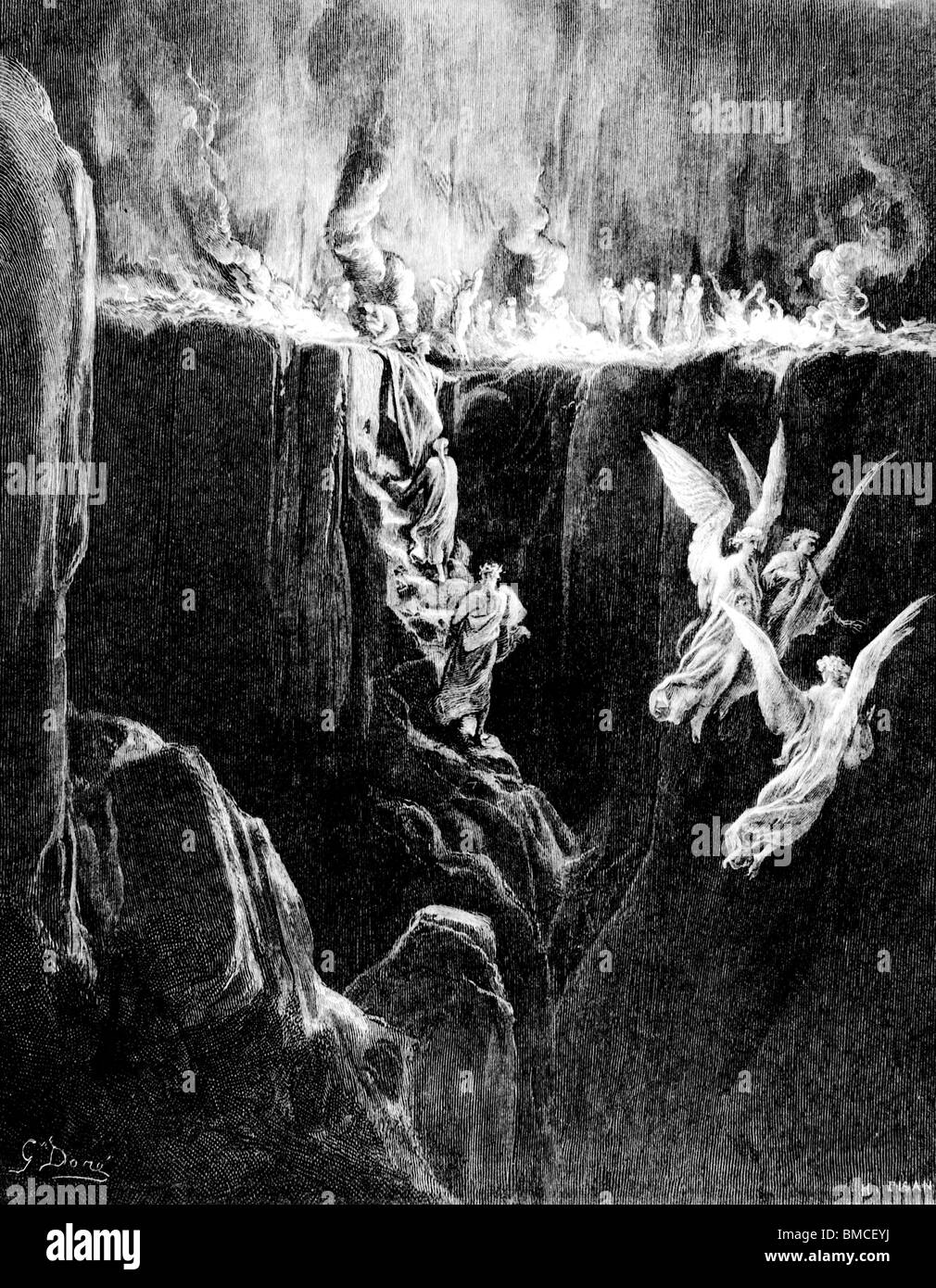 Eradicate the sins of lust Stock Photohttps://www.alamy.com/image-license-details/?v=1https://www.alamy.com/stock-photo-eradicate-the-sins-of-lust-29778662.html
Eradicate the sins of lust Stock Photohttps://www.alamy.com/image-license-details/?v=1https://www.alamy.com/stock-photo-eradicate-the-sins-of-lust-29778662.htmlRMBMCEYJ–Eradicate the sins of lust
 Engraving by Gustave Doré from Dante Alighieri's Divine Comedy 'Purgatory and Paradise'; Dante and Virgil on Mount Purgatory Stock Photohttps://www.alamy.com/image-license-details/?v=1https://www.alamy.com/stock-photo-engraving-by-gustave-dor-from-dante-alighieris-divine-comedy-purgatory-29743547.html
Engraving by Gustave Doré from Dante Alighieri's Divine Comedy 'Purgatory and Paradise'; Dante and Virgil on Mount Purgatory Stock Photohttps://www.alamy.com/image-license-details/?v=1https://www.alamy.com/stock-photo-engraving-by-gustave-dor-from-dante-alighieris-divine-comedy-purgatory-29743547.htmlRMBMAX5F–Engraving by Gustave Doré from Dante Alighieri's Divine Comedy 'Purgatory and Paradise'; Dante and Virgil on Mount Purgatory
 Ser Brunetto and are ye here rain raining fire flames ash ashes storm Stock Photohttps://www.alamy.com/image-license-details/?v=1https://www.alamy.com/stock-photo-ser-brunetto-and-are-ye-here-rain-raining-fire-flames-ash-ashes-storm-39315005.html
Ser Brunetto and are ye here rain raining fire flames ash ashes storm Stock Photohttps://www.alamy.com/image-license-details/?v=1https://www.alamy.com/stock-photo-ser-brunetto-and-are-ye-here-rain-raining-fire-flames-ash-ashes-storm-39315005.htmlRMC7XXK9–Ser Brunetto and are ye here rain raining fire flames ash ashes storm
 Purgatorio ('Purgatory') is the second part of Dante's Divine Comedy, following the Inferno, and preceding the Paradiso. The poem was written in the early 14th century. It is an allegory telling of the climb of Dante up the Mount of Purgatory, guided by the Roman poet Virgil, except for the last four cantos at which point Beatrice takes over as Dante's guide. Purgatory in the poem is depicted as a mountain in the Southern Hemisphere, consisting of a bottom section (Ante-Purgatory), seven levels of suffering and spiritual growth (associated with the seven deadly sins), and finally the Earthly P Stock Photohttps://www.alamy.com/image-license-details/?v=1https://www.alamy.com/purgatorio-purgatory-is-the-second-part-of-dantes-divine-comedy-following-the-inferno-and-preceding-the-paradiso-the-poem-was-written-in-the-early-14th-century-it-is-an-allegory-telling-of-the-climb-of-dante-up-the-mount-of-purgatory-guided-by-the-roman-poet-virgil-except-for-the-last-four-cantos-at-which-point-beatrice-takes-over-as-dantes-guide-purgatory-in-the-poem-is-depicted-as-a-mountain-in-the-southern-hemisphere-consisting-of-a-bottom-section-ante-purgatory-seven-levels-of-suffering-and-spiritual-growth-associated-with-the-seven-deadly-sins-and-finally-the-earthly-p-image358672069.html
Purgatorio ('Purgatory') is the second part of Dante's Divine Comedy, following the Inferno, and preceding the Paradiso. The poem was written in the early 14th century. It is an allegory telling of the climb of Dante up the Mount of Purgatory, guided by the Roman poet Virgil, except for the last four cantos at which point Beatrice takes over as Dante's guide. Purgatory in the poem is depicted as a mountain in the Southern Hemisphere, consisting of a bottom section (Ante-Purgatory), seven levels of suffering and spiritual growth (associated with the seven deadly sins), and finally the Earthly P Stock Photohttps://www.alamy.com/image-license-details/?v=1https://www.alamy.com/purgatorio-purgatory-is-the-second-part-of-dantes-divine-comedy-following-the-inferno-and-preceding-the-paradiso-the-poem-was-written-in-the-early-14th-century-it-is-an-allegory-telling-of-the-climb-of-dante-up-the-mount-of-purgatory-guided-by-the-roman-poet-virgil-except-for-the-last-four-cantos-at-which-point-beatrice-takes-over-as-dantes-guide-purgatory-in-the-poem-is-depicted-as-a-mountain-in-the-southern-hemisphere-consisting-of-a-bottom-section-ante-purgatory-seven-levels-of-suffering-and-spiritual-growth-associated-with-the-seven-deadly-sins-and-finally-the-earthly-p-image358672069.htmlRF2BREWTN–Purgatorio ('Purgatory') is the second part of Dante's Divine Comedy, following the Inferno, and preceding the Paradiso. The poem was written in the early 14th century. It is an allegory telling of the climb of Dante up the Mount of Purgatory, guided by the Roman poet Virgil, except for the last four cantos at which point Beatrice takes over as Dante's guide. Purgatory in the poem is depicted as a mountain in the Southern Hemisphere, consisting of a bottom section (Ante-Purgatory), seven levels of suffering and spiritual growth (associated with the seven deadly sins), and finally the Earthly P
 Vision of the fate of the church detail Stock Photohttps://www.alamy.com/image-license-details/?v=1https://www.alamy.com/stock-photo-vision-of-the-fate-of-the-church-detail-29778264.html
Vision of the fate of the church detail Stock Photohttps://www.alamy.com/image-license-details/?v=1https://www.alamy.com/stock-photo-vision-of-the-fate-of-the-church-detail-29778264.htmlRMBMCEDC–Vision of the fate of the church detail
 Engraving by Gustave Doré from Dante Alighieri's Divine Comedy; Dante, Virgil and Statius climb Mount Purgatory Stock Photohttps://www.alamy.com/image-license-details/?v=1https://www.alamy.com/stock-photo-engraving-by-gustave-dor-from-dante-alighieris-divine-comedy-dante-29776721.html
Engraving by Gustave Doré from Dante Alighieri's Divine Comedy; Dante, Virgil and Statius climb Mount Purgatory Stock Photohttps://www.alamy.com/image-license-details/?v=1https://www.alamy.com/stock-photo-engraving-by-gustave-dor-from-dante-alighieris-divine-comedy-dante-29776721.htmlRMBMCCE9–Engraving by Gustave Doré from Dante Alighieri's Divine Comedy; Dante, Virgil and Statius climb Mount Purgatory
 At point of the disparted ridge lay stretched the infamy of Crete detested brood of the feigned heifer Minotaur Horns Horn Stock Photohttps://www.alamy.com/image-license-details/?v=1https://www.alamy.com/stock-photo-at-point-of-the-disparted-ridge-lay-stretched-the-infamy-of-crete-39314994.html
At point of the disparted ridge lay stretched the infamy of Crete detested brood of the feigned heifer Minotaur Horns Horn Stock Photohttps://www.alamy.com/image-license-details/?v=1https://www.alamy.com/stock-photo-at-point-of-the-disparted-ridge-lay-stretched-the-infamy-of-crete-39314994.htmlRMC7XXJX–At point of the disparted ridge lay stretched the infamy of Crete detested brood of the feigned heifer Minotaur Horns Horn
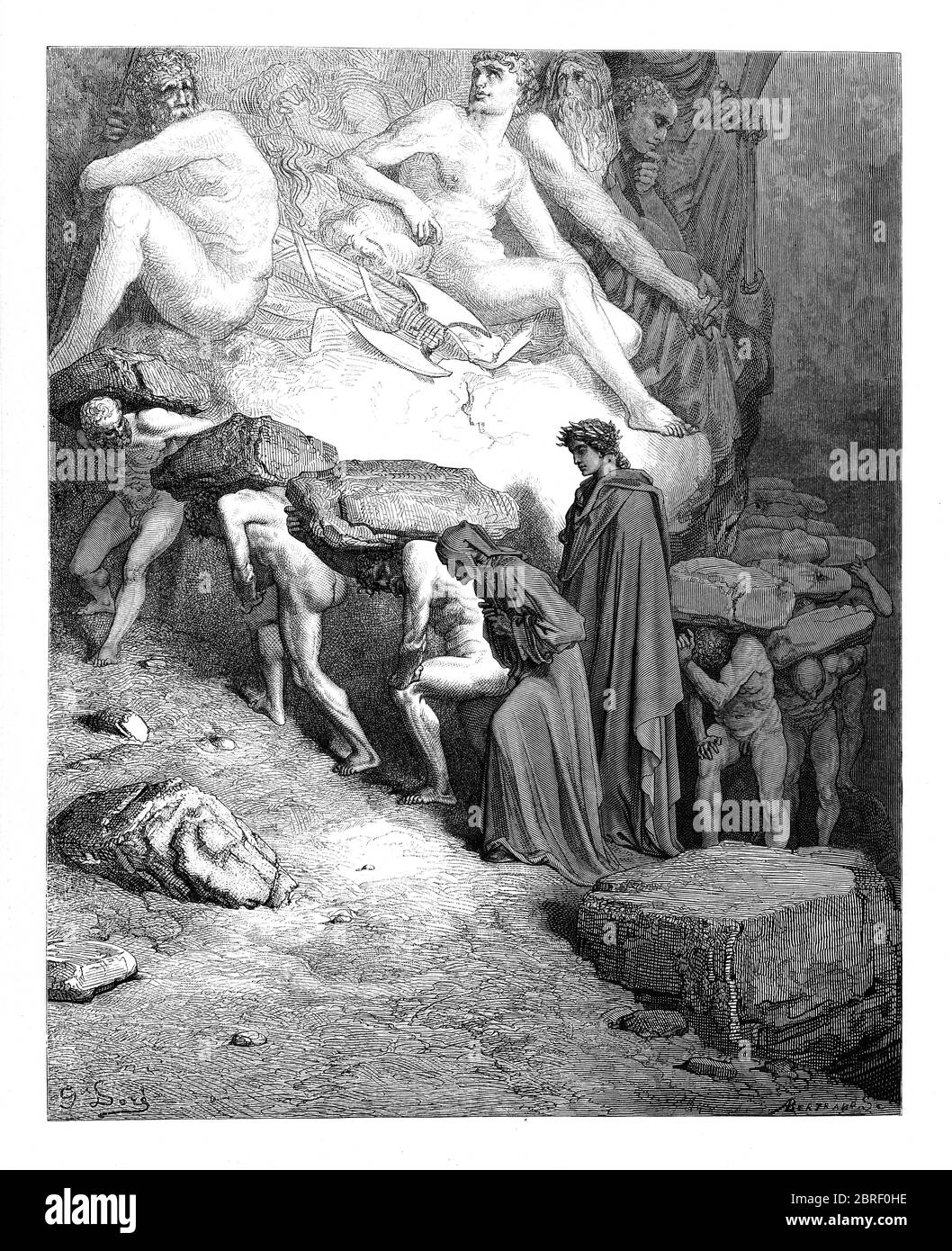 Purgatorio ('Purgatory') is the second part of Dante's Divine Comedy, following the Inferno, and preceding the Paradiso. The poem was written in the early 14th century. It is an allegory telling of the climb of Dante up the Mount of Purgatory, guided by the Roman poet Virgil, except for the last four cantos at which point Beatrice takes over as Dante's guide. Purgatory in the poem is depicted as a mountain in the Southern Hemisphere, consisting of a bottom section (Ante-Purgatory), seven levels of suffering and spiritual growth (associated with the seven deadly sins), and finally the Earthly P Stock Photohttps://www.alamy.com/image-license-details/?v=1https://www.alamy.com/purgatorio-purgatory-is-the-second-part-of-dantes-divine-comedy-following-the-inferno-and-preceding-the-paradiso-the-poem-was-written-in-the-early-14th-century-it-is-an-allegory-telling-of-the-climb-of-dante-up-the-mount-of-purgatory-guided-by-the-roman-poet-virgil-except-for-the-last-four-cantos-at-which-point-beatrice-takes-over-as-dantes-guide-purgatory-in-the-poem-is-depicted-as-a-mountain-in-the-southern-hemisphere-consisting-of-a-bottom-section-ante-purgatory-seven-levels-of-suffering-and-spiritual-growth-associated-with-the-seven-deadly-sins-and-finally-the-earthly-p-image358674218.html
Purgatorio ('Purgatory') is the second part of Dante's Divine Comedy, following the Inferno, and preceding the Paradiso. The poem was written in the early 14th century. It is an allegory telling of the climb of Dante up the Mount of Purgatory, guided by the Roman poet Virgil, except for the last four cantos at which point Beatrice takes over as Dante's guide. Purgatory in the poem is depicted as a mountain in the Southern Hemisphere, consisting of a bottom section (Ante-Purgatory), seven levels of suffering and spiritual growth (associated with the seven deadly sins), and finally the Earthly P Stock Photohttps://www.alamy.com/image-license-details/?v=1https://www.alamy.com/purgatorio-purgatory-is-the-second-part-of-dantes-divine-comedy-following-the-inferno-and-preceding-the-paradiso-the-poem-was-written-in-the-early-14th-century-it-is-an-allegory-telling-of-the-climb-of-dante-up-the-mount-of-purgatory-guided-by-the-roman-poet-virgil-except-for-the-last-four-cantos-at-which-point-beatrice-takes-over-as-dantes-guide-purgatory-in-the-poem-is-depicted-as-a-mountain-in-the-southern-hemisphere-consisting-of-a-bottom-section-ante-purgatory-seven-levels-of-suffering-and-spiritual-growth-associated-with-the-seven-deadly-sins-and-finally-the-earthly-p-image358674218.htmlRF2BRF0HE–Purgatorio ('Purgatory') is the second part of Dante's Divine Comedy, following the Inferno, and preceding the Paradiso. The poem was written in the early 14th century. It is an allegory telling of the climb of Dante up the Mount of Purgatory, guided by the Roman poet Virgil, except for the last four cantos at which point Beatrice takes over as Dante's guide. Purgatory in the poem is depicted as a mountain in the Southern Hemisphere, consisting of a bottom section (Ante-Purgatory), seven levels of suffering and spiritual growth (associated with the seven deadly sins), and finally the Earthly P
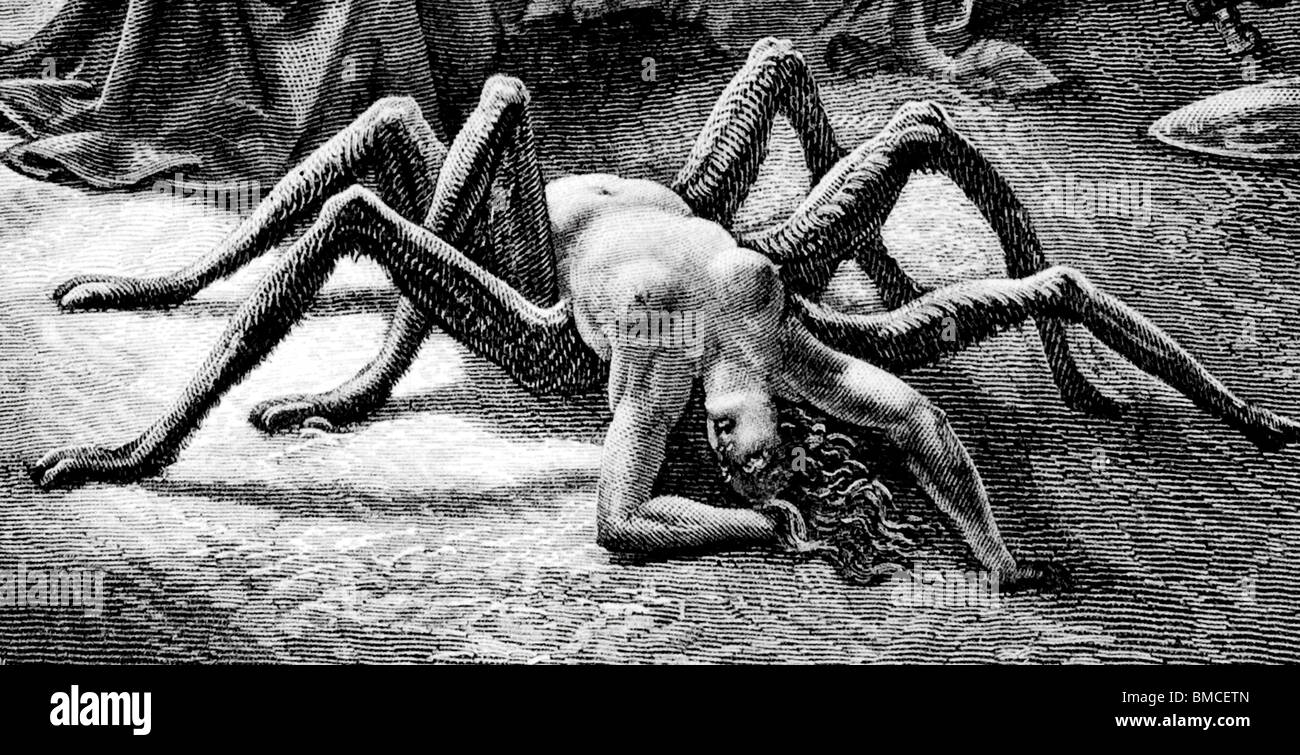 Arachne as spider detail Stock Photohttps://www.alamy.com/image-license-details/?v=1https://www.alamy.com/stock-photo-arachne-as-spider-detail-29778581.html
Arachne as spider detail Stock Photohttps://www.alamy.com/image-license-details/?v=1https://www.alamy.com/stock-photo-arachne-as-spider-detail-29778581.htmlRMBMCETN–Arachne as spider detail
 Engraving by Gustave Doré from Dante Alighieri's Divine Comedy 'Purgatory and Paradise'; Dante and Virgil at the foot of Mount P Stock Photohttps://www.alamy.com/image-license-details/?v=1https://www.alamy.com/stock-photo-engraving-by-gustave-dor-from-dante-alighieris-divine-comedy-purgatory-29743324.html
Engraving by Gustave Doré from Dante Alighieri's Divine Comedy 'Purgatory and Paradise'; Dante and Virgil at the foot of Mount P Stock Photohttps://www.alamy.com/image-license-details/?v=1https://www.alamy.com/stock-photo-engraving-by-gustave-dor-from-dante-alighieris-divine-comedy-purgatory-29743324.htmlRMBMAWWG–Engraving by Gustave Doré from Dante Alighieri's Divine Comedy 'Purgatory and Paradise'; Dante and Virgil at the foot of Mount P
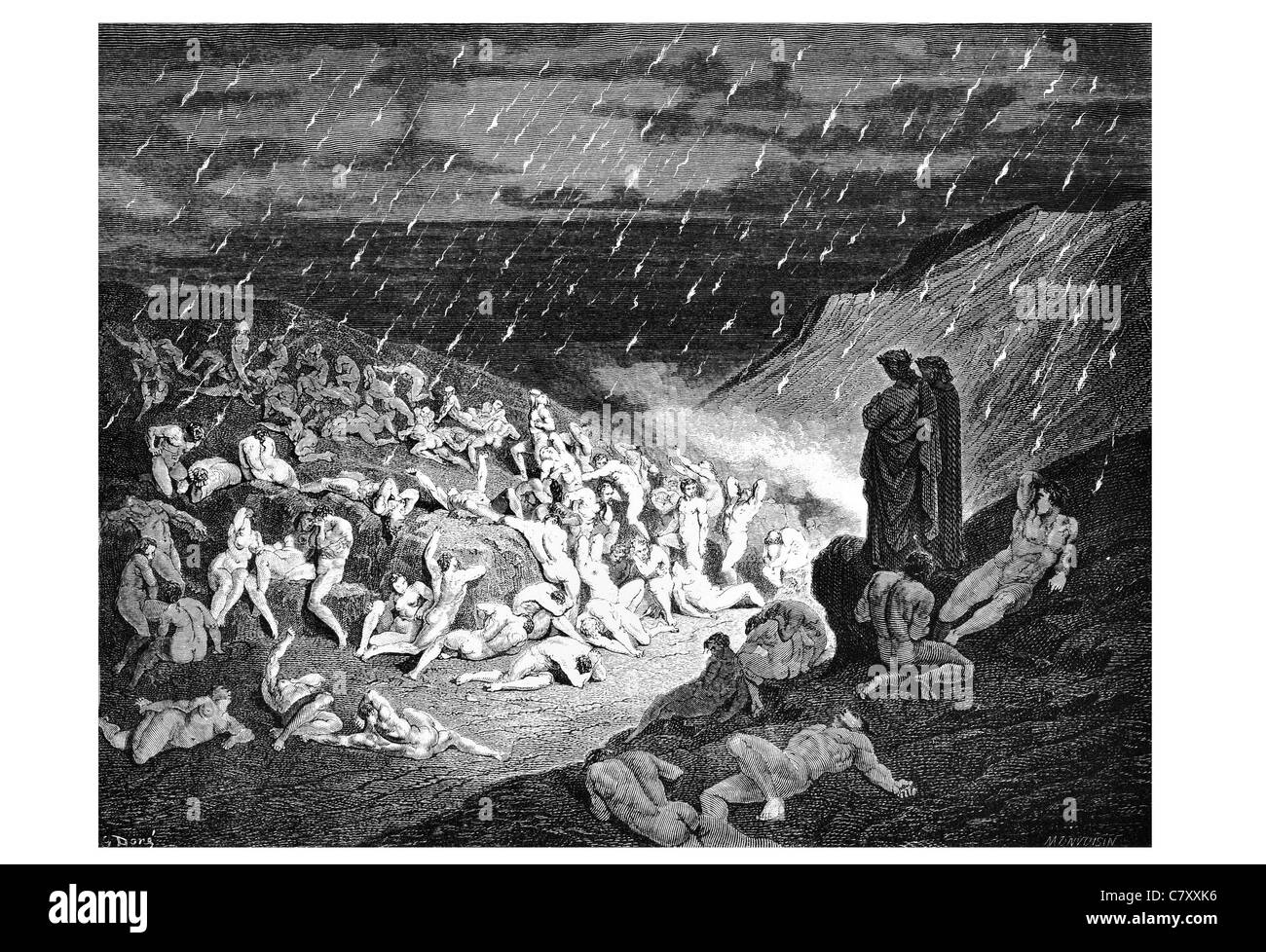 unceasing was the play of wretched hands now this now that way glancing to shake off the heat still falling fresh rain raining Stock Photohttps://www.alamy.com/image-license-details/?v=1https://www.alamy.com/stock-photo-unceasing-was-the-play-of-wretched-hands-now-this-now-that-way-glancing-39315002.html
unceasing was the play of wretched hands now this now that way glancing to shake off the heat still falling fresh rain raining Stock Photohttps://www.alamy.com/image-license-details/?v=1https://www.alamy.com/stock-photo-unceasing-was-the-play-of-wretched-hands-now-this-now-that-way-glancing-39315002.htmlRMC7XXK6–unceasing was the play of wretched hands now this now that way glancing to shake off the heat still falling fresh rain raining
 Purgatorio ('Purgatory') is the second part of Dante's Divine Comedy, following the Inferno, and preceding the Paradiso. The poem was written in the early 14th century. It is an allegory telling of the climb of Dante up the Mount of Purgatory, guided by the Roman poet Virgil, except for the last four cantos at which point Beatrice takes over as Dante's guide. Purgatory in the poem is depicted as a mountain in the Southern Hemisphere, consisting of a bottom section (Ante-Purgatory), seven levels of suffering and spiritual growth (associated with the seven deadly sins), and finally the Earthly P Stock Photohttps://www.alamy.com/image-license-details/?v=1https://www.alamy.com/purgatorio-purgatory-is-the-second-part-of-dantes-divine-comedy-following-the-inferno-and-preceding-the-paradiso-the-poem-was-written-in-the-early-14th-century-it-is-an-allegory-telling-of-the-climb-of-dante-up-the-mount-of-purgatory-guided-by-the-roman-poet-virgil-except-for-the-last-four-cantos-at-which-point-beatrice-takes-over-as-dantes-guide-purgatory-in-the-poem-is-depicted-as-a-mountain-in-the-southern-hemisphere-consisting-of-a-bottom-section-ante-purgatory-seven-levels-of-suffering-and-spiritual-growth-associated-with-the-seven-deadly-sins-and-finally-the-earthly-p-image358674305.html
Purgatorio ('Purgatory') is the second part of Dante's Divine Comedy, following the Inferno, and preceding the Paradiso. The poem was written in the early 14th century. It is an allegory telling of the climb of Dante up the Mount of Purgatory, guided by the Roman poet Virgil, except for the last four cantos at which point Beatrice takes over as Dante's guide. Purgatory in the poem is depicted as a mountain in the Southern Hemisphere, consisting of a bottom section (Ante-Purgatory), seven levels of suffering and spiritual growth (associated with the seven deadly sins), and finally the Earthly P Stock Photohttps://www.alamy.com/image-license-details/?v=1https://www.alamy.com/purgatorio-purgatory-is-the-second-part-of-dantes-divine-comedy-following-the-inferno-and-preceding-the-paradiso-the-poem-was-written-in-the-early-14th-century-it-is-an-allegory-telling-of-the-climb-of-dante-up-the-mount-of-purgatory-guided-by-the-roman-poet-virgil-except-for-the-last-four-cantos-at-which-point-beatrice-takes-over-as-dantes-guide-purgatory-in-the-poem-is-depicted-as-a-mountain-in-the-southern-hemisphere-consisting-of-a-bottom-section-ante-purgatory-seven-levels-of-suffering-and-spiritual-growth-associated-with-the-seven-deadly-sins-and-finally-the-earthly-p-image358674305.htmlRF2BRF0MH–Purgatorio ('Purgatory') is the second part of Dante's Divine Comedy, following the Inferno, and preceding the Paradiso. The poem was written in the early 14th century. It is an allegory telling of the climb of Dante up the Mount of Purgatory, guided by the Roman poet Virgil, except for the last four cantos at which point Beatrice takes over as Dante's guide. Purgatory in the poem is depicted as a mountain in the Southern Hemisphere, consisting of a bottom section (Ante-Purgatory), seven levels of suffering and spiritual growth (associated with the seven deadly sins), and finally the Earthly P
 Sordello of Mantua Stock Photohttps://www.alamy.com/image-license-details/?v=1https://www.alamy.com/stock-photo-sordello-of-mantua-29777732.html
Sordello of Mantua Stock Photohttps://www.alamy.com/image-license-details/?v=1https://www.alamy.com/stock-photo-sordello-of-mantua-29777732.htmlRMBMCDPC–Sordello of Mantua
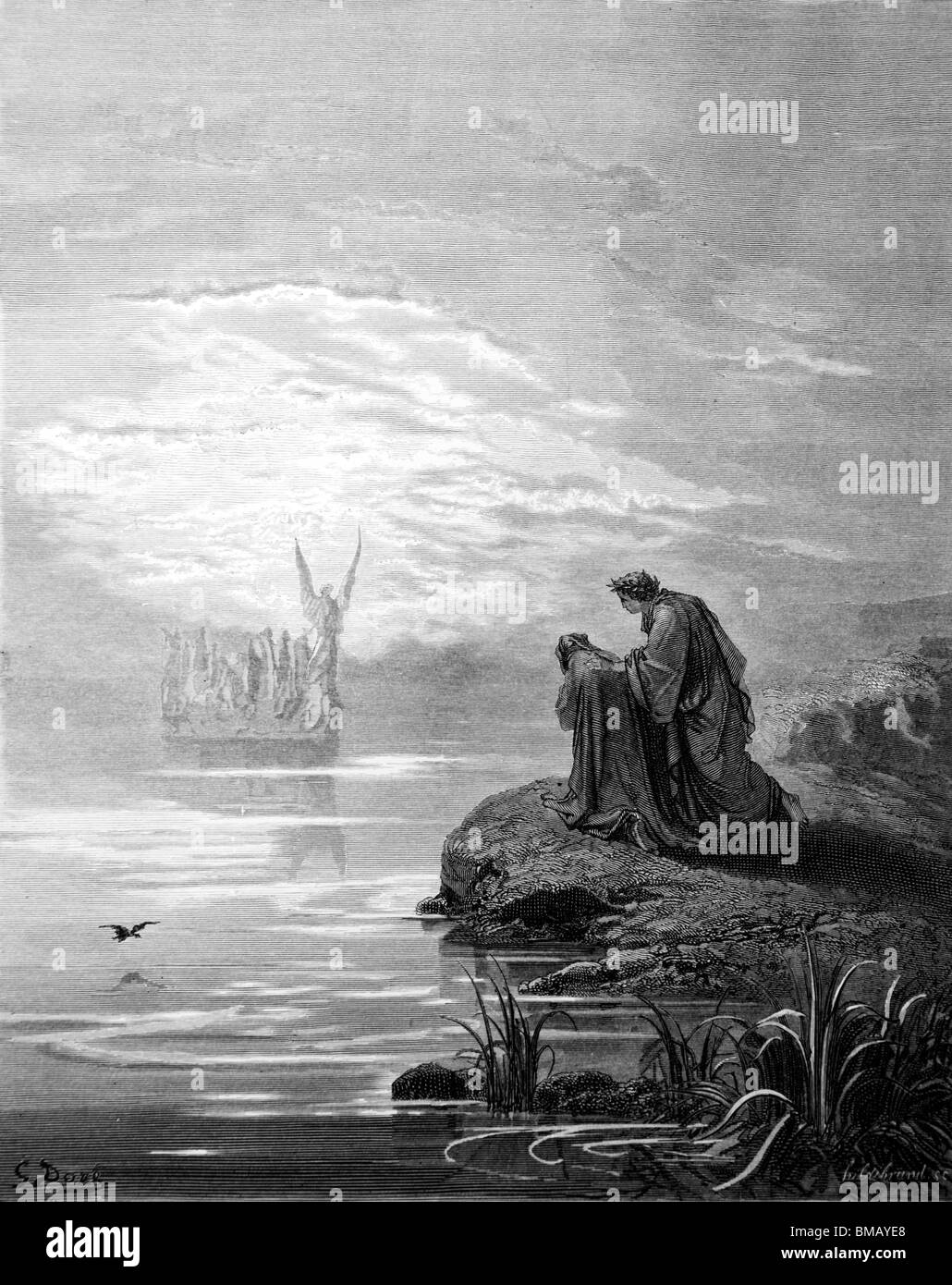 Engraving by Gustave Doré from Dante Alighieri's Divine Comedy 'Purgatory and Paradise'; Dante and Virgil on the shore of lake Purgatory Stock Photohttps://www.alamy.com/image-license-details/?v=1https://www.alamy.com/stock-photo-engraving-by-gustave-dor-from-dante-alighieris-divine-comedy-purgatory-29744576.html
Engraving by Gustave Doré from Dante Alighieri's Divine Comedy 'Purgatory and Paradise'; Dante and Virgil on the shore of lake Purgatory Stock Photohttps://www.alamy.com/image-license-details/?v=1https://www.alamy.com/stock-photo-engraving-by-gustave-dor-from-dante-alighieris-divine-comedy-purgatory-29744576.htmlRMBMAYE8–Engraving by Gustave Doré from Dante Alighieri's Divine Comedy 'Purgatory and Paradise'; Dante and Virgil on the shore of lake Purgatory
 Then seizing on his hinder scalp I cried Name thee or not a hair shall tarry here death sorrow pain Stock Photohttps://www.alamy.com/image-license-details/?v=1https://www.alamy.com/stock-photo-then-seizing-on-his-hinder-scalp-i-cried-name-thee-or-not-a-hair-shall-39315154.html
Then seizing on his hinder scalp I cried Name thee or not a hair shall tarry here death sorrow pain Stock Photohttps://www.alamy.com/image-license-details/?v=1https://www.alamy.com/stock-photo-then-seizing-on-his-hinder-scalp-i-cried-name-thee-or-not-a-hair-shall-39315154.htmlRMC7XXTJ–Then seizing on his hinder scalp I cried Name thee or not a hair shall tarry here death sorrow pain
 Purgatorio ('Purgatory') is the second part of Dante's Divine Comedy, following the Inferno, and preceding the Paradiso. The poem was written in the early 14th century. It is an allegory telling of the climb of Dante up the Mount of Purgatory, guided by the Roman poet Virgil, except for the last four cantos at which point Beatrice takes over as Dante's guide. Purgatory in the poem is depicted as a mountain in the Southern Hemisphere, consisting of a bottom section (Ante-Purgatory), seven levels of suffering and spiritual growth (associated with the seven deadly sins), and finally the Earthly P Stock Photohttps://www.alamy.com/image-license-details/?v=1https://www.alamy.com/purgatorio-purgatory-is-the-second-part-of-dantes-divine-comedy-following-the-inferno-and-preceding-the-paradiso-the-poem-was-written-in-the-early-14th-century-it-is-an-allegory-telling-of-the-climb-of-dante-up-the-mount-of-purgatory-guided-by-the-roman-poet-virgil-except-for-the-last-four-cantos-at-which-point-beatrice-takes-over-as-dantes-guide-purgatory-in-the-poem-is-depicted-as-a-mountain-in-the-southern-hemisphere-consisting-of-a-bottom-section-ante-purgatory-seven-levels-of-suffering-and-spiritual-growth-associated-with-the-seven-deadly-sins-and-finally-the-earthly-p-image358675279.html
Purgatorio ('Purgatory') is the second part of Dante's Divine Comedy, following the Inferno, and preceding the Paradiso. The poem was written in the early 14th century. It is an allegory telling of the climb of Dante up the Mount of Purgatory, guided by the Roman poet Virgil, except for the last four cantos at which point Beatrice takes over as Dante's guide. Purgatory in the poem is depicted as a mountain in the Southern Hemisphere, consisting of a bottom section (Ante-Purgatory), seven levels of suffering and spiritual growth (associated with the seven deadly sins), and finally the Earthly P Stock Photohttps://www.alamy.com/image-license-details/?v=1https://www.alamy.com/purgatorio-purgatory-is-the-second-part-of-dantes-divine-comedy-following-the-inferno-and-preceding-the-paradiso-the-poem-was-written-in-the-early-14th-century-it-is-an-allegory-telling-of-the-climb-of-dante-up-the-mount-of-purgatory-guided-by-the-roman-poet-virgil-except-for-the-last-four-cantos-at-which-point-beatrice-takes-over-as-dantes-guide-purgatory-in-the-poem-is-depicted-as-a-mountain-in-the-southern-hemisphere-consisting-of-a-bottom-section-ante-purgatory-seven-levels-of-suffering-and-spiritual-growth-associated-with-the-seven-deadly-sins-and-finally-the-earthly-p-image358675279.htmlRF2BRF1YB–Purgatorio ('Purgatory') is the second part of Dante's Divine Comedy, following the Inferno, and preceding the Paradiso. The poem was written in the early 14th century. It is an allegory telling of the climb of Dante up the Mount of Purgatory, guided by the Roman poet Virgil, except for the last four cantos at which point Beatrice takes over as Dante's guide. Purgatory in the poem is depicted as a mountain in the Southern Hemisphere, consisting of a bottom section (Ante-Purgatory), seven levels of suffering and spiritual growth (associated with the seven deadly sins), and finally the Earthly P
 Arachne as spider Stock Photohttps://www.alamy.com/image-license-details/?v=1https://www.alamy.com/stock-photo-arachne-as-spider-29777728.html
Arachne as spider Stock Photohttps://www.alamy.com/image-license-details/?v=1https://www.alamy.com/stock-photo-arachne-as-spider-29777728.htmlRMBMCDP8–Arachne as spider
 Engraving by Gustave Doré from Dante Alighieri's Divine Comedy 'Purgatory and Paradise'; Dante and Virgil on the shore or Lake P Stock Photohttps://www.alamy.com/image-license-details/?v=1https://www.alamy.com/stock-photo-engraving-by-gustave-dor-from-dante-alighieris-divine-comedy-purgatory-29744223.html
Engraving by Gustave Doré from Dante Alighieri's Divine Comedy 'Purgatory and Paradise'; Dante and Virgil on the shore or Lake P Stock Photohttps://www.alamy.com/image-license-details/?v=1https://www.alamy.com/stock-photo-engraving-by-gustave-dor-from-dante-alighieris-divine-comedy-purgatory-29744223.htmlRMBMAY1K–Engraving by Gustave Doré from Dante Alighieri's Divine Comedy 'Purgatory and Paradise'; Dante and Virgil on the shore or Lake P
 ah how they made them bound at the first stripe monster monsters whipping whip torture Stock Photohttps://www.alamy.com/image-license-details/?v=1https://www.alamy.com/stock-photo-ah-how-they-made-them-bound-at-the-first-stripe-monster-monsters-whipping-39315020.html
ah how they made them bound at the first stripe monster monsters whipping whip torture Stock Photohttps://www.alamy.com/image-license-details/?v=1https://www.alamy.com/stock-photo-ah-how-they-made-them-bound-at-the-first-stripe-monster-monsters-whipping-39315020.htmlRMC7XXKT–ah how they made them bound at the first stripe monster monsters whipping whip torture
 Purgatorio ('Purgatory') is the second part of Dante's Divine Comedy, following the Inferno, and preceding the Paradiso. The poem was written in the early 14th century. It is an allegory telling of the climb of Dante up the Mount of Purgatory, guided by the Roman poet Virgil, except for the last four cantos at which point Beatrice takes over as Dante's guide. Purgatory in the poem is depicted as a mountain in the Southern Hemisphere, consisting of a bottom section (Ante-Purgatory), seven levels of suffering and spiritual growth (associated with the seven deadly sins), and finally the Earthly P Stock Photohttps://www.alamy.com/image-license-details/?v=1https://www.alamy.com/purgatorio-purgatory-is-the-second-part-of-dantes-divine-comedy-following-the-inferno-and-preceding-the-paradiso-the-poem-was-written-in-the-early-14th-century-it-is-an-allegory-telling-of-the-climb-of-dante-up-the-mount-of-purgatory-guided-by-the-roman-poet-virgil-except-for-the-last-four-cantos-at-which-point-beatrice-takes-over-as-dantes-guide-purgatory-in-the-poem-is-depicted-as-a-mountain-in-the-southern-hemisphere-consisting-of-a-bottom-section-ante-purgatory-seven-levels-of-suffering-and-spiritual-growth-associated-with-the-seven-deadly-sins-and-finally-the-earthly-p-image358675998.html
Purgatorio ('Purgatory') is the second part of Dante's Divine Comedy, following the Inferno, and preceding the Paradiso. The poem was written in the early 14th century. It is an allegory telling of the climb of Dante up the Mount of Purgatory, guided by the Roman poet Virgil, except for the last four cantos at which point Beatrice takes over as Dante's guide. Purgatory in the poem is depicted as a mountain in the Southern Hemisphere, consisting of a bottom section (Ante-Purgatory), seven levels of suffering and spiritual growth (associated with the seven deadly sins), and finally the Earthly P Stock Photohttps://www.alamy.com/image-license-details/?v=1https://www.alamy.com/purgatorio-purgatory-is-the-second-part-of-dantes-divine-comedy-following-the-inferno-and-preceding-the-paradiso-the-poem-was-written-in-the-early-14th-century-it-is-an-allegory-telling-of-the-climb-of-dante-up-the-mount-of-purgatory-guided-by-the-roman-poet-virgil-except-for-the-last-four-cantos-at-which-point-beatrice-takes-over-as-dantes-guide-purgatory-in-the-poem-is-depicted-as-a-mountain-in-the-southern-hemisphere-consisting-of-a-bottom-section-ante-purgatory-seven-levels-of-suffering-and-spiritual-growth-associated-with-the-seven-deadly-sins-and-finally-the-earthly-p-image358675998.htmlRF2BRF2W2–Purgatorio ('Purgatory') is the second part of Dante's Divine Comedy, following the Inferno, and preceding the Paradiso. The poem was written in the early 14th century. It is an allegory telling of the climb of Dante up the Mount of Purgatory, guided by the Roman poet Virgil, except for the last four cantos at which point Beatrice takes over as Dante's guide. Purgatory in the poem is depicted as a mountain in the Southern Hemisphere, consisting of a bottom section (Ante-Purgatory), seven levels of suffering and spiritual growth (associated with the seven deadly sins), and finally the Earthly P
 The purification of the proud Stock Photohttps://www.alamy.com/image-license-details/?v=1https://www.alamy.com/stock-photo-the-purification-of-the-proud-29778555.html
The purification of the proud Stock Photohttps://www.alamy.com/image-license-details/?v=1https://www.alamy.com/stock-photo-the-purification-of-the-proud-29778555.htmlRMBMCERR–The purification of the proud
 Engraving by Gustave Doré from Dante Alighieri's Divine Comedy; Dante, Virgil and Statius with the Souls of the Lustful Stock Photohttps://www.alamy.com/image-license-details/?v=1https://www.alamy.com/stock-photo-engraving-by-gustave-dor-from-dante-alighieris-divine-comedy-dante-29751278.html
Engraving by Gustave Doré from Dante Alighieri's Divine Comedy; Dante, Virgil and Statius with the Souls of the Lustful Stock Photohttps://www.alamy.com/image-license-details/?v=1https://www.alamy.com/stock-photo-engraving-by-gustave-dor-from-dante-alighieris-divine-comedy-dante-29751278.htmlRMBMB81J–Engraving by Gustave Doré from Dante Alighieri's Divine Comedy; Dante, Virgil and Statius with the Souls of the Lustful
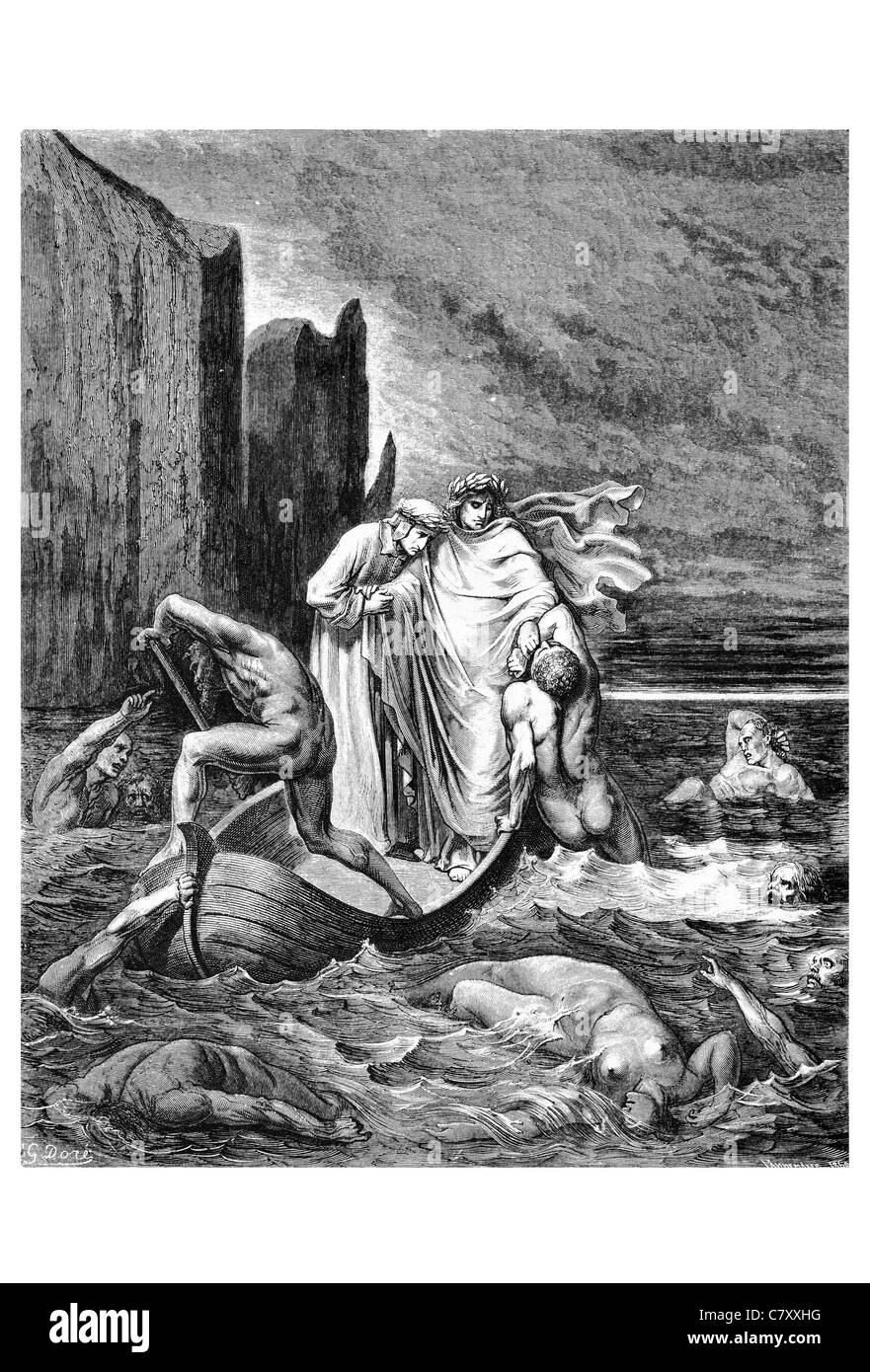 My teacher sage aware thrusting him back dogs Stock Photohttps://www.alamy.com/image-license-details/?v=1https://www.alamy.com/stock-photo-my-teacher-sage-aware-thrusting-him-back-dogs-39314956.html
My teacher sage aware thrusting him back dogs Stock Photohttps://www.alamy.com/image-license-details/?v=1https://www.alamy.com/stock-photo-my-teacher-sage-aware-thrusting-him-back-dogs-39314956.htmlRMC7XXHG–My teacher sage aware thrusting him back dogs
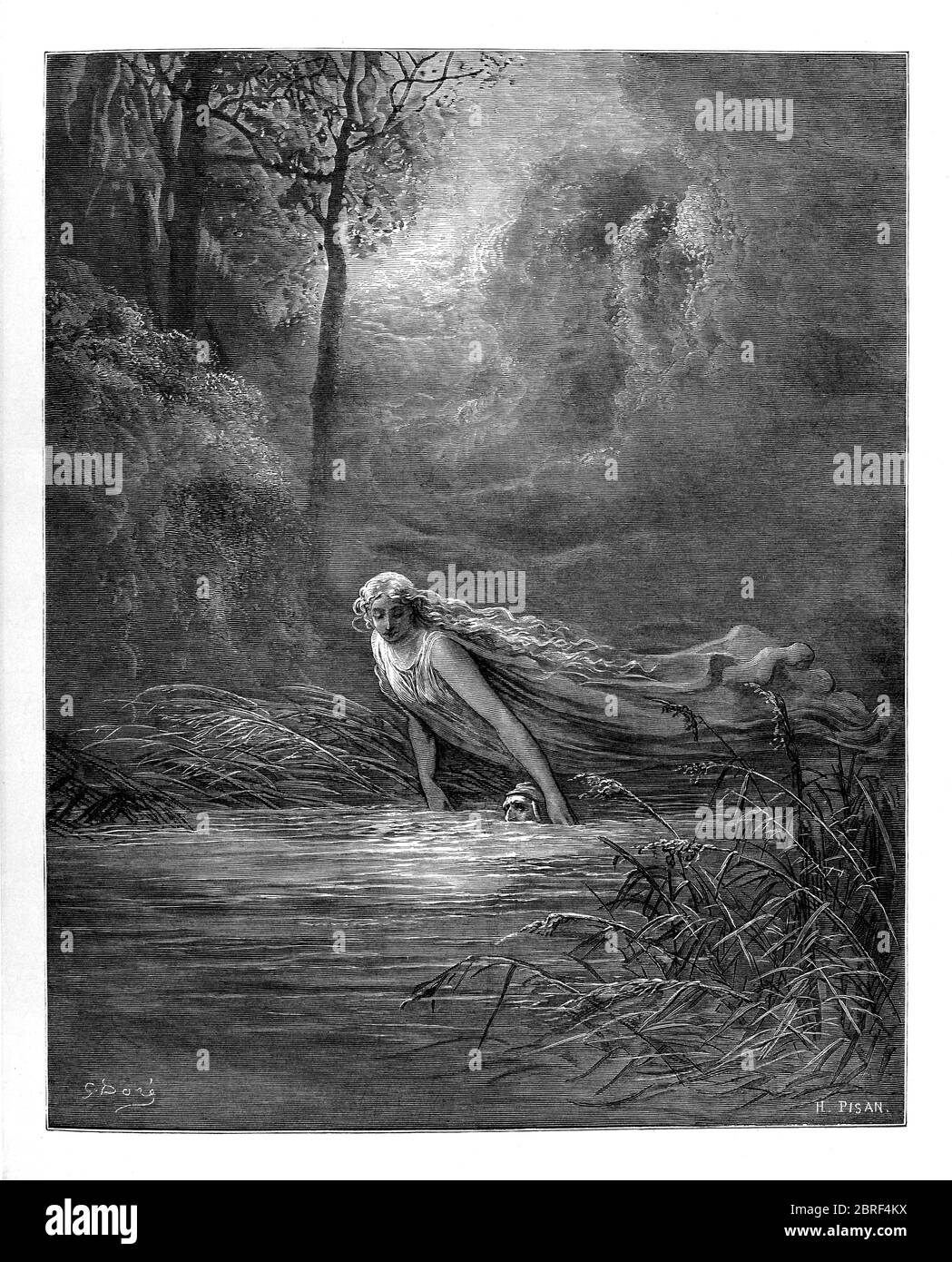 Purgatorio ('Purgatory') is the second part of Dante's Divine Comedy, following the Inferno, and preceding the Paradiso. The poem was written in the early 14th century. It is an allegory telling of the climb of Dante up the Mount of Purgatory, guided by the Roman poet Virgil, except for the last four cantos at which point Beatrice takes over as Dante's guide. Purgatory in the poem is depicted as a mountain in the Southern Hemisphere, consisting of a bottom section (Ante-Purgatory), seven levels of suffering and spiritual growth (associated with the seven deadly sins), and finally the Earthly P Stock Photohttps://www.alamy.com/image-license-details/?v=1https://www.alamy.com/purgatorio-purgatory-is-the-second-part-of-dantes-divine-comedy-following-the-inferno-and-preceding-the-paradiso-the-poem-was-written-in-the-early-14th-century-it-is-an-allegory-telling-of-the-climb-of-dante-up-the-mount-of-purgatory-guided-by-the-roman-poet-virgil-except-for-the-last-four-cantos-at-which-point-beatrice-takes-over-as-dantes-guide-purgatory-in-the-poem-is-depicted-as-a-mountain-in-the-southern-hemisphere-consisting-of-a-bottom-section-ante-purgatory-seven-levels-of-suffering-and-spiritual-growth-associated-with-the-seven-deadly-sins-and-finally-the-earthly-p-image358677422.html
Purgatorio ('Purgatory') is the second part of Dante's Divine Comedy, following the Inferno, and preceding the Paradiso. The poem was written in the early 14th century. It is an allegory telling of the climb of Dante up the Mount of Purgatory, guided by the Roman poet Virgil, except for the last four cantos at which point Beatrice takes over as Dante's guide. Purgatory in the poem is depicted as a mountain in the Southern Hemisphere, consisting of a bottom section (Ante-Purgatory), seven levels of suffering and spiritual growth (associated with the seven deadly sins), and finally the Earthly P Stock Photohttps://www.alamy.com/image-license-details/?v=1https://www.alamy.com/purgatorio-purgatory-is-the-second-part-of-dantes-divine-comedy-following-the-inferno-and-preceding-the-paradiso-the-poem-was-written-in-the-early-14th-century-it-is-an-allegory-telling-of-the-climb-of-dante-up-the-mount-of-purgatory-guided-by-the-roman-poet-virgil-except-for-the-last-four-cantos-at-which-point-beatrice-takes-over-as-dantes-guide-purgatory-in-the-poem-is-depicted-as-a-mountain-in-the-southern-hemisphere-consisting-of-a-bottom-section-ante-purgatory-seven-levels-of-suffering-and-spiritual-growth-associated-with-the-seven-deadly-sins-and-finally-the-earthly-p-image358677422.htmlRF2BRF4KX–Purgatorio ('Purgatory') is the second part of Dante's Divine Comedy, following the Inferno, and preceding the Paradiso. The poem was written in the early 14th century. It is an allegory telling of the climb of Dante up the Mount of Purgatory, guided by the Roman poet Virgil, except for the last four cantos at which point Beatrice takes over as Dante's guide. Purgatory in the poem is depicted as a mountain in the Southern Hemisphere, consisting of a bottom section (Ante-Purgatory), seven levels of suffering and spiritual growth (associated with the seven deadly sins), and finally the Earthly P
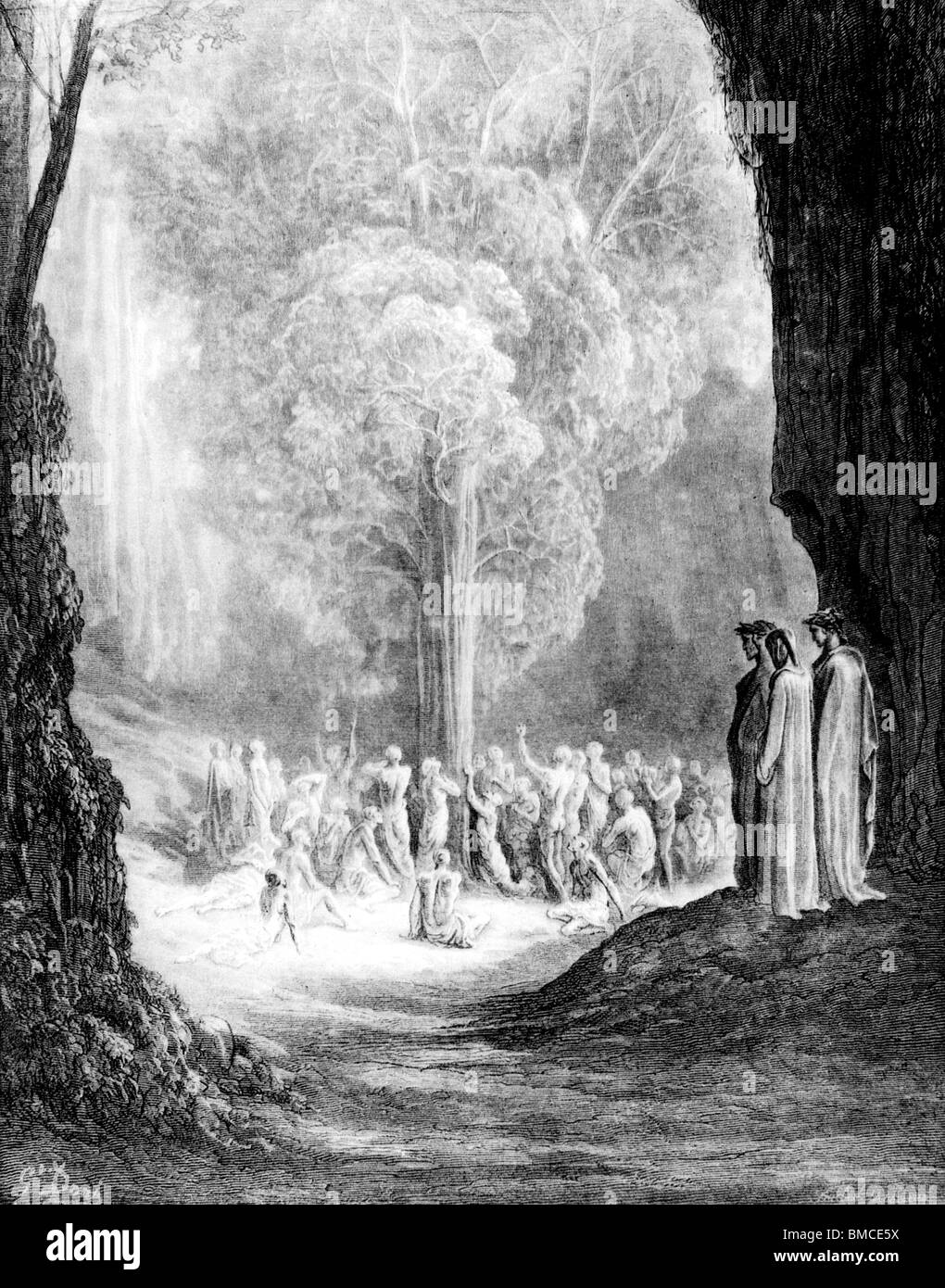 Tantalus torments at the tree Stock Photohttps://www.alamy.com/image-license-details/?v=1https://www.alamy.com/stock-photo-tantalus-torments-at-the-tree-29778054.html
Tantalus torments at the tree Stock Photohttps://www.alamy.com/image-license-details/?v=1https://www.alamy.com/stock-photo-tantalus-torments-at-the-tree-29778054.htmlRMBMCE5X–Tantalus torments at the tree
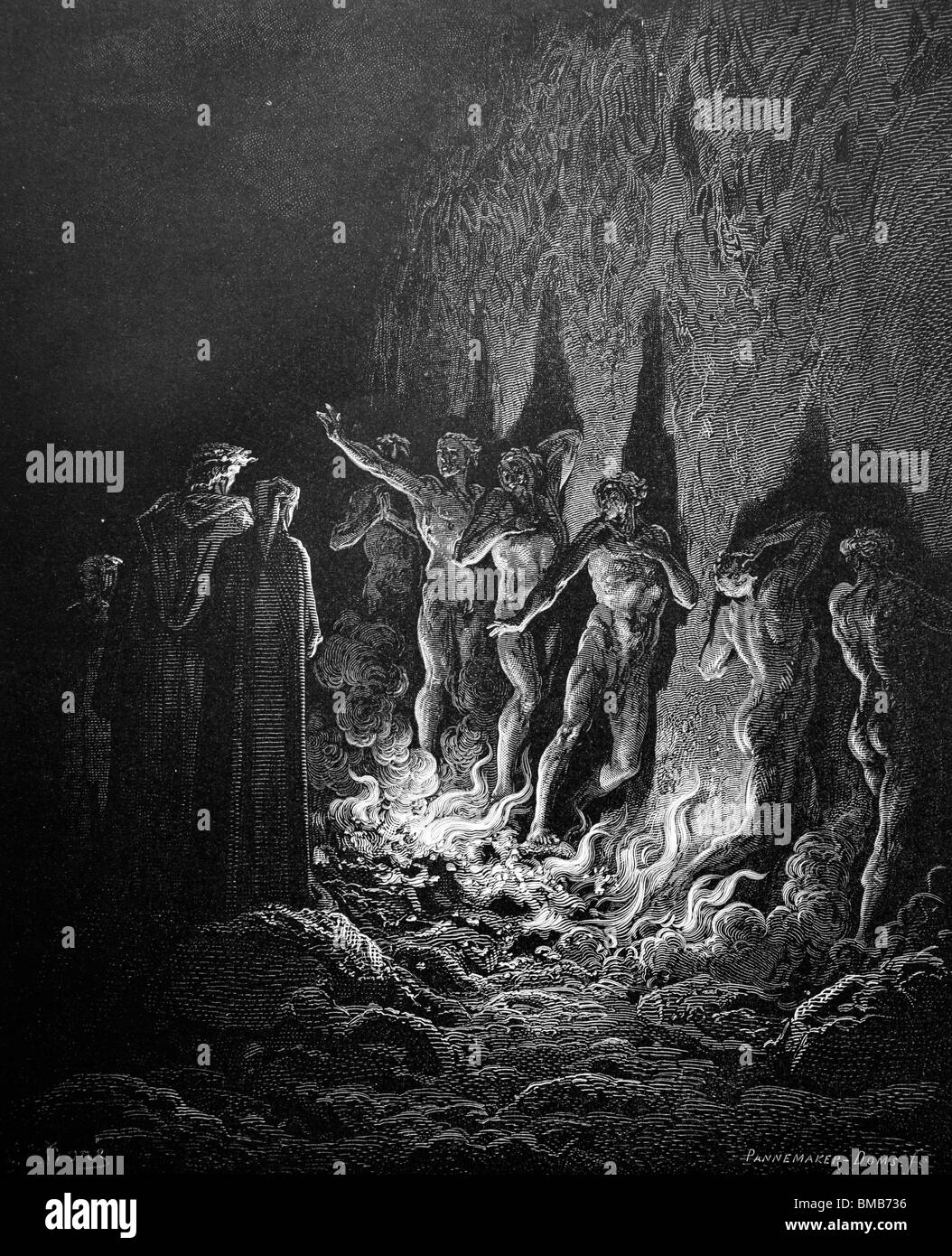 Engraving by Gustave Doré from Dante Alighieri's Divine Comedy; Dante, Virgil and Statius with the Souls of the Lustful Stock Photohttps://www.alamy.com/image-license-details/?v=1https://www.alamy.com/stock-photo-engraving-by-gustave-dor-from-dante-alighieris-divine-comedy-dante-29750538.html
Engraving by Gustave Doré from Dante Alighieri's Divine Comedy; Dante, Virgil and Statius with the Souls of the Lustful Stock Photohttps://www.alamy.com/image-license-details/?v=1https://www.alamy.com/stock-photo-engraving-by-gustave-dor-from-dante-alighieris-divine-comedy-dante-29750538.htmlRMBMB736–Engraving by Gustave Doré from Dante Alighieri's Divine Comedy; Dante, Virgil and Statius with the Souls of the Lustful
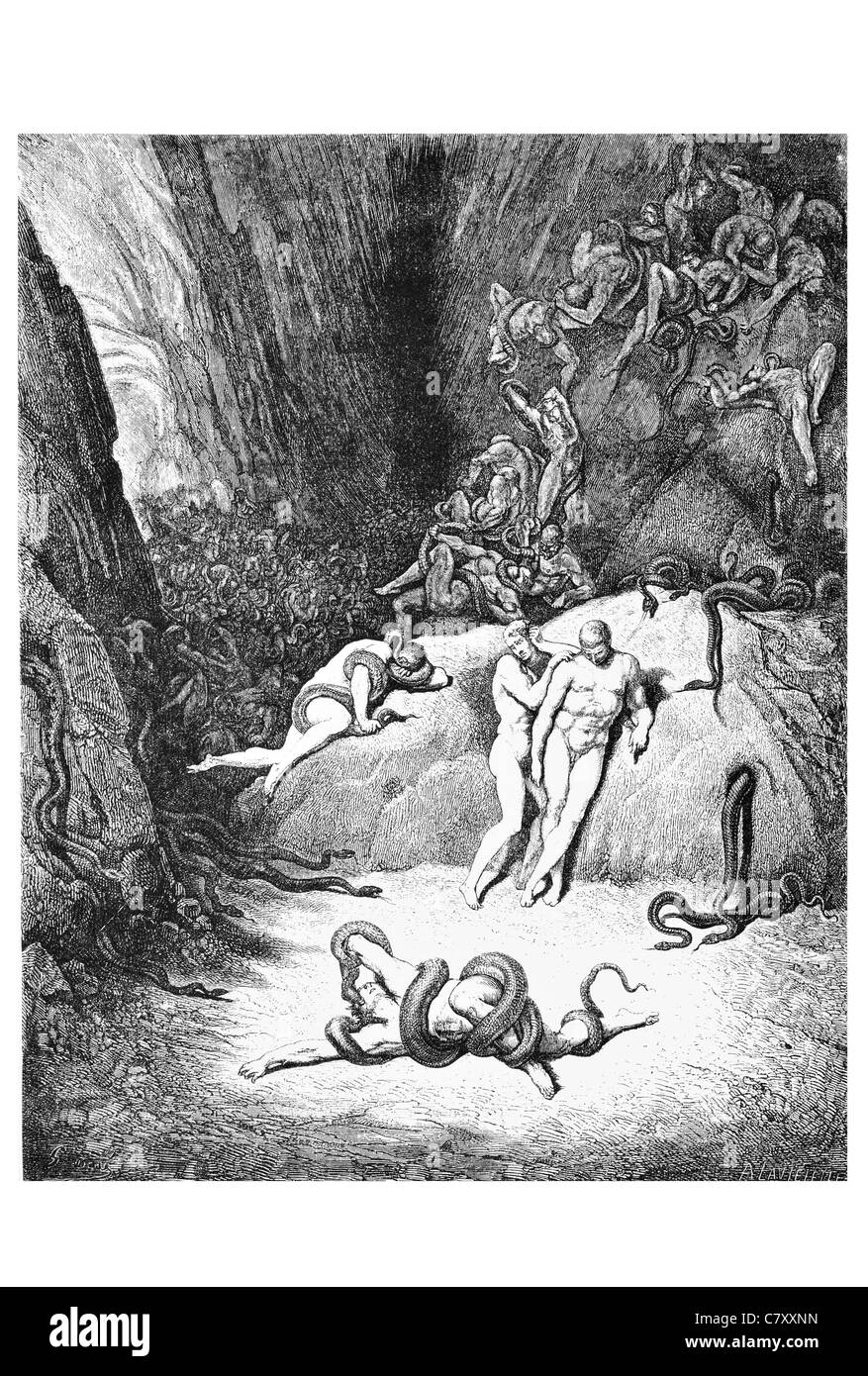 The other two looked on exclaiming Ah how dost thou change Agnello serpent serpents snake snakes torture Stock Photohttps://www.alamy.com/image-license-details/?v=1https://www.alamy.com/stock-photo-the-other-two-looked-on-exclaiming-ah-how-dost-thou-change-agnello-39315073.html
The other two looked on exclaiming Ah how dost thou change Agnello serpent serpents snake snakes torture Stock Photohttps://www.alamy.com/image-license-details/?v=1https://www.alamy.com/stock-photo-the-other-two-looked-on-exclaiming-ah-how-dost-thou-change-agnello-39315073.htmlRMC7XXNN–The other two looked on exclaiming Ah how dost thou change Agnello serpent serpents snake snakes torture
 Purgatorio ('Purgatory') is the second part of Dante's Divine Comedy, following the Inferno, and preceding the Paradiso. The poem was written in the early 14th century. It is an allegory telling of the climb of Dante up the Mount of Purgatory, guided by the Roman poet Virgil, except for the last four cantos at which point Beatrice takes over as Dante's guide. Purgatory in the poem is depicted as a mountain in the Southern Hemisphere, consisting of a bottom section (Ante-Purgatory), seven levels of suffering and spiritual growth (associated with the seven deadly sins), and finally the Earthly P Stock Photohttps://www.alamy.com/image-license-details/?v=1https://www.alamy.com/purgatorio-purgatory-is-the-second-part-of-dantes-divine-comedy-following-the-inferno-and-preceding-the-paradiso-the-poem-was-written-in-the-early-14th-century-it-is-an-allegory-telling-of-the-climb-of-dante-up-the-mount-of-purgatory-guided-by-the-roman-poet-virgil-except-for-the-last-four-cantos-at-which-point-beatrice-takes-over-as-dantes-guide-purgatory-in-the-poem-is-depicted-as-a-mountain-in-the-southern-hemisphere-consisting-of-a-bottom-section-ante-purgatory-seven-levels-of-suffering-and-spiritual-growth-associated-with-the-seven-deadly-sins-and-finally-the-earthly-p-image358673695.html
Purgatorio ('Purgatory') is the second part of Dante's Divine Comedy, following the Inferno, and preceding the Paradiso. The poem was written in the early 14th century. It is an allegory telling of the climb of Dante up the Mount of Purgatory, guided by the Roman poet Virgil, except for the last four cantos at which point Beatrice takes over as Dante's guide. Purgatory in the poem is depicted as a mountain in the Southern Hemisphere, consisting of a bottom section (Ante-Purgatory), seven levels of suffering and spiritual growth (associated with the seven deadly sins), and finally the Earthly P Stock Photohttps://www.alamy.com/image-license-details/?v=1https://www.alamy.com/purgatorio-purgatory-is-the-second-part-of-dantes-divine-comedy-following-the-inferno-and-preceding-the-paradiso-the-poem-was-written-in-the-early-14th-century-it-is-an-allegory-telling-of-the-climb-of-dante-up-the-mount-of-purgatory-guided-by-the-roman-poet-virgil-except-for-the-last-four-cantos-at-which-point-beatrice-takes-over-as-dantes-guide-purgatory-in-the-poem-is-depicted-as-a-mountain-in-the-southern-hemisphere-consisting-of-a-bottom-section-ante-purgatory-seven-levels-of-suffering-and-spiritual-growth-associated-with-the-seven-deadly-sins-and-finally-the-earthly-p-image358673695.htmlRF2BREYXR–Purgatorio ('Purgatory') is the second part of Dante's Divine Comedy, following the Inferno, and preceding the Paradiso. The poem was written in the early 14th century. It is an allegory telling of the climb of Dante up the Mount of Purgatory, guided by the Roman poet Virgil, except for the last four cantos at which point Beatrice takes over as Dante's guide. Purgatory in the poem is depicted as a mountain in the Southern Hemisphere, consisting of a bottom section (Ante-Purgatory), seven levels of suffering and spiritual growth (associated with the seven deadly sins), and finally the Earthly P
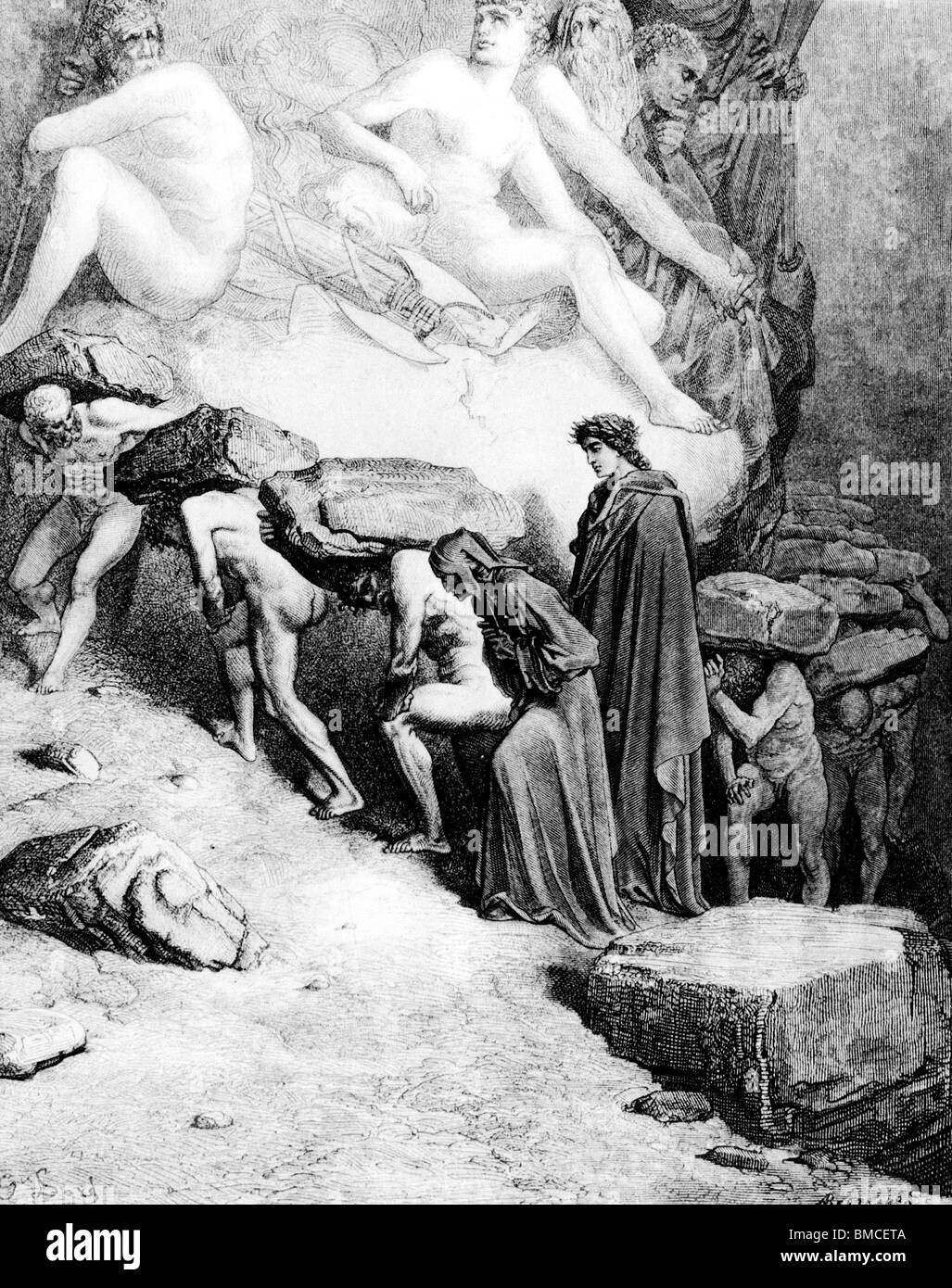 The proud with heavy rocks Stock Photohttps://www.alamy.com/image-license-details/?v=1https://www.alamy.com/stock-photo-the-proud-with-heavy-rocks-29778570.html
The proud with heavy rocks Stock Photohttps://www.alamy.com/image-license-details/?v=1https://www.alamy.com/stock-photo-the-proud-with-heavy-rocks-29778570.htmlRMBMCETA–The proud with heavy rocks
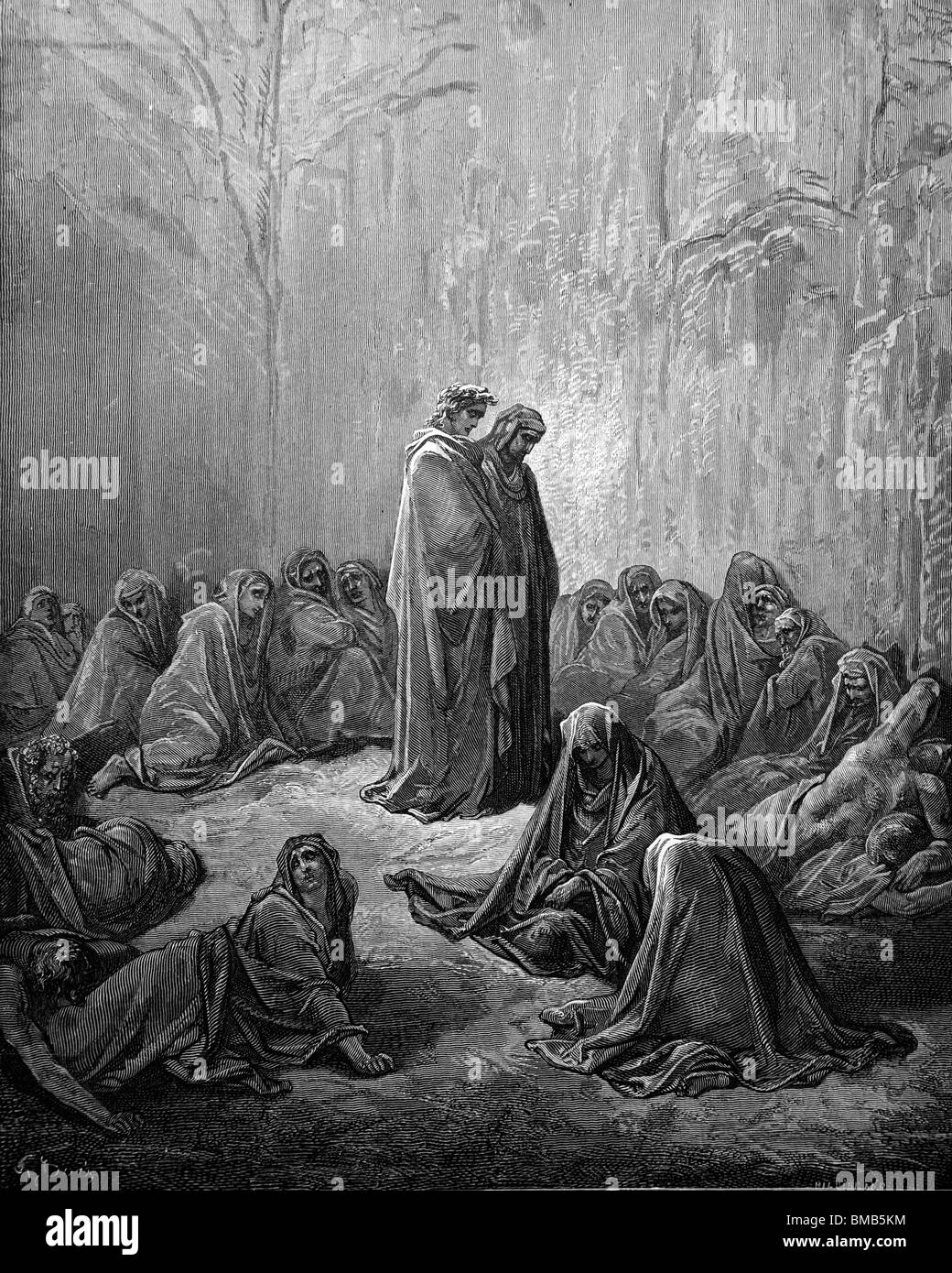 Engraving by Gustave Doré from Dante Alighieri's Divine Comedy 'Purgatory and Paradise'; Dante and Virgil meet the Envious Stock Photohttps://www.alamy.com/image-license-details/?v=1https://www.alamy.com/stock-photo-engraving-by-gustave-dor-from-dante-alighieris-divine-comedy-purgatory-29749432.html
Engraving by Gustave Doré from Dante Alighieri's Divine Comedy 'Purgatory and Paradise'; Dante and Virgil meet the Envious Stock Photohttps://www.alamy.com/image-license-details/?v=1https://www.alamy.com/stock-photo-engraving-by-gustave-dor-from-dante-alighieris-divine-comedy-purgatory-29749432.htmlRMBMB5KM–Engraving by Gustave Doré from Dante Alighieri's Divine Comedy 'Purgatory and Paradise'; Dante and Virgil meet the Envious
 Dungeon prison prisoner then not to make them sadder I kept down my spirit in stillness Stock Photohttps://www.alamy.com/image-license-details/?v=1https://www.alamy.com/stock-photo-dungeon-prison-prisoner-then-not-to-make-them-sadder-i-kept-down-my-39315184.html
Dungeon prison prisoner then not to make them sadder I kept down my spirit in stillness Stock Photohttps://www.alamy.com/image-license-details/?v=1https://www.alamy.com/stock-photo-dungeon-prison-prisoner-then-not-to-make-them-sadder-i-kept-down-my-39315184.htmlRMC7XXWM–Dungeon prison prisoner then not to make them sadder I kept down my spirit in stillness
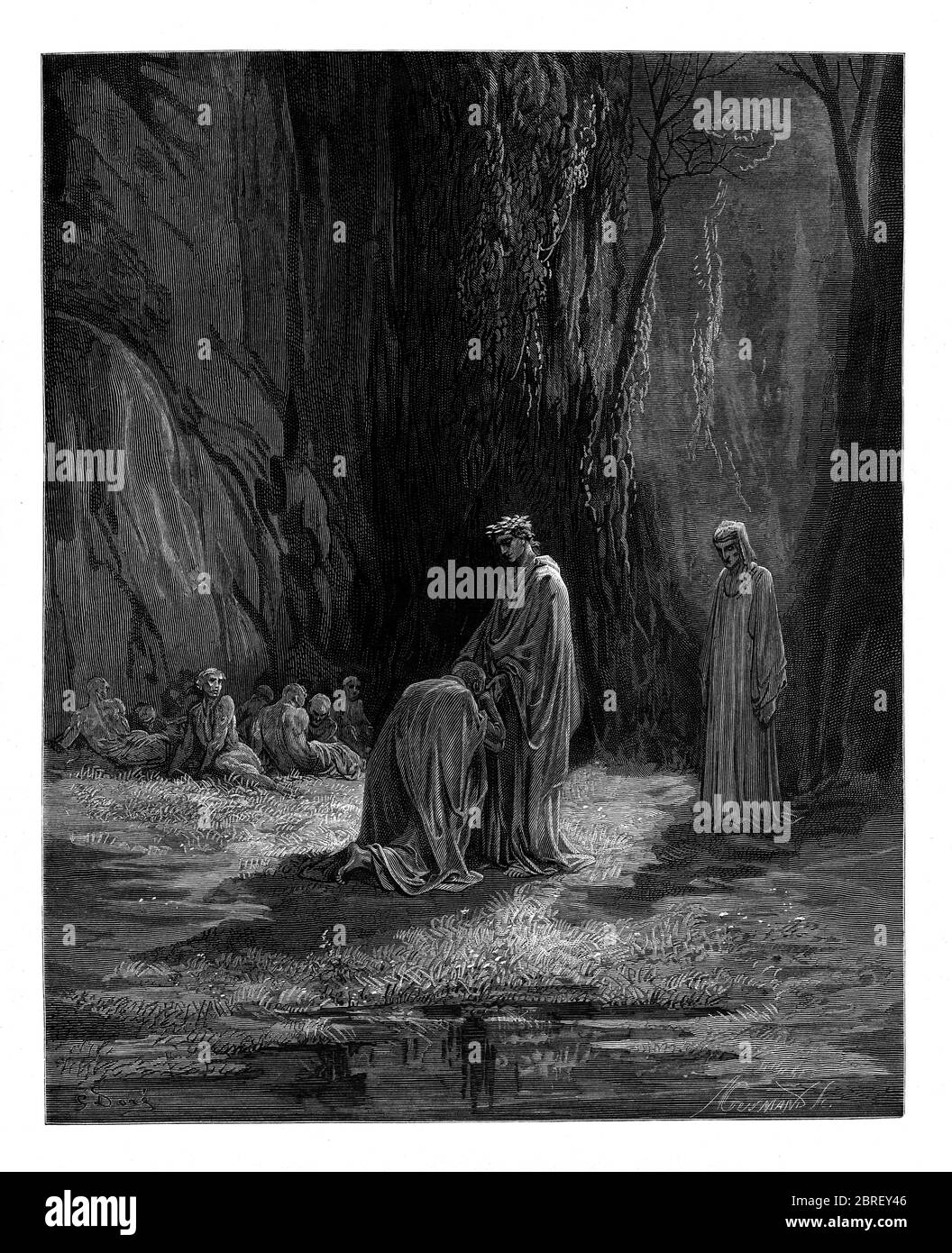 Purgatorio ('Purgatory') is the second part of Dante's Divine Comedy, following the Inferno, and preceding the Paradiso. The poem was written in the early 14th century. It is an allegory telling of the climb of Dante up the Mount of Purgatory, guided by the Roman poet Virgil, except for the last four cantos at which point Beatrice takes over as Dante's guide. Purgatory in the poem is depicted as a mountain in the Southern Hemisphere, consisting of a bottom section (Ante-Purgatory), seven levels of suffering and spiritual growth (associated with the seven deadly sins), and finally the Earthly P Stock Photohttps://www.alamy.com/image-license-details/?v=1https://www.alamy.com/purgatorio-purgatory-is-the-second-part-of-dantes-divine-comedy-following-the-inferno-and-preceding-the-paradiso-the-poem-was-written-in-the-early-14th-century-it-is-an-allegory-telling-of-the-climb-of-dante-up-the-mount-of-purgatory-guided-by-the-roman-poet-virgil-except-for-the-last-four-cantos-at-which-point-beatrice-takes-over-as-dantes-guide-purgatory-in-the-poem-is-depicted-as-a-mountain-in-the-southern-hemisphere-consisting-of-a-bottom-section-ante-purgatory-seven-levels-of-suffering-and-spiritual-growth-associated-with-the-seven-deadly-sins-and-finally-the-earthly-p-image358673062.html
Purgatorio ('Purgatory') is the second part of Dante's Divine Comedy, following the Inferno, and preceding the Paradiso. The poem was written in the early 14th century. It is an allegory telling of the climb of Dante up the Mount of Purgatory, guided by the Roman poet Virgil, except for the last four cantos at which point Beatrice takes over as Dante's guide. Purgatory in the poem is depicted as a mountain in the Southern Hemisphere, consisting of a bottom section (Ante-Purgatory), seven levels of suffering and spiritual growth (associated with the seven deadly sins), and finally the Earthly P Stock Photohttps://www.alamy.com/image-license-details/?v=1https://www.alamy.com/purgatorio-purgatory-is-the-second-part-of-dantes-divine-comedy-following-the-inferno-and-preceding-the-paradiso-the-poem-was-written-in-the-early-14th-century-it-is-an-allegory-telling-of-the-climb-of-dante-up-the-mount-of-purgatory-guided-by-the-roman-poet-virgil-except-for-the-last-four-cantos-at-which-point-beatrice-takes-over-as-dantes-guide-purgatory-in-the-poem-is-depicted-as-a-mountain-in-the-southern-hemisphere-consisting-of-a-bottom-section-ante-purgatory-seven-levels-of-suffering-and-spiritual-growth-associated-with-the-seven-deadly-sins-and-finally-the-earthly-p-image358673062.htmlRF2BREY46–Purgatorio ('Purgatory') is the second part of Dante's Divine Comedy, following the Inferno, and preceding the Paradiso. The poem was written in the early 14th century. It is an allegory telling of the climb of Dante up the Mount of Purgatory, guided by the Roman poet Virgil, except for the last four cantos at which point Beatrice takes over as Dante's guide. Purgatory in the poem is depicted as a mountain in the Southern Hemisphere, consisting of a bottom section (Ante-Purgatory), seven levels of suffering and spiritual growth (associated with the seven deadly sins), and finally the Earthly P
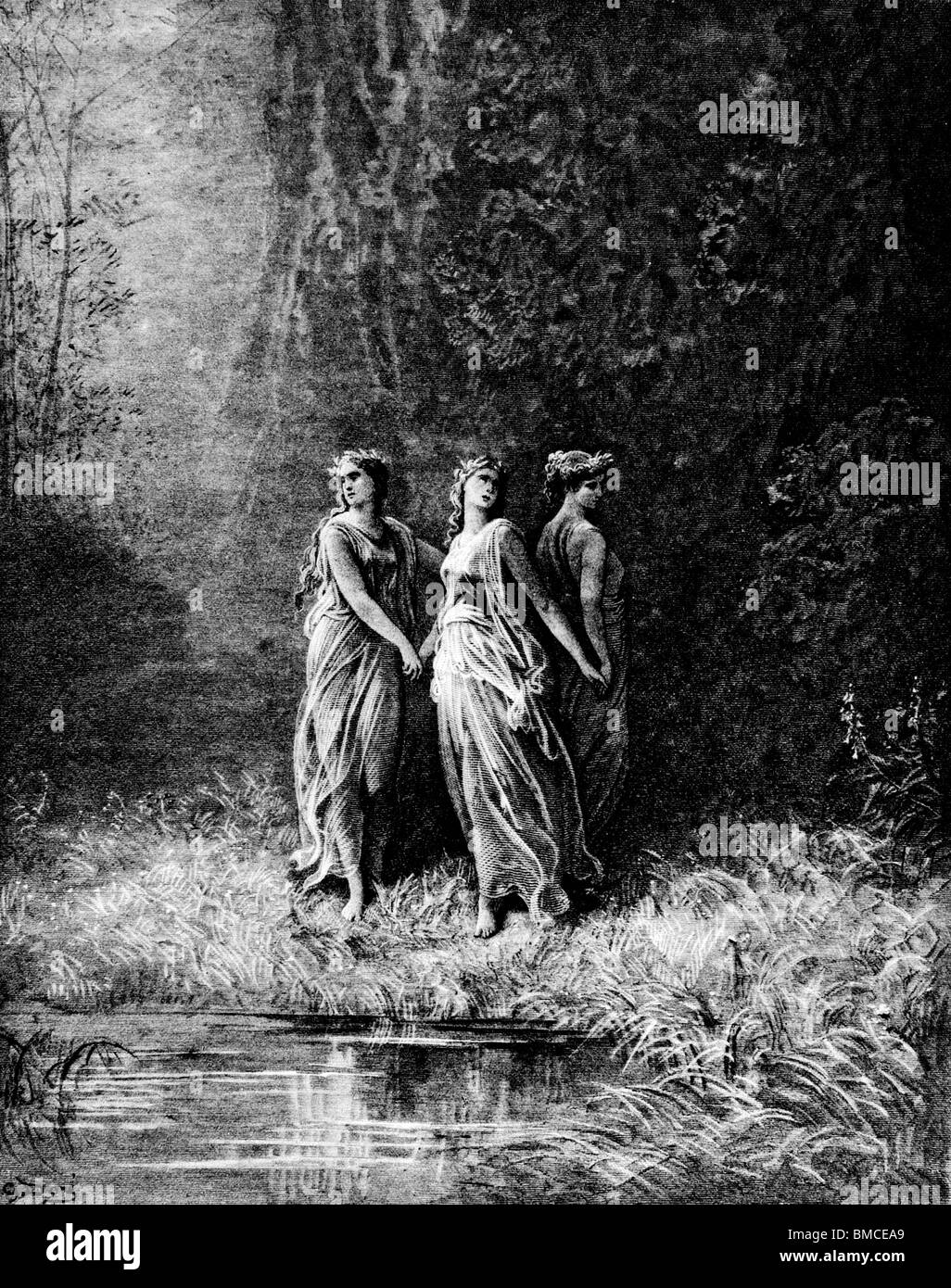 Dancing women at the chariot Stock Photohttps://www.alamy.com/image-license-details/?v=1https://www.alamy.com/stock-photo-dancing-women-at-the-chariot-29778177.html
Dancing women at the chariot Stock Photohttps://www.alamy.com/image-license-details/?v=1https://www.alamy.com/stock-photo-dancing-women-at-the-chariot-29778177.htmlRMBMCEA9–Dancing women at the chariot
 Engraving by Gustave Doré from Dante Alighieri's Divine Comedy 'Purgatory and Paradise'; Dante On the Terrace of the Wrathful Stock Photohttps://www.alamy.com/image-license-details/?v=1https://www.alamy.com/stock-photo-engraving-by-gustave-dor-from-dante-alighieris-divine-comedy-purgatory-29749469.html
Engraving by Gustave Doré from Dante Alighieri's Divine Comedy 'Purgatory and Paradise'; Dante On the Terrace of the Wrathful Stock Photohttps://www.alamy.com/image-license-details/?v=1https://www.alamy.com/stock-photo-engraving-by-gustave-dor-from-dante-alighieris-divine-comedy-purgatory-29749469.htmlRMBMB5N1–Engraving by Gustave Doré from Dante Alighieri's Divine Comedy 'Purgatory and Paradise'; Dante On the Terrace of the Wrathful